1. INTRODUCTION
When we say plant (tumbuhan) most people would relate to the green plants and that they would normally have leaves, trunk and roots. Flowers and fruits are associated as parts and products of plants. Young and old could easily differentiate between plants and animals. Plants are mainly static with roots embedded in the soil, whereas animals could move around. Structurally, animals will have arms, legs, eyes, ears and could respond actively towards stimuli. Plants apparently do not respond and move, since they do not have sensory organs such as eyes and ears and mobility organs such as legs and arms. And most would say that plants are living things and thus breathe, breed and die.
Scientifically there many more differences between plants and animals, the most basic being the ability of plants to make their own food by the photosynthetic process. Using water absorbed from the soil through their root systems, and carbon dioxide that goes into the leaves surface through the stomata (openings on leave surfaces), energy obtained from the sun (trapped by the green pigment called chlorophyll) will synthesise the elements into carbohydrates with oxygen and water as wastes or by-products. This oxygen is emitted out through the stomata into the air, supplying and replenishing more oxygen needed for the process of breathing by all living organisms, including the plants themselves. Carbohydrates formed in the leaves will be transported to all parts of the plants to provide food for the cells to grow and live. Carbohydrates will be used to form plant parts such as the cell walls and production of flowers and fruits.
Plants do move, but their movement is not active and only to respond to particular stimuli. As example plant roots will move towards source of water (hydrotropism), whilst shoots and young leaves will grow towards sun light (phototropism). One example of plant that responds extremely to stimuli is Mimosa pudica, wherein leaf closes once it is touched, or the Nepenthes sp. (pitcher plant), wherein its lid closes when insects fall inside the cup. The insects will then be ‘digested’ and becomes an important source of nutrients for the plants.
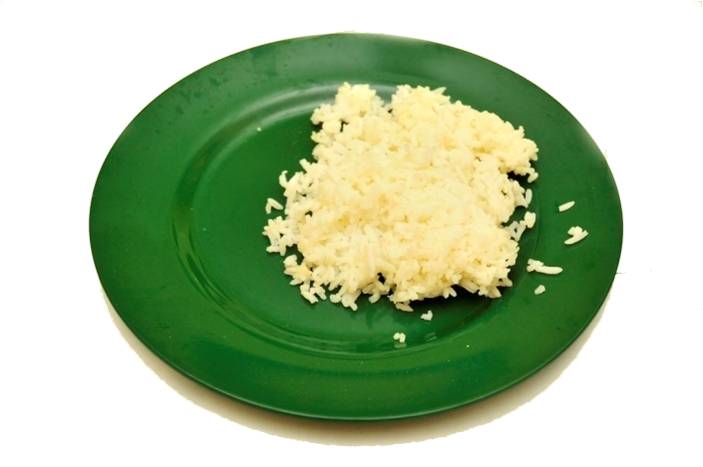
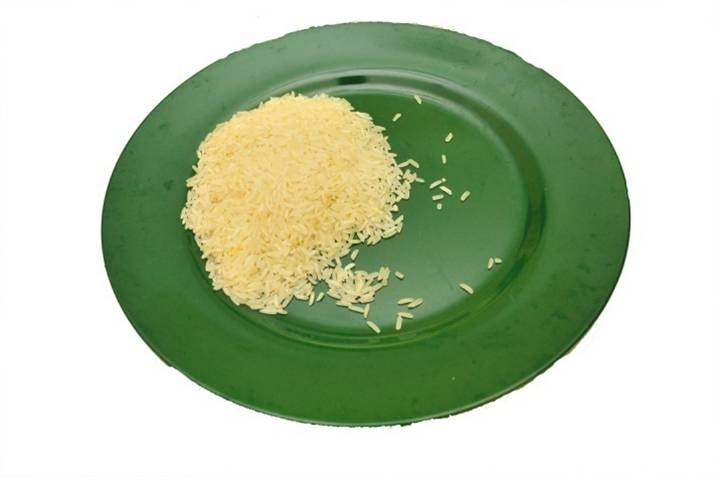
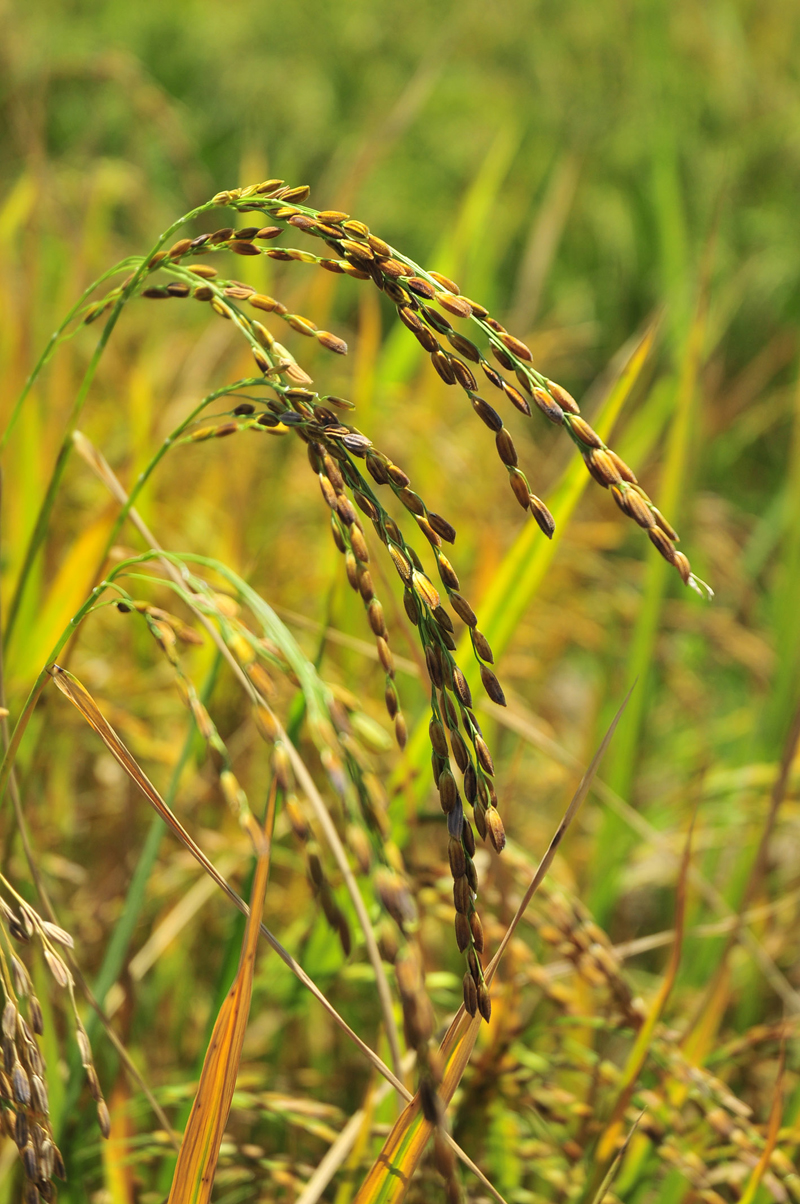
Oryza sativa produces paddy, grains are seen hanging from its stem.
To Malaysians, plants are considered important as they provide for their survival. Plants are the main source of food. Rice (Fig. 1) which is the staple food for Malaysians is from paddy (Fig. 3) that has been husked and polished (Fig. 2). Paddy is the fruit of a species of plant called Oryza sativa. Other food sources derived from plants are vegetables, legumes, tubers and fruits.
Plants also provide shelter. Since ancient time, people in Malaysia had been using wood obtained from certain plant groups to construct houses and buildings. In a village, from olden days until to this day, one can see houses made of wood such as this one in Fig. 4. The wall, flooring and poles of this house came from hardwood tree group call the Dipterocarps. Besides dipterocarps, other plants that could be useful are coconut trunk, bamboo and nibong. This wooden house has roof made of zinc. In olden days, roof were made of thatched leaves of rumbia or nipah (nypa). However, for better longer lasting roof, zinc has replaced nypa.
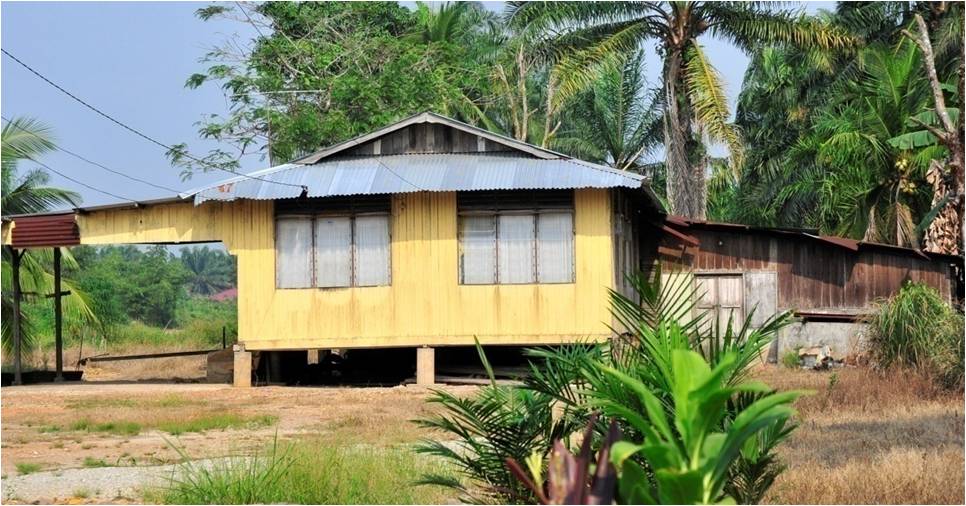
Wood from certain trees could provide building materials for the construction of sampan and boats. Sampans are small rowing boats used for communication on rivers and as traditional vehicles during olden days when roads were not available and the people’s only means of communication and transportation is through the river system. These sampans are also used for fishing in rivers or even in the sea. Mostly these sampans will rely on the manual power of people. However as time goes by, these small simple sampans are replaced by boats with engine using petrol for energy. In Fig.5 a sampan is shown and Fig. 6 shows a motor engine powered sampan. With bigger and more powerful sampan or boats people could travel far and do more fishing in deeper seas.
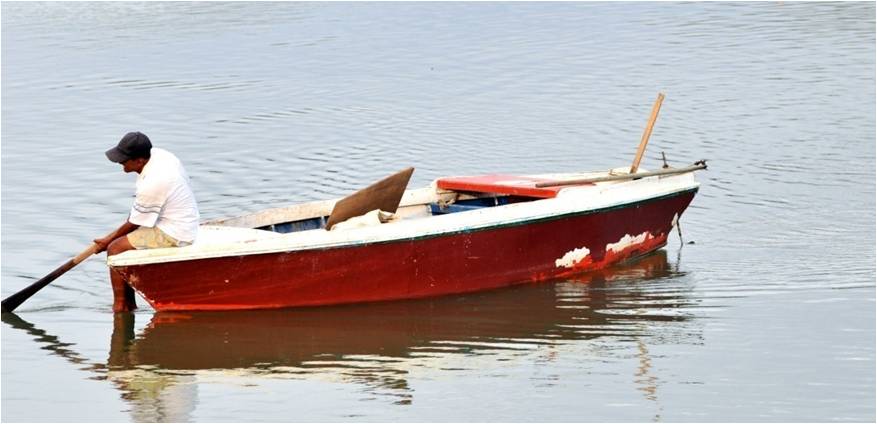
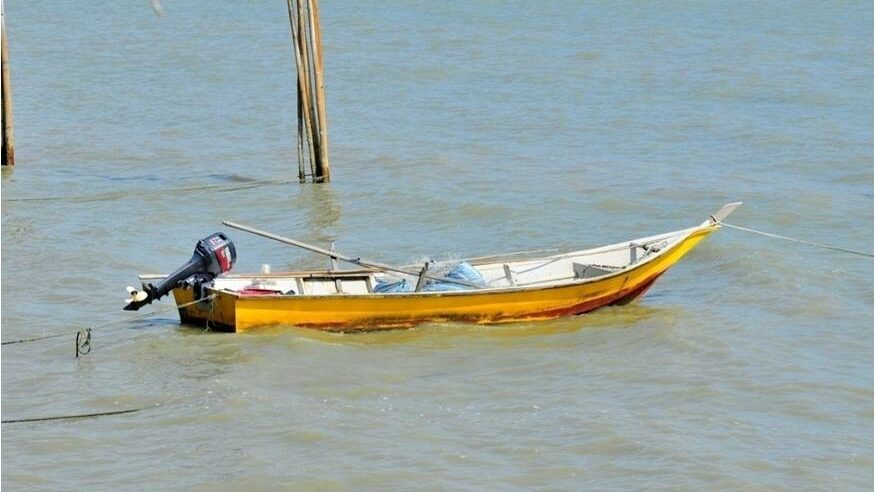
Besides providing for food, construction materials for shelter and vehicle, medicines are also derived from plants. During the olden days, Malaysians depend on several plant species for medication. One such popular species is the common ginger, Zingiber officinale (Fig. 7) which is used when one has a flatulent. By drinking water boiled with ginger, the “wind” (air) in the stomach will ease off. Another species of plant well known to stop minor bleeding is the senduduk (Melastoma malabathricum), which leaves are chewed and the pulp patched on to the wound. Sulaiman et al., (2004), [1] noted that crude extract prepared from leaves and roots of this plant species is used to relieve toothache and used externally against different types of inflamed wounds (Fig 8).
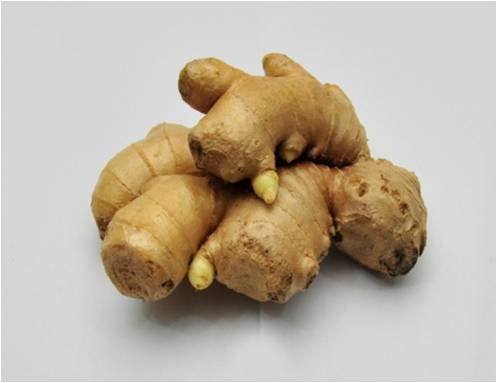
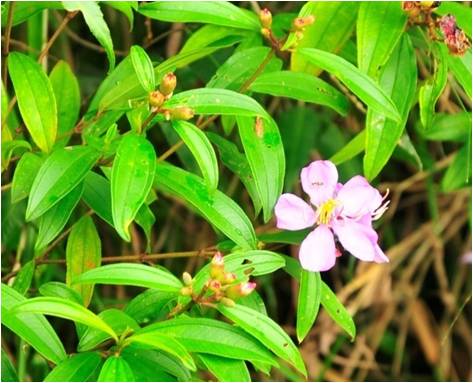
Most Malaysians could relate to a forest. Some older Malaysians regard forest highly as they believe that their ancestors owed much to the forest: it provides shelter, food and medication. Some would even believe that there were spirits guarding the trees of the forest. [2] These spirits look after the forest and would punish those who destroy the trees of the forest. To this day, certain ethnic groups consider certain plant species as sacred. To the Hindus they would normally place their deity and praying area under or very near big trees such as of genus Ficus (Fig. 9).
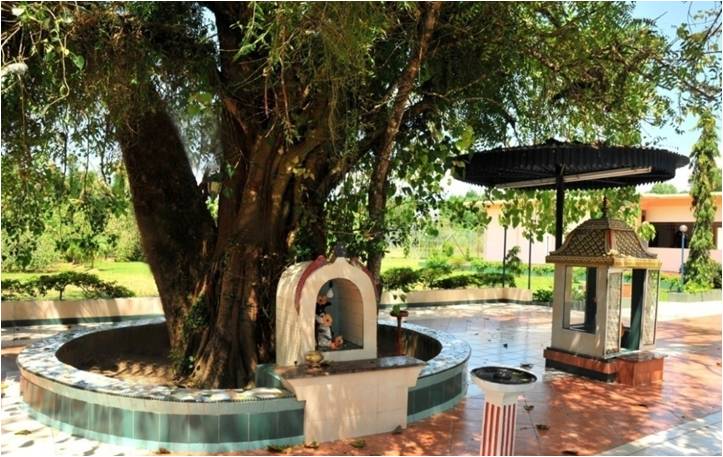
Today younger Malaysians understand better the roles and functions of the forest and regard them as doing ecological services that maintain the planet earth. Besides, forest with its cool ambience, and a waterfall or river flowing by, have provided for recreational grounds for Malaysian (Fig. 10).
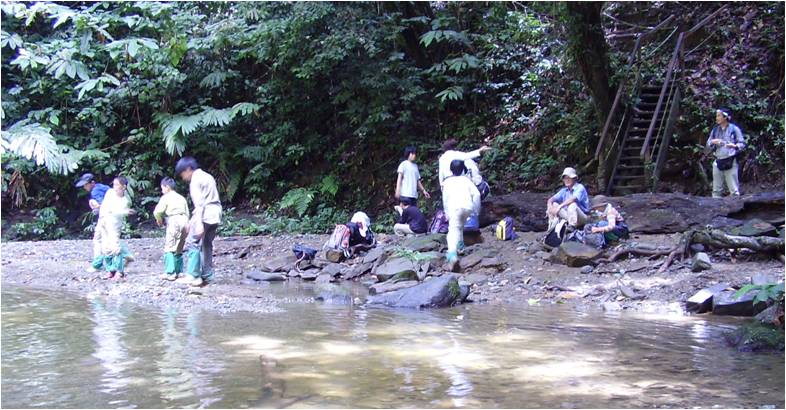
Tumbuhan (plants) is an important component of biodiversity. There are more than 275,000 species of vascular plants in the world today, and new species are still being discovered. An example is the pitcher plant Nepenthes from the family Nepentheceae. Clarke & Chien Lee (2004) [3] stated that at present, there are roughly 85 recognised species and new species are being described at a rate of 1-2 per year. A two years study on Plagiostachys of the ginger family (Zingiberaceae) in Sabah led to a discovery of seven new species and a new variety. [4]
Loss of biodiversity has become a universal issue recognised not only by researchers and scientists but more importantly by the general public. Recently, loss of biodiversity has been linked to the problems of the environment and various global efforts (egs. Convention on Biological Diversity, Ramsar Convention) have been formulated in order to secure long-term survival and continuing evolution of plants and animals and their harmonious existence with human.
People’s dependence on plants and plant products are unprecedented and can be traced back since time immemorial. Table 1 summarises the earliest record of man’s domestication of plants.
Table 1 : A summary of man’s domestication of plants.[5]
| Period | Operator | Objective | Time Scale |
| To 1850 AD | “Primitive” or “traditional” peasant farmer | Next crop | 1 year |
| From 1850 | Plant breeder | Next variety | 10 years |
| From 1900 | Crop evolutionist | To broaden the genetic base | 100 years |
As seen in Fig. 11, from using hand tools like spades and hoe in the early days, and at times employing animals such as buffaloes and cows, modern farmers are now employing sophisticated machinery to work their land. Their dependence on plants for food, medicines and other uses will never end. However, despite this huge dependence on plants, it is also human activities that had negatively affect plant biodiversity. A well quoted example is the clearing and opening of forested land to pave way for socio-economic development (residential areas, administrative facilities and plantations) leads to loss of plant biodiversity, the rich genetic pool. Invasive species are also driving native species to extinction. There is a real need to raise public awareness and educate people on the importance of conserving plant biodiversity.
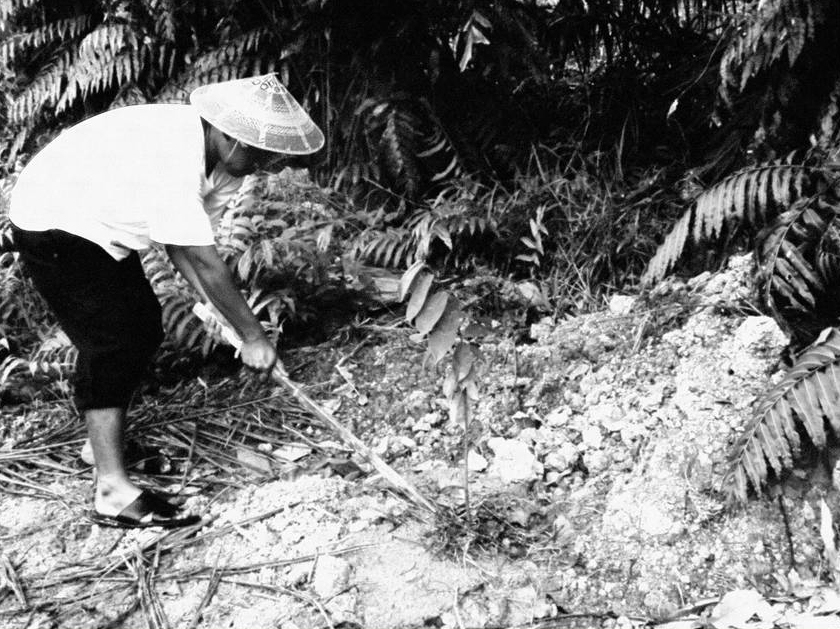
WHAT ARE PLANTS?
Plants are the primary producers and are basal to almost all food chains in the terrestrial ecosystem. Plant life constitutes more than 90% of the total biomass (collective dry weight of living organisms) of the earth. Plants have the exclusive capacity to produce oxygen while converting the sun’s energy into forms vital to the existence of both plant and animal life. At the same time, plants remove the large amounts of carbon dioxide in the atmosphere. In simple words, virtually all living organisms, human included, are totally dependent on plants for their existence.
The first living organisms appeared on earth 3,800 million years ago as primitive, single-celled life forms living in the aquatic ecosystems. This is followed by the earliest Cyanobacteria or blue green algae that are able to harness the sun’s energy to produce food, a process known as photosynthesis, producing end product, oxygen that gradually accumulated in the earth’s atmosphere, [6] enabling life forms to invade terrestrial ecosystems.
From the aquatic environment, plants began invading the terrestrial ecosystem. Land plants evolved more than 500 million years ago. Speciation occurred and today plants are very diverse. From simple organisms in the form of liverworts and mosses, land plants evolved into more complex forms as horsetail and ferns. Liverworts and mosses do not have vascular bundles. Water intake and food distribution are done by the simple plant parts of liverworts and mosses. In ferns however, the increase in size and morphological complexity require vascular bundles. These bundles are made of phloem and xylem. Xylem will take up water from the roots to be brought to the leaves where photosynthesis takes place. Carbohydrates formed from the process which will then be distributed to all parts of the plant by phloem.
For both groups, the mosses, liverworts (Bryophyta) and ferns (Pteridophyta) reproduction are carried out simply by spores not by seeds. Thus, they are considered as lower plants. Plants with special reproductive organ evolved about 290 million years ago in the form of Gymnospermae. Since they are non-flowering, the reproductive unit/organ that is the seed, is still in a primitive state of not being enclosed by other plant parts. Thus they are referred to as naked seed. In the pine trees, seeds are borne as cones. The more complex plant group that we recognise today is the flowering plants or Angiospermae. In this group of plant, when ovary of the flower matures, seeds are then enclosed in fruits. Angiospermae evolved about 145 million years ago. Fig. 12 shows a summary of plant evolution.

2. PLANT GROUPS IN MALAYSIA
Due to numerous kinds of plants, a system of classification has been developed to aid not only the scientists and researchers but also the public on the identification of plants (Fig. 13). Botanically, plants are broadly divided into two kinds: lower plants or the non-seed or spore bearing plants and higher plants or the seed bearing plants. The most common examples of lower plants are mosses (lumut) and ferns (paku pakis). These types of plants do not have seeds and they reproduce using spores; they do not produce flowers, hence no fruits.
Although, blue green algae are technically plants due to the presence of chlorophyll that enable them to photosynthesise, they are systematically placed in the Protista kingdom because they are single-celled organisms. Some works that had been done on algae diversity in Malaysia included those in Maliau Basin [8] and Tabin [9] (Sabah), Selai (Endau Rompin, Johor) [10], and Wang Kelian (Kedah) in Peninsular Malaysia [11].
More research had been carried out on mosses and these included in Maliau Basin [12] and Lower Kinabatangan (Sabah) [13], Gunung Stong (Kelantan) [14], Wang Kelian, Wang Mu (Kedah) [15] [16] and Endau Rompin (Johor) [17] in Peninsular Malaysia.
Studies on ferns and its allies too are fairly many as illustrated by work in Maliau Basin [18], Tabin [19] and Kinabalu Parks(Sabah) [20], Gunung Stong (Kelantan) [21], Wang Kelian [22], Wang Mu (Kedah) [23] and Endau Rompin(Johor) [24] in Peninsular Malaysia. Table 2 summarises the findings of some research on the three non-seed bearing plant groups in Malaysia.
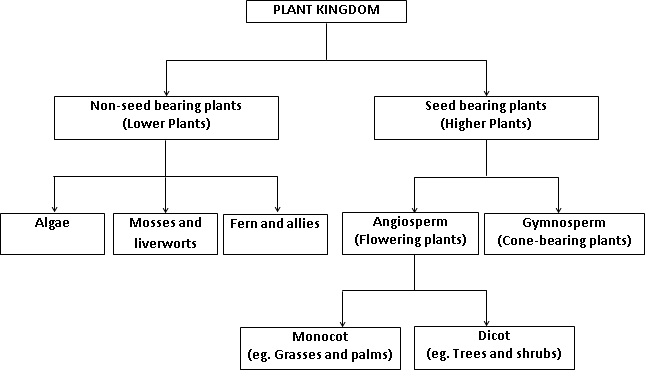
Table 2 : Some findings on diversity of non-seed bearing plants in Malaysia (from various sources – see list of references).
| No. | Place | Algae | Mosses | Fern / Fern allies |
| 1 | Maliau Basin, Sabah | 35 spp.6 | 5 spp.; 22 genera11 | 34 spp.; 26 genera; 14 families 2 genera; 2 families (fern allies)17 |
| 2 | Tabin Wildlife Sanctuary, Sabah | 25 spp.8 | N/A | 65 spp. 19 families 18 |
| 3 | Lower Kinabatangan, Sabah | N/A | 47spp.; 24 genera; 12 families12 | N/A |
| 4 | Kinabalu Park, Sabah | N/A | N/A | 608 spp.19 |
| 5 | Gunung Stong, Kelantan | N/A | 150spp.; 60 genera; 28 families13 | 80 taxa; 48 genera; 24 families20 |
| 6 | Wang Kelian,Kedah | 56 spp.10 | 71 spp.; 36 genera; 19 families14 | 57spp. ferns; 9 spp. fern allies21 |
| 7 | Wang Mu, Kedah | N/A | 56 spp.; 28 genera; 13 families15 | 39 spp.; 22 genera; 15 families22 |
| 8 | Endau Rompin, Johor | 91 spp.9 | 168spp.; 70 genera; 25families16 | 98spp.; 53 genera ;23 families 7spp. fern allies 23 |
The larger group are the seed plants, which is subdivided into gymnosperms and angiosperms. Gymnosperms are also commonly called as cone-bearing plants. Although, they produce fruits, they do not produce flowers, hence no fruit to enclose their seeds. They are also referred to as “naked seeds”. Examples of cone bearing plants are the pines that grow well on our highlands.
Angiosperms are the flowering plants and the most abundant plants in our environment. The main characteristic of angiosperm is their ability to produce flowers that later develop into fruit, hence seeds are borne inside the fruit. Angiosperms have also both the single seed-leaf (cotyl) group (Monocotyledonae) and two seed-leaf group (Dicotyledonae). Monocots are the likes of palms, grasses, banana, and gingers, while dicots are the common trees and shrubs abounding our environment.
In the following section major plant groups in Malaysia are described.
Bryophytes (mosses, liverworts, hornworts)
Mosses, liverworts and hornworts are classified as Bryophyta. They are plants with simple parts and reproduce using spores. They have leaf-like thallus and root-like rhizoids and scales performing the function of true roots.[25] Since they are simple they depend very much on the availability of water to survive. Thus, we could see them establishing well in moist, cool areas like montane forest and near riversides on rocks and other wet habitats.
Bryophytes stand in between pteridophytes (ferns and fern allies) and algae. As an example a character of bryophytes that resembles pteridophytes is that fertilisation of spores is affected in presence of water. An example of a character of bryophytes that resembles algae is that for both plant groups, roots and vascular bundles are absent [25].
In the world, there are about 15,000 species of bryophytes and in the the tropics there is an estimated 5,000 species. In Peninsular Malaysia alone there are than 520 species of mosses. Scientifically, mosses belong to the class Musci, liverworts to the class Hepaticae and hornworts, Antherocerotae [25].
Frahm et al., 1996 [26], listed various uses of bryophytes. Bryophyte plays important role in the water balance of ecosystem in the forests and bogs by storing large amount of water in their bodies. In tropical montane forest such as Kinabalu, where they study, byrophytes function as huge reservoirs supplying water to rivers and streams in a balanced manner throughout the year, not only store water as sponge but also prevent erosion by fixing uppermost soil especially in steep slopes. Moreover, bryophytes also provide microhabitats for other organisms, germination of seeds or as food. They also noted byrophytes has been used as stuffing materials for bedding, tighten walls and roofs of houses, and the in North America Eskimos use them as diapering material for babies.
Today, according to Frahm et al., 1996 [26] bryophytes has horticultural uses such as soil additives or recreation of moss garden like in Japan. In China, byrophytes are used as medicines with scientific basis from recent chemical studies. In addition, they noted that bryophytes have many biological active compounds that scientist use in genetics, physiology and ecological studies. Since many bryophytes react very sensitively to changes in ecosystems, they have been tested and successfully used as indicators for air and water pollution or for rare metals and minerals.
As bryophytes favour moist, cool ambience, Mount Kinabalu would be an ideal place for them. Frahm et al., 1996 [26] in their study at Kinabalu Park produces a checklist for Bryophytes of Kinabalu. For the class Musci (mosses) there are 46 families and 360 species, and for the class Hepaticae (liverworts and hornworts) there are 37 families and 415 species. In total, Kinabalu has 775 species and 83 families, and this comprises 5.2% of the global bryophyte flora.
As can be seen in Table 2, Gunung Stong and Endau Rompin have fairly large number of byrophytes species, more than 150. These areas are cool and moist, as compared to more exposed ecosystem, like the riverine ecosystem of Kinabatangan. Gunung Warpu of Lojing (south Kelantan) also shows many species of 105 taxa, 52 genera and 24 families of mosses [27]. Some species of mosses of Lojing are shown in a coffee table book by Omar & Maryati, 2008.[28]
Ferns
Although ferns are common, not many have realized their importance other than being ornamentals. Many species of ferns are edible, either eaten raw, cooked, preserved in brine, or pickled. In Malaysia, the most popular edible fern is Diplazium esculentum (lemiding), usually sold in bundles of freshly uncurled fronds and the tastiest among others. In other countries, ferns are brewed into a variety of beverages. In Europe, for example, the rhizomes of the bracken fern (Pteridium sp.) and male fern (Dryopteris filix-mas) are sometimes substituted for hops in the brewing of beer [29]. Ferns are also known for their medicinal properties. Various European, American, Asian, and African cultures have made use of ferns in their traditional medicines to cure ailments, rheumatism, bowel disorders, burns, sprains, ulcers, and even insect bites and stings. In addition, ferns are also used in handicrafts like baskets, hats and fancy cases. As for tree ferns (Cyathea), its durable stem can also be used as house post, fences and in bridge constructions.
Botanically, ferns are classified as Pteridophyta. Although most of them are vascular, they are still considered as lower plants since they do not produce seed and reproduce only through spores. In a way, they are like bryophytes (mosses). Since they do not produce seed, hence, they do not bear fruit. However, ferns resemble very much the fruit bearing plants. They have true roots and leaves and normally a short stem. Some stems creep and are called rhizomes.
Beaman & Edwards 2007 [30] noted a more recent classification where the living ferns are comprised of four classes, 11 orders and 37 families with living representatives of 11,500 species worldwide. They stated that Polypodiales constitute the largest order of fern thought to include more than 80% of living fern species. Of the 5,000 species of vascular plants at Kinabalu Parks, they noted 12% are ferns and created a checklist of 593 taxa [31]. Suzuki & Magintan 1999 [19] listed 65 species belonging to 19 families from Tabin Wildlife Reserve, Sabah (Table 2).
Wee 2005 [29] quoted a figure of 12,000 species where 500 native species had been recorded for Peninsular Malaysia. He also noted that this is huge when compared to England (having about the same land size as Malaysia) has only 54 species and Africa (about 20 times the size of Malaysia) has about the same number of species as Peninsular Malaysia. Currently, there are 1,165 species of pteridophytes in Malaysia: 647 species occur in Peninsular Malaysia, 750 in Sabah and 615 in Sarawak.
Sambamurthy 2005 [25], classified ferns into four classes: Psilotopsida, Lycopsida, Sphenopsida and Pteropsida.
Some common ferns found in Malaysia include the bird’s nest ferns (Asplenium nidus) which is an epiphyte normally found growing on large trees in the forest. However, this fern is now being cultured to grow in potted condition in the nursery. Another species which has the same habitat is the stag horn fern (Platycerium coronarium). In Malaysia it is common to see ferns of species Stenochlaena palustris (paku miding) (Fig. 16) sold in market. This fern has a coppery brown frond when young and it is delicious to just boil the young fronds in water together with sliced onion and garlic with some pounded anchovy or dried prawn. Another species normally eaten is the lemiding (Diplazium esculentum – Fig. 16). The young frond uncurled is best cooked with coconut milk and turmeric with pounded onion/shallot, garlic, dried prawns and galangal slices.
Wee, 2005 [29] stated the use of ferns as medicines for several diseases including Drynaria rigidula for venereal diseases in Malaysia; Adiantum capillus veneris and Ophioglossum for snake bites, as helminticides (Cyathea manniana, Dryopteris cristata (fronds), Lycopodium selago (spore), Acrostichum aureum, Blechnum orientale, Drynaria quercifolia, Pteridium aquilinum (rhizomes), Asplenium trichomanes soaked in wine to treat lumbago (China); Drynaria sparsisora rhizome pounded applied externally to reduce swollen limbs (Indonesia), Selaginella involvens (spikemoss) – treat various problems related to old age (China).
Besides the uses mentioned above, Wee 2005 [29] quoted ferns is also useful as fertilisers, in erosion control, as ornamental (the golden chicken of Cameron Highlands), in craft making, to produce ropes, baskets, hat, and stuff pillow (from the golden hairs of Golden Chicken Fern – Cibotium barometz). There are many other uses including as soap for washing clothes (potash content), as sandpaper (silica content in Equisetum debile, E. arvense, E. hyemale), for ceremonial head dresses of people of highland New Guinea, various body decorations and adornments. The national emblem for New Zealand is a fern frond. From Table 2 that shows the various collections done, it is clear that in certain habitats such as Mount Kinabalu, collection and identification of ferns has been intensive. In other areas, ferns are not well represented. This could be due to two reasons: either the habitat does not have much ferns (as in closed primary forests) or there is no fern taxonomist present during the expedition. Fern is a group of plant that has not received much attention. It is perhaps timely that attention be given to this group so that its biodiversity becomes clearer and uses well documented. A typical fern is seen in Fig. 14.
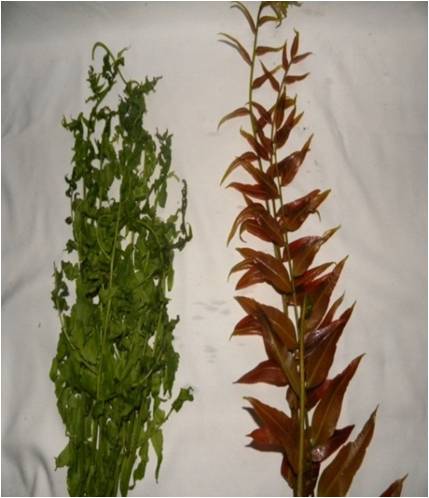
Gymnosperm
Gymnosperms are not very common in Malaysia; this plant group is more common in temperate countries. The four major groups of gymnosperms are conifers (tumbuhan berkon), ginkgo (pokok ginkgo), cycads (bogak), and gnetum (melinjau). The most popular gymnosperms are the conifers or the pine trees. Ginkgo biloba is the only living species left under the ginkgo group and most of these are now found in plantations; the wild plants are said to be found only in isolated areas in China. Cycads resemble palms, only that cycads have more rigid leaves. Other species belong to the gnetum group are Ephedra and Welwitschia. Gymnosperms are also known as “softwood”. In Malaysia, the two most common softwoods are Agathis borneensis (Damar minyak) and Podocarpus sp.
The centre of distribution of gymnosperms is in the cool temperate zones of the northern and southern hemispheres. Gymnosperms have great ecological importance. The leaves of conifers contain high concentration of secondary compounds that protect themselves from herbivory and grazing animals (i.e. insects, mammals). Gymnosperms are also a major source of lumber, paper pulp, turpentine, and resins. Fig. 15 shows a highland pine from Malaysia.
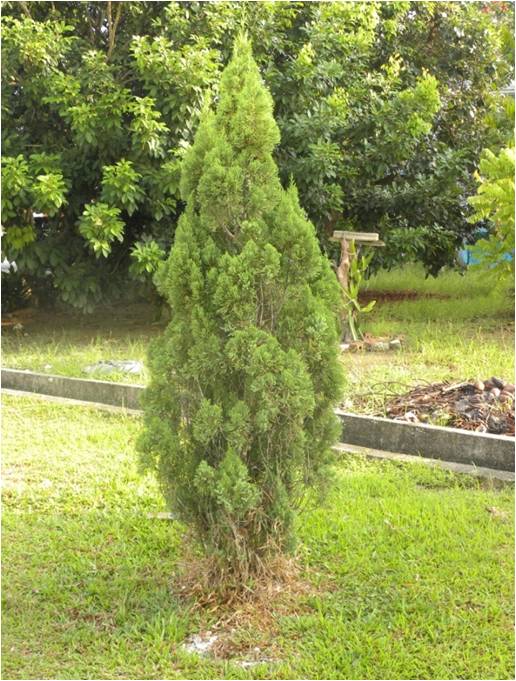
Angiosperm
Angiosperm is the largest and the most common type of plants we see in our environment. It is also referred to as “hardwood”. All the fruits and flowers that we enjoy are angiosperms. Traditionally, the large group of flowering plants is divided into two classes: Monocotyledon and Dicotyledon. Scientists have divided them according to various features such as the number of cotyledon (one for monocot; two for dicots, hence the names), structure of the pollen (single furrow or pore for monocot; three furrows or pores for dicots), number of flower parts (monocot in multiples of 3; dicot in multiples of 4 or 5), major leaf vein (parallel for monocot; reticulated for dicot), stem vascular bundles (scattered for monocot; bundles in ring for dicot); roots (adventitious for monocot; develops from radicle for dicot), and absence or presence of secondary growth (absent in monocot; present in dicot). The most common examples of monocots are the grasses (i.e. rice, bamboo, wheat, barley, corn, and sugar cane), palms (oil palm, coconut), ginger, and banana. Seventy five percent (75%) of angiosperms are dicot (i.e. trees, shrubs, herbs).
Among all the plants on Earth, Angiosperms is said to be the youngest (see Fig. 12).There are about 257,000 named species of flowering plants in the world, and many more are still being discovered. Incidentally, due to the distribution of specific types of plants in a certain area, habitats (or forest types) are named according to the dominant plant species.
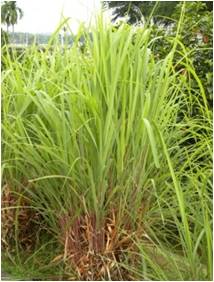
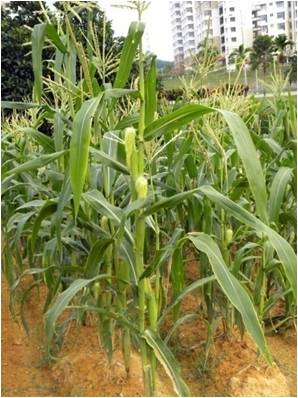
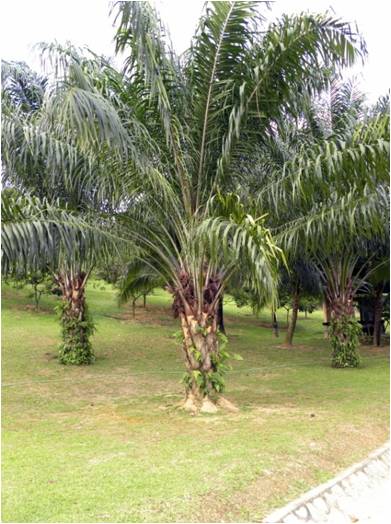
Fig. 16 : Some common monocots in Malaysia.
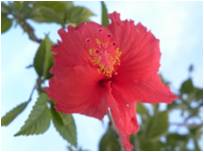
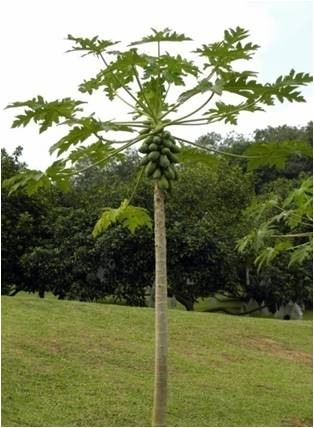
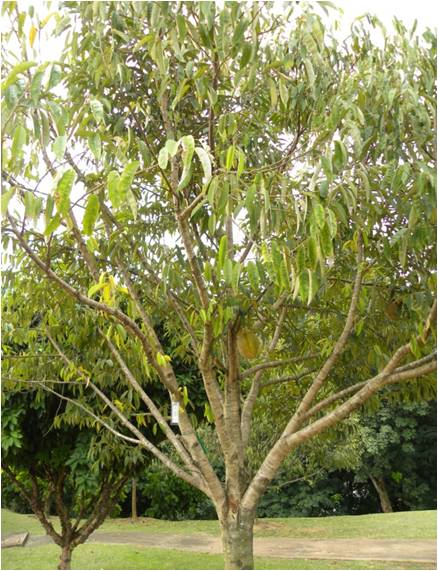
Fig. 17 : Most plant species in Malaysia and the world are dicot.
3. PLANT DIVERSITY IN MALAYSIA AND IN THE WORLD
In Table 3 are estimated numbers of described plant species in the world, according to IUCN 2008.
Table 3: Estimated number of described species of plants. [96]
| Plant Group | Number of species |
| Mosse | 16,000 |
| Ferns and allies | 12,838 |
| Gymnosperms | 980 |
| Dicotyledons | 199,350 |
| Monocotyledons | 59,300 |
| Green Algae | 3,962 |
| Red Algae | 6,076 |
There are about 250,000 to 300,000 species of plants in the world, and Malaysia has about 15,000 species [31]. This is about 5%. This diversity is huge considering that Malaysia forms about 0.2% of the global land mass. Besides having a relatively high diversity, Malaysian flora also has high endemicity. Endemism is defined as the occurrence of certain organism within a small geographical range. Table 4 shows plant endemism in Malaysia. Of the 15,000 species of vascular plants that occurred in Malaysia, there were 12,300 plants that Malaysia shares with other countries. The balance of 2,700 species is endemic to Malaysia. This means that in general, 18% of Malaysian flora is unique and not found any where in the world. By the completion of a project to document all tree flora of Peninsular Malaysia, called Tree Flora of Malaya, there are 746 endemic tree species in Peninsular Malaysia. For non-tree flora, there is an estimation of about 1,200 endemic species.
Table 4: Endemism of Malaysian plants.
| Species group | Total species richness | Number of species endemic to Malaysia | Number of species shared with other countries |
| Higher Plants | 15,000 | 2,700 | 12,300 |
The earliest studies of all seed plants in Malaysia (particularly that of the Malay Peninsula) were compiled in a five-volumes work of Henry N. Ridley’s “Flora of the Malay Peninsula” (1922 – 1925) [32]. It is followed by the remarkable works of Edred John Henry Corner, the “Wayside Trees of Malaya” completed in 1952 comprised of two editions and two volumes, and of Murray Ross Henderson’s “Wild Flowers of Malaya” (1949 – 1951, reprinted in 1959 in 2 volumes).
Malay Peninsula is considered to be amongst the richest in the world, and the wealth of the flora in this region can be expressed in terms of the number of families, genera, and species of plants present (Table 5).
Table 5: Estimation of plant species in Malaysia and the world according to plant groups.
| Plant Group | Estimated number of species | Percentages | |
| Malayan Flora | World flora | ||
| Gymnosperm | 19 | 640 | 2.96 |
| Angiosperm | 8,000 | 286,000 | 2.79 |
| Seed plants | 8,019 | 286,640 | 2.79 |
In view of the fact that the geographic area of Malaya occupies no more than a small fraction of the huge land mass on the globe, about 0.2%, it becomes evident that the flora of this region is very rich indeed. The extremely richness of the flora plausibly can be attributed to the following three factors. Firstly, the constantly warm and nearly uniform humid climate prevailing in this part of the world is especially suitable for the growth of tropical rainforest. This is further compounded by the variation of altitudinal and other edaphic factors. Thus, a myriad of a macro- and microenvironments are created, which have evolved and sustained a great variety of plant species. Secondly, two great floras, the continental Asiatic one (extending from the Malay Archipelago) in the south, with their rich elements, met and intermingled in the Malay Peninsula which also serves as a major migratory track. And thirdly, this region, like some of the neighboring areas, geologically has been a relatively stable one, which has made possible the persistence of vegetation more or less like that of the present day, at least from the early Tertiary (over fifty million years ago) or even much earlier.
Twelve of the largest families of angiosperms in the world in order of the number of genera and species are shown in the following Table 6. It is interesting to note that Orchidaceae family (orchid), of which we are familiar with, is the biggest, with about 17,000 species. Teoh 2005 [33] quoted a bigger diversity for orchid that is 25,000 species.
Table 6: List of largest Angiospermae families in the world.
| Families | Number of Genera | Number of Species |
| 1. Orchidaceae | 735 | 17,000 |
| 2. Compositae | 900 | 13,000 |
| 3. Leguminosae | 600 | 12,000 |
| 4. Gramineae | 620 | 10,000 |
| 5. Rubiaceae | 500 | 6,000 |
| 6. Euphorbiaceae | 300 | 5,000 |
| 7. Liliaceae | 250 | 3,700 |
| 8. Labiatae | 180 | 3,500 |
| 9. Cruciferae | 375 | 3,200 |
| 10. Melastomataceae | 240 | 3,000 |
| 11. Scrophulariaceae | 220 | 3,000 |
| 12. Umbeliferae | 275 | 2,850 |
In contrast, the twelve largest families of Angiospermae in the Malay Peninsula in order of the number of species are tabulated below in Table 7.
Table 7: List of largest Angiospermae families in Malay Peninsula.
| Families | Number of Genera | Number of Species |
| 1. Orchidaceae | 104 | 669 |
| 2. Rubiaceae | 67 | 468 |
| 3. Euphorbiaceae | 71 | 343 |
| 4. Leguminosae | 66 | 266 |
| 5. Gramineae | 83 | 205 |
| 6. Annonaceae | 30 | 184 |
| 7. Palmae | 181 | 181 |
| 8. Melastomataceae | 25 | 174 |
| 9. Lauraceae | 16 | 174 |
| 10. Acanthaceae | 36 | 168 |
| 11. Gesneriaceae | 21 | 161 |
| 12. Zingiberaceae | 20 | 157 |
4. PLANT INTERACTIONS
Biodiversity is also concerned with interactions between organisms. Thus in this section the various common plant interactions will be described. To facilitate description, interactions will be broadly categorised into two kinds– plant-plant interactions and plant-animal interactions.
a. Plant-plant interaction
Parasitic
One of the common interaction occurring among plants is parasitism. In this relationship, one of the plants will get the advantage/benefit while the other will be disadvantaged. An example is the parasitic Rafflesia which has no leaves and lives off Tetrastigma, the host plant. Another example is the money plant that creeps and lives off some bigger host plant by extracting water and nutrients.
Epiphytic
In a tropical rainforest, one could commonly see some plants growing on tall trees. Many of these epiphytes are not doing any harm to the trees. They do not take any water or nutrients from the host and only depend on the trees for support. This kind of interaction is termed epiphytic. Since the canopy of the tropical rainforest is dense, little sun light penetrates to the forest floor. As such some plants would strategize to live on top of tall tree to get the sun light to photosynthesize. In Fig. 18 the bird’s nest ferns (Asplenium nidus) live on a large and tall tree. Most orchids in the forest too are epiphytes, living on tall trees, to get sunlight for photosynthesis
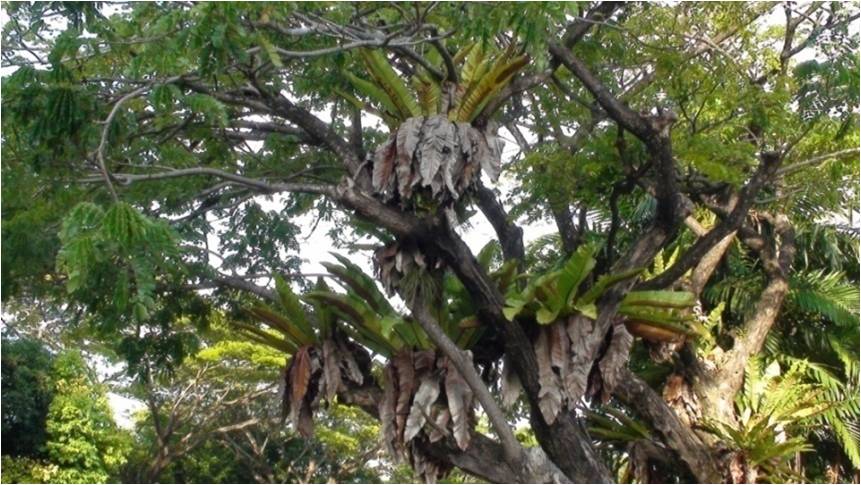
Fig. 18 : Bird’s nest fern perching on tall trees to catch enough sunlight. This is an example of an epiphytic interaction.
b. Plants-animals interactions
Basically plants provide food for animals which generate energy for the animals to live. However there are several interactions between plants and animals that are more than just providing energy. Some are described below.
Symbiotic–ant-plant relationship
Some ants choose certain plants to make their homes. An example of an ant plant is Hydnophytum. This ant plant is an epiphyte and has large tuber-like root system. Ants (normally Crematogaster) prefer to make their nest in this root system. However, Widodo & Maryati 1998 [34] reported other species of ants (Pheidole and Diacamma) occupying ant plants in Maliau Basin and Danum Valley, Sabah, Malaysia. Ants build galleries in the tuber and deposit their eggs. In Fig. 19 you could see the eggs and larvae of Crematogaster in the gallery of a Hydnophytum. Ants that forage daily down on the forest floor will gather sand and soil particles containing nutrient back to the nest. In this manner, the plant will obtain nutrient necessary for growth. In return the plant provides ants with a home. In addition, ants will deter any insects/herbivore that visit the young shoot of this epiphyte to eat them, thus providing protection as well. Other plants that have similar interactions with ants are Myrmecordia (also an epiphyte) and Macaranga (a pioneer plant group, non epiphyte). Interestingly, Hydnophytum and Myrmecordia are being used locally as herbal drink to cure diabetes, hypertension and other ailments. In Fig. 20 is another familiar plant-animal relationship: pollination.
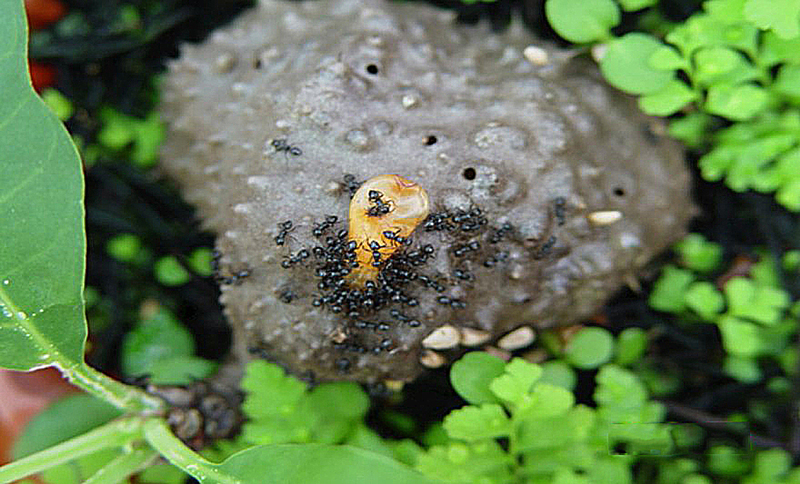
Fig. 19 : Ant-plant relationship could be seen in this photo where ants are seen nesting in an ant plant the Hydnophytum
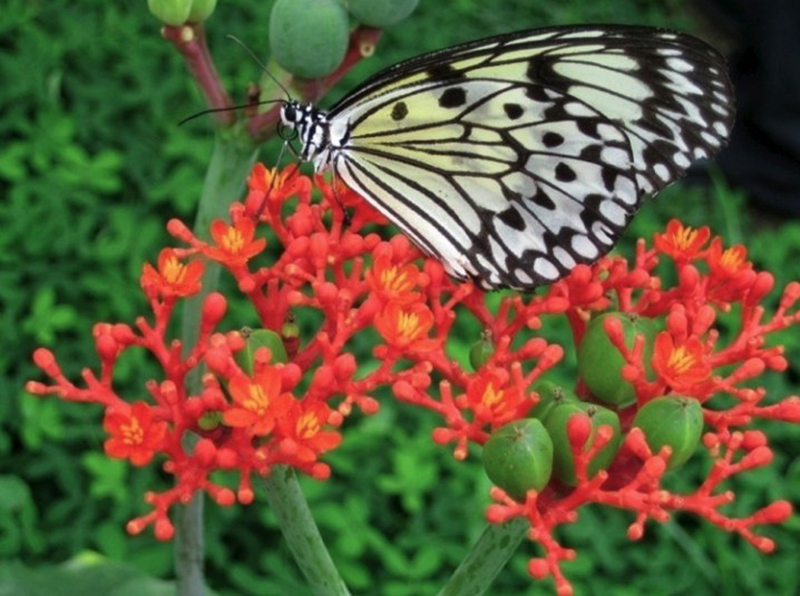
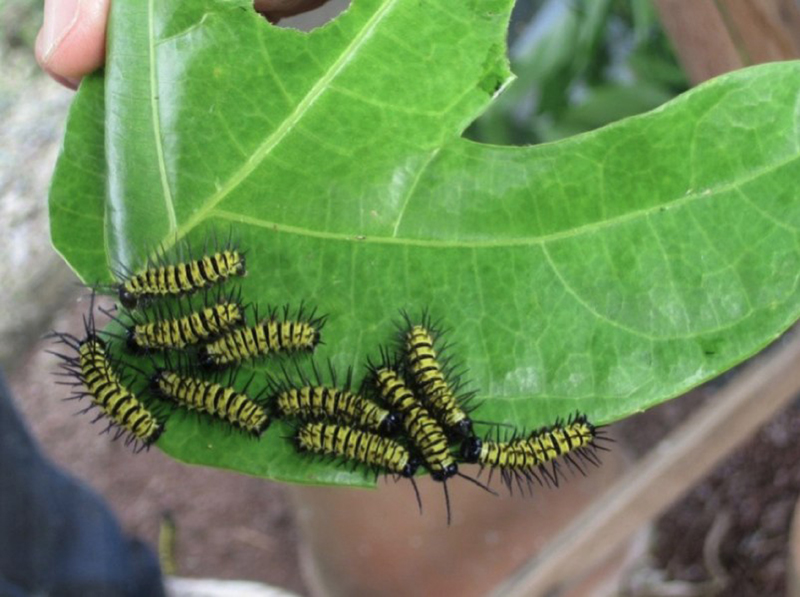
Herbivory
Another well known interaction is the herbivory. This is when plants are physically eaten by animals. Although, it is known that cow eat grass, we do not mind because we could benefit from the cows. But among crop protectionists, insects eating crops are bad because they are causing losses to crop yield. Thus, a farmer will keep a watch for caterpillar feeding on his cabbage. Or in most occasions farmers will spray their farms with insecticide to keep away the pest. In Malaysia there are several major herbivorous pests [35]. They are ranked according to the importance of their host crops. At the moment, palm oil is the major export commodity, thus, pests of oil palm will be ranked as very important. In the list are species of moths such as the coconut nettle caterpillar (Setora nitens) and the nettle caterpillar (Darna trima). Damage done by caterpillar of butterfly can be seen in Fig. 21. As for other crops, vegetables for example, most of the time pests are from the caterpillars of moth or butterflies.
Parasitism
Another lesser observed interaction between animals and plants is the parasitism. Parasitism will normally occur when number of pest is many, and damage done is slow. This kind of interaction can be seen in the aphid-plant relation. Although, aphid (Aphididae: Homoptera) is a temperate pest, it is also found in Malaysia. There are 77 recorded species of aphids in Malaysia [36]. Of these, 13 are known to be pests or potential pests [37]. Fig. 22 shows an aggregate of Aphis nerrii feeding on the shoots of its host plant. A study on the biology of a pest species, Aphis craccivora feeding on long beans, was reported by Maryati & Maheran 1990 [38]. This feeding through sucking of plant juice will cause distortion to the growth of the young leaves and shoots, and retard growth. However, damage is more, if the aphids have been infected with plant virus. Aphids are notorious virus vectors, causing damage to many crops all around the world. In Malaysia there has been report of viral diseases due to feeding of aphids [39] [40]. Although this group of insects is considered minor pests, Maryati 1992 [36] stressed on its potential to be widespread in Malaysia affecting many food crops.
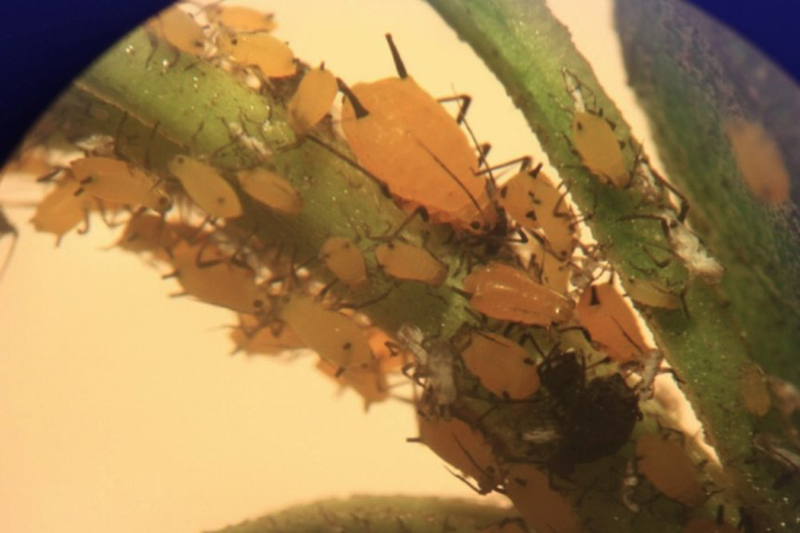
Carnivorous plants–the pitcher plants: Nepenthes
Another interesting interaction between plants and animals is seen in the Nepenthes or pitcher plants. This plant group has leaves modified to form a pitcher-like structure at the apical end. The inner cells of this modified pitcher-like leaves secrete enzymes and water to act as a death trap for insects that fall into it. There is an operculum or lid-like structure at the mouth of the pitcher. At the base of this structure cells will secrete solution that will attract insects. An insects attracted by this secretion will climb the pitcher and when reaching near the edge of the mouth will fall into it and died in the enzymes solution. Massive insects decomposed in the enzymes provide nutrients for the plants which are absorbed by the inner cells of the pitcher. Studies by Mariate 2003 [40] and Noriza 2003 [41] showed that the main group of insects found in the pitchers is ants. Fig. 23 shows some ants in the pitcher of a Nepenthes attracted by the secretion at the operculum.
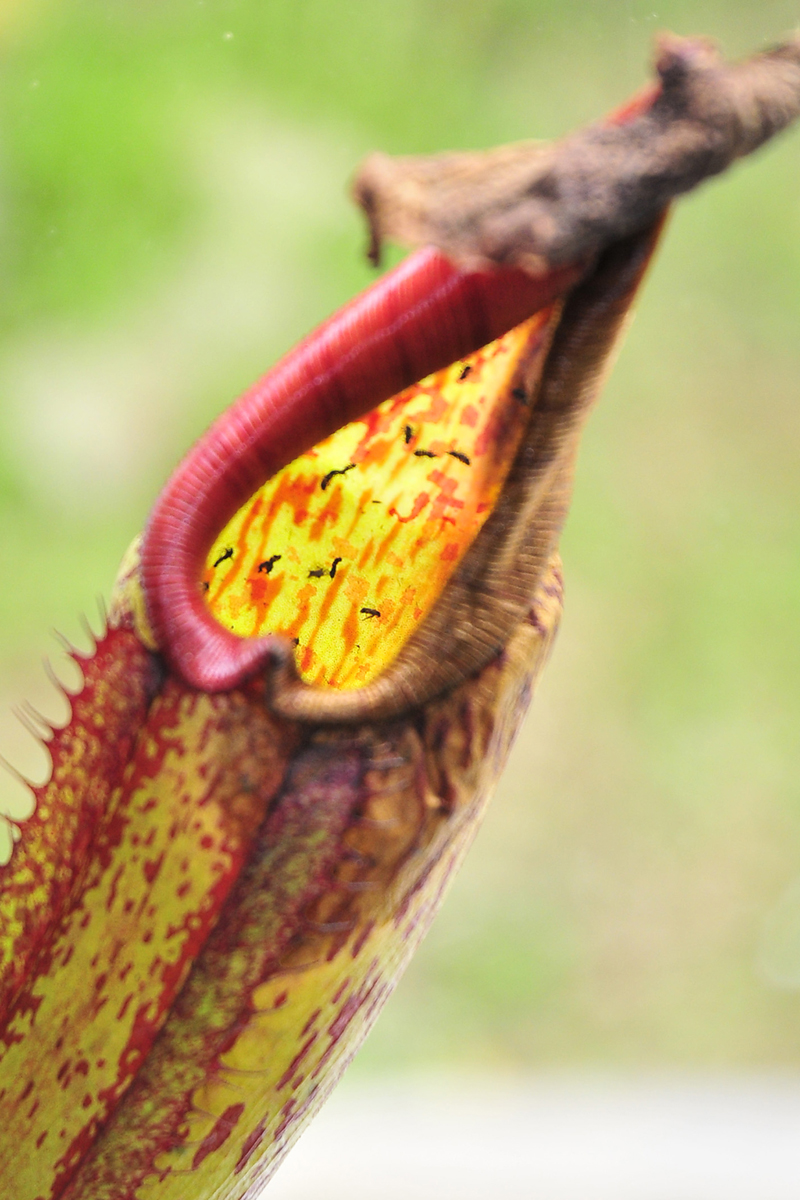
5. INTERESTING PLANTS OF UNIQUE ECOSYSTEMS IN MALAYSIA
Malaysia is a unique country characterised by extensive sea, coastal plains, hilly and mountainous regions with steep slopes and undulating terrain, resulting to formation of various unique ecosystems. The climate of Malaysia is typical of the humid tropics and is characterised by year-round high temperature and seasonal heavy rain that contributes to the uniqueness of the country’s vegetation formation.
Different types of forest can be found in Peninsular Malaysia, Sabah and Sarawak and the name given to the forest is according to the dominant types of plants found in that particular area and also the edaphic factors. In Peninsular Malaysia, it can be generally classified into dipterocarp, peat swamp and mangrove forests. Dipterocarp forest dominates covering about 95% of the forest ecosystem, while peat swamp and mangroves comprised the remaining 3.34% and 1.84% of the forest, respectively. Sabah is generally characterised by a gradual succession of forest vegetation from the coastal beach forest and mangrove forests to lowland dipterocarp forest and eventually montane forest, although other types of forest are found like peat swamp, ultramafic, kerangas and limestone forests. In Sarawak, five types of natural forest are classified, namely hilly-mixed dipterocarp, peat swamp, mangroves, kerangas or heath, and montane forests. In each of these ecosystems/habitats, there are special vegetation and unique plant groups. Below, some of these ecosystems are described and descriptions of some unique plant groups are made.
Table 8: Different forest types in Malaysia.
| Forest type | Description |
| Beach | Occurs along the coastline as well as some offshore islands, although diminishing due to increasing coastal developments. Casuarina equisetifoliais the dominant tree species. |
| Mangrove | Also referred to as mangals consists of over 70 species of plants adapted to a saline environment or plants that is able to tolerate high salt contents. |
| Swamp | From the name itself, this type of forest is characterised by the dominance of Dipterocarpaceae– one of the major timber species in Malaysia and in Southeast Asia. |
| Dipterocarp (lowland) | The most common species found are Anisoptera (Pengiran), Dipterocarpus (Keruing), Dryobalanops (Kapur), Hopea (Selangan), Shorea (Seraya, Meranti, Balau), Parashorea (Urat mata), etc. This forest is generally found below 300 metres above sea level. |
| Hill dipterocarp | This is very similar to the lowland dipterocarp forest only that it occurs between 300 to 800 metres above sea level. The most common species include Shorea curtisii (Seraya). |
| Peat swamp | This forest occurs just beyond the coastline on both east and west coasts of Malaysia and also common in Sarawak. The major species found in this forest include Gonystylus bancanus (Babangkau, Ramin), Durio carinatus (Durian paya), Shorea platycarpa (Seraya paya), etc. |
| Kerangas/Heath | Characterised by small trees with small, leathery leaves, climbing plants and often, epiphytic associated with ants. This type of forest occurs on highly leached, thin soils with sandstones. |
| Ultramafic | This ecosystem is characterised by small trees yet forming a continuum of canopy cover. |
| Limestone | Normally associated with caves and stately pinnacles (e.g. Mulu National Parks, Sarawak) and harbours endemic species of plants, many are orchids. In Malaysia, limestone sites are associated with temples like in the states of Pahang, Perak and Selangor. |
| Montane | Located on elevation above 1,200 metres above sea level and dominated by species of families Fagaceae, Lauraceae and Ericaceae. Due to permanent exposure to wind and harsh environments, trees are normally stunted with twisted stems. |
Besides the forest classifications in Table 8, there are also smaller-sized forest types such as: freshwater/riverine forest (that includes riparian forest, freshwater swamp, gelam swamp forest and peat swamp forest) and estuarine/coastal forest (that include mangrove swamp forest, nipah forest and coastal strand or beach forest) [43].
a. Aquatic ecosystems
Malaysia is surrounded by sea. Peninsular Malaysia is bounded by the South China Sea on the east coast and the Straits of Malacca on the west. Sabah and Sarawak are bounded on the west by the South China Sea, and on the east of Sabah is bounded by the Sulu and Sulawesi Seas. Freshwater ecosystems of Malaysia are made up of montane/upland streams, middle zone rivers and lowland rivers and there are also lakes and dams [43]. In these water bodies, there are plants. The plant of the aquatic environment comprises of phytoplanktons, sea grasses, sea weeds and water weeds. The blue-green algae (Cyanophyta) in the aquatic ecosystems are considered as plants by botanists and they form most of the phytoplanktons, which are microscopic, single-celled organisms. However some algae form the large multicellular sea weeds. Sea weeds are now becoming important in Malaysia. Besides serving as food product (as in the sea weed nori, genus Porphyra) and the health food Spirulina, algae can also produce alginic acids to stabilize emulsions and suspensions (in syrup, ice cream and paint) and also agar and carrageenan for the preparation of various gels used in scientific research [44]. Sea grasses are found in tropical seas and are important in maintaining nutrient levels in the marine ecosystem, providing food for the turtles, and dugongs, and acting as nursery, shelter and food source for fishes and invertebrates, besides producing detrital nutrients and increasing oxygen levels in the water and interacting with coral reefs and mangroves in reducing waves energy and regulating water flow [43].
b. Mangroves
Mangrove is a form of a wetland ecosystem found in the tropics. Most are found lining shorelines, river banks and some, inlands. This special ecosystem is dominated by plant species belonging to the mangrove group, and as such they are sometimes referred to as mangrove forest. The plants are predominantly species of the genera Rhizophora, Sonneratia, Avicennia and sometimes with Nypa palms. Since at times these plants are submerged in fresh, brackish or salt water, they are tolerant to salty water. They posses special root system with relatively large breathing holes called pneumatophores. They form stilts roots that appear above water. Besides the peculiar root shown (Fig. 25), leaves of mangrove also possess leathery waterproof surface to prevent loss of water in the hot and dry coastal environment. Flowers of structure as shown will develop into fruits that grow downwards. These fruits do not fall off as they ripen, instead mature together with the germinating seeds on the tree. This phenomenon is called vivipary. When the seedling drops off it will fall into the water. The soft bottom will allow the seed to stand upright. This seed will grow quickly to become a young plant (Fig. 24). Although mangrove is not rich in biodiversity of plants, the common species found in a mangrove forest are listed in Table 9.
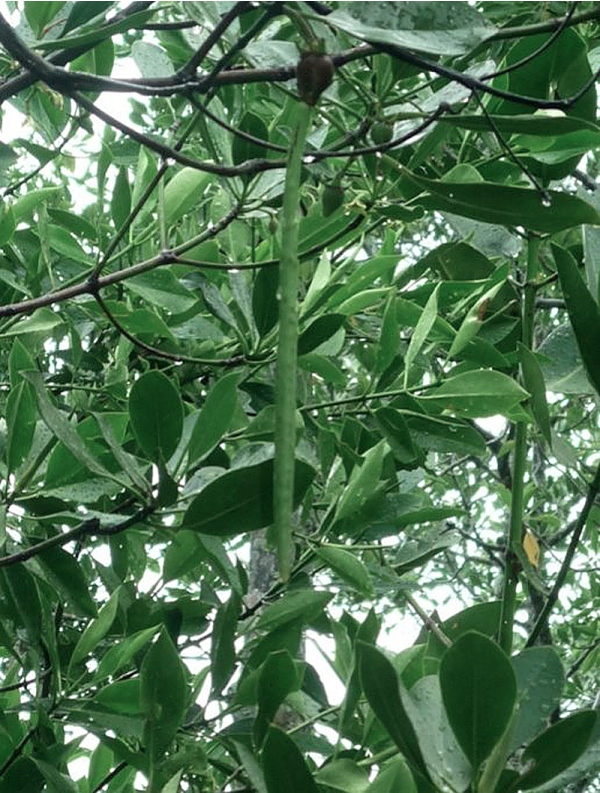
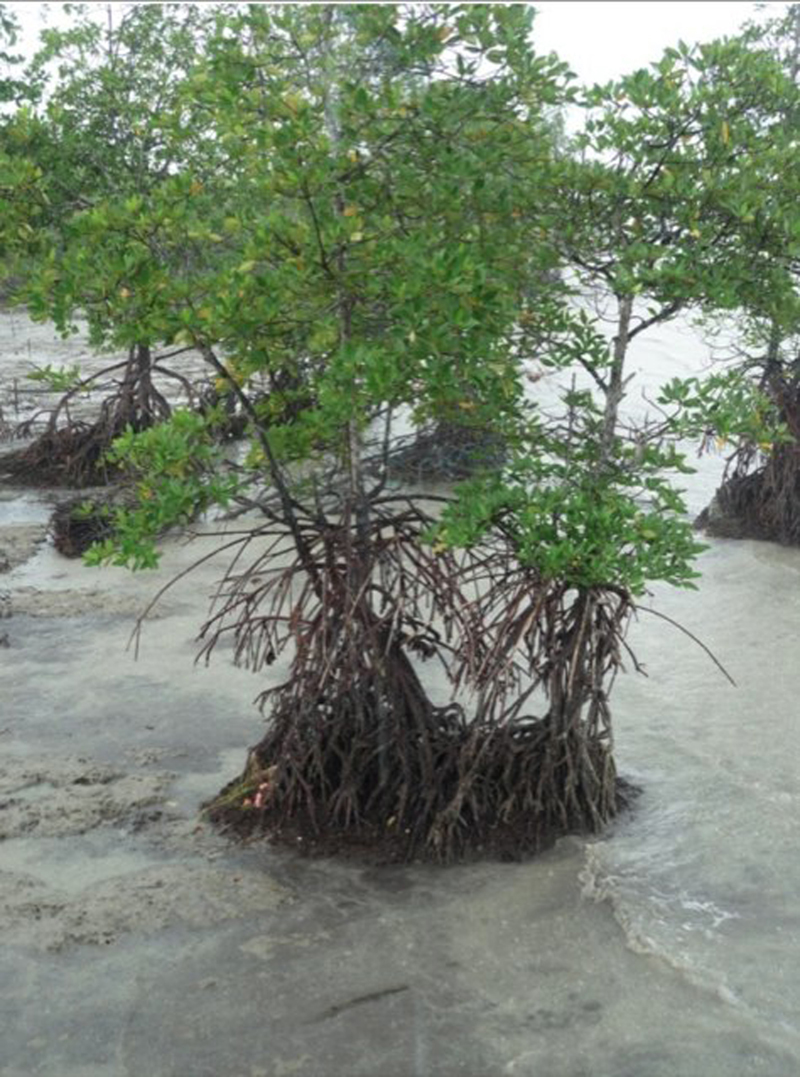
Table 9: Some common species of plants found in a mangrove forest ecosystem.
| Scientific Name / Family | Common Name | |
| 1 | Rhizophora apiculata / Rhizophoraceae | Bakau minyak/bangkita |
| 2 | Rhizophora mucronata | Bakau kurap |
| 3 | Bruguiera parviflora / Rhizophoraceae | Lenggadai |
| 4 | Bruguiera cyclindrica | Berus |
| 5 | Bruguiera gymnorrhiza | Tumu merah |
| 6 | Bruguiera sexangula | Tumu putih |
| 7 | Bruguiera hainesii | Berus mata buaya |
| 8 | Ceriops tagal /Rhizophoraceae | Tengal |
| 9 | Lumnitzera sp. / Combretaceae | Teruntum |
| 10 | Oncosperma tigillarium /Palmae | Nibong |
| 11 | Nypa fruticans / Palmae | Nipah |
| 12 | Intsia bijuga / Leguminosae | Merbau ipil |
| 13 | Avicennia officinalis / Verbenaceae | Api-api |
| 14 | Sonneratia alba / Sonneratiaceae | Pedada/perepat |
| 15 | Excoecaria agallocha / Euphorbiaceae | Buta-buta |
These special plants support special animals of the mangrove. Some animals recorded in various parts of mangrove forests in Malaysia are: fireflies (Pteroptyx spp., Luciola spp.); proboscis monkey (Nasalis larvatus), estuarine crocodiles (Crocodylus porosus), milky stork (Mycteria cinerea), lesser adjutant stork (Leptoptilus javanicus) [43].
In Malaysia, there are about 641,230ha of mangrove forest. Sabah hosts the largest mangrove area in Malaysia covering about 365,500ha or 57% of the country’s mangrove forest. Sarawak has about 167,100ha (26%) [43]. This means that Peninsular Malaysia has the smallest size of mangrove of about 107,630ha (17%). In Peninsular Malaysia, most of the mangrove forests are in the state of Kedah, Perak, Johor and Selangor. Mangrove has always been considered as not useful. A substantial acreage had been developed and turned to fish and prawn ponds. However, since the occurrence of the tropical tsunami on 26th December 2004 that killed many people in Acheh, Sri Lanka, Thailand, India and Malaysia, governments have been very concerned with maintaining and reestablishing mangroves along the shoreline. In Malaysia for example Dahlan et al., 2007 [45] reported that between 2005 and 2006, 282ha of coastal areas had been planted with more than 1 million trees of mangrove species and other suitable trees. With mangrove as a wave breaker, damage will be much lessened, as studied by Selvam 2005 [46] and reported by Tanaka et al., 2007 [47]. Usefulness of mangrove is not only as wave breaker. To appreciate the importance of mangrove, please see Box 1.
| BOX 1: Importance of mangroves is a common notion that a wetland is a wasteland but from several sources mangroves have been quoted to have these uses: Ecological Functioning: 1. Stabilise river banks essential to protection of coastline Economic Importance: 1. Produce poles and timber for piling in road and building constructions Traditional Medicines: Rhizophora mucronata are used in Chinese and Japanese herbal medicine. A decoction of the bark used to cure diarrhoea. Burmese prescribe bark when there is blood in urine, Indochinese use roots to contain bleeding (Wee, 1992) Maintaning Biodiversity: Plants that grow in this peculiar ecosystem are special since most are adapted to living in water (fresh/salty). They have special structure like the stilt roots of Rhizophora spp. Plants in mangrove support special animals like the fireflies and proboscis monkeys. |
Peat swamp is another peculiar tropical wetland ecosystem. This wetland has normally acidic water because the bottom is comprised of peat. Peats are plants that have accumulated many million years ago and are in various stages of decomposition. Decomposition was slowed down because of the paucity of decomposer such as fungi, bacteria, insects due to the acidity of the water. Acidity of the water is mainly caused by the present of tannic acid leached from plant parts immersed in the water. The water is also brown in colour and as such, termed black water. The acidic water of the peat swamp created a special environment that enables special plants and animals to flourish. Unfortunately, there are not much peat swamp forests left in Malaysia.
Uses of peat are pretty similar to the mangrove with some interesting additions. Peat soil when dried makes good medium for horticultural plants such as epiphytic ferns and orchids. The peculiar acidic water of peat swamps support peculiar flora. From Table 10, it is clear that many species of plants such as ramin are confined to the peat ecosystem. Ramin (Gonystylus bancanus) that provides expensive timber used in buildings are only found in a peatswamp forest.
Areas around peat swamp that has dried up support growth of unique flora. As can be seen in Table 10 dominant plants found in several peat swamp forest are listed and they are unique to peat soil.
In Malaysia there are about 2million ha of peat swamps forest remaining. Less than 25% are in Peninsular Malaysia (Pahang, Johor, Selangor and Perak); 75% in Sarawak (covering 12% of its land area) [48] and 60,000ha on Klias Peninsula in Sabah. Peatswamps are important breeding ground and habitats for fisheries, some coastal birds and some mammals including rare/endangered Sumatran rhino (Dicerohinus sumatrensis), probosis monkey (Nasalis larvatus) and two subspecies of the banded leaf monkeys Presbytis melalophos chrysomelos and Presbytis melalophos criniger (both endemic to peat swamps of northwestern Borneo) [43]. In Sabah, a survey in the Klias peatswamp noted occurrence of several rare species such as the oriental darter (Anhinga melanogaster), the red throated sunbird (Anthreptes rhodolaema) and Finsch’s bulbul (Criniger finschi) [49]. A long term study on proboscis monkey in the peat swamp ecosystem of Klias, Sabah was made by Bernard & Zulhazman 2005 [50]. From Sarawak’s Loagan Bunut, examples of fauna recorded are flying foxes (Pteropus vampyrus), oriental pied hornbill (Anthracoceros albirostris), greater racket tailed drongo (Dicrurus paradiseus), stork billed kingfisher (Pelargopsis capensis) and the estuarine crocodile (Crocodylus porosus).
Uses of peat are pretty similar to the mangrove with some interesting additions. Peat soil when dried makes good medium for horticultural plants such as epiphytic ferns and orchids. The peculiar acidic water of peatswamps support peculiar flora.
Table 10: Plant species that are confined to the peat ecosystem.
| Species | Family | Common Name (Malay) | |
| 1 | Gonystylus bancanu[48] [51] | Thymelaeaceae | Ramin |
| 2 | Durio carinatus[51] | Bombacaceae | Durian paya |
| 3 | Tetramerista glabra[51] | Tetrameristicaceae | Punah |
| 4 | Koompassia malaccensis[51] | Leguminosae | Kempas |
| 5 | Madhuca motleyana[51] | Sapotaceae | Nyatoh ketiau |
| 6 | Parastemon urophyllus[51] | Chrysobalanaceae | Anggilas |
| 7 | Gymnacranthera farquhariana var. eugeniifolia[51] | Myristicaceae | – |
| 8 | Alstonia spatulata[51] | Apocynaceae | Pulai |
| 9 | Artocarpus kemando[51] | Moraceae | Pudau |
| 10 | Horsfieldia crassifolia[51] [97] | Myristicaceae | Nutmeg |
| 11 | Pandanus artocarpus[51] | Pandanaceae | Pandan |
| 12 | Xylopia malayana var. obscura[51] | Annonaceae | Mempisang |
| 13 | Diospyros foxworthyi[51] | Ebenaceae | kayu malam |
| 14 | Endiandra maingayi[51] | Lauraceae | – |
| 15 | Syzygium inophyllum var. bernadii[51] | Myrtaceae | kelat |
| 16 | Syzygium kiahii var. angustifolium[51]* | Myrtaceae | kelat |
| 17 | Sarcotheca monophylla[50] | Oxalidaceae | – |
| 18 | Tetractomia majus[50] | Rutaceae | – |
| 19 | Dryobalanops rappa[48] [52] | Dipterocarpaceae | kapur paya |
| 20 | Stemonurus scorpioides [52] [98] | Stemonuraceae | Semburok daun besar |
| 21 | Palaquium rostratum [52] | Sapotaceae | Nyatoh |
| 22 | Combretocarpus rotundatus[48] [52] | Anisophylleaceae | Keruntum |
| 23 | Dactylocladus stenostachys [48] [52] | Crypteroniaceae | Jongkong |
| 24 | Shorea platycarpa[52] | Dipterocarpaceae | Meranti Paya |
| 25 | Lophopetalum sp.[52] * | Celastraceae | – |
| 26 | Calophyllum havilandii[52] | Guttiferae | Bitanggor |
| 27 | Cyrtostachys renda[52] | Palmae | Palma merah |
| 28 | Pseudosindora palustris (syn. Copaifera palustris)[48] [99] | Leguminosae | Sepetir |
| 29 | Shorea albida[48] | Dipterocarpaceae | Alan |
| 30 | Litsea crassifolia[48] | Lauraceae | Medang Parang |
a. Lowland mixed- and hill-dipterocarp Forest
Dipterocarp– literally means “two-winged fruit” is a group of tree which forms the major forest type in Malaysia. These forests are taller than any other broad-leaved tropical rainforest in the world and their market value is very high. Dipterocarp forests constitute over 85% of the forested area in the country concentrating at 1,200 metre above sea level and below. Lowland mixed-dipterocarp forest reaches up to 600 metres above sea level, while hill dipterocarp forest is between 800–1,200 metres above sea level. True to its name, lowland mixed-dipterocarp forest is also abundant with plants from other families. For example, a 50ha area can have as much as 800 different species. The dominant dipterocarp species in this area are Shorea, Dryobalanops, and Dipterocarpus while the hill dipterocarp forest is dominated by Shorea and Anisoptera. In Malaysia, in the state of Negeri Sembilan there is a lowland forest called Pasoh Forest Reserve managed by the Forest Research Institute Malaysia (FRIM). Several publications produced show that this particular lowland forest has a very rich flora biodiversity.
b. Heath forest
A typical tropical lowland rainforest of Malaysia is characterised by the abundance of large straight trunk branchless dipterocarps that form closed canopy, and climbing trees (lianas) and epiphytes that climb the tall dipterocarp to seek sunlight critical for photosynthesis. Another forest type that has very different characteristics is the heath or kerangas forest. The nutrient-impoverished soil supports dwarfish, smallish trees with thin trunk. It is more open and therefore will not allow for the establishment of sun hating dipterocarp seedlings.
According to Hazebroek & Abang, 2000, [48] “kerangas” is a word from the Iban ethnics of Sarawak. The word refers to soil in the lowland and hills unsuitable for growing rice. It is also known as tropical heath forest and seen as an adapted form of mixed dipterocarp forest, alledgedly infertile, usually sandy soils, or on soils derived from basic igneous or volcanic rocks such as basalts. Generally, trees are small (few exceed 1.8m girth and 30m height). In Sarawak, Brunig 1974 [53] recorded lower number of flora species: 849 species of trees, 133 shrubs, 96 herbs, 100 epiphytes and 55 lianas. There are more light at the ground level and some typical plants are; rhu ronang (Gymnostoma nobile), kawi (Whiteodendron moultonianum) and kerukup (Shorea pachyphylla).
Hazebroek & Abang, 2000 [48] noted at Bako, the primary kerangas vegetation varies from low forest with close canopy to open shrubland as soil becomes poorer and water supply becomes more variable. Species richness also decreases. Fire may cause openings because there is a break in nutrient recycling process. Ground orchid, Bromheadia finlaysoniana, shrubby trees Cratoxylum glaucum and Fagraea cuspidata and resam Dicranopteris linearis grow in such soil. One of the epiphytes, Myrmecodia tuberosa (Rubiaceae– coffee family), its stem base forms swollen spiny tubers full of chambers and galleries inhabited by ants. Ants enter and leave using special holes. These ants rear brood in chambers lined with tough, non absorptive cells. Some chambers are lined with warts that absorbed nutrients from the remains of prey carried in by ants. Hydnophytum formicarum is also common and have tuber are which is smooth not spiny. Clerodendrum fistulosum shrub has hollow swollen stems that also harbour ants. Similarly ants inhabit the fern Phymatodes sinuosa. There are six species of pitcher plants (Nepenthes) and another insects eating plant the Bornean sundew, Drosera spathulata, is rare in the kerangas forest of Bako.
In the closed canopy kerangas, some plants found are: Gymnostoma and Dacrydium, Johannesteijsmannia altifrons, Pholidocarpus maiadum, wild Bornean sago Eugeissona insignis, Licuala and Pinanga spp) and tree fern Cyathea latebrosa. Dipterocarp present are: Cotylelobium burckii (resak durian), known for boat making (does not split easily). Other emergent trees are rhu ronang, Gymnostoma nobile (Casuarinaceae) that resembles a conifer. Other species include: Dacrydium beccarii,Gluta beccarii (rengas) and Dillenia excelsa.
c. Montane forest
The highest peak in Malaysia is Mount Kinabalu of 4,101m above sea level. As one climbs this mountain from the bottom to the top the variation in both the physiognomy and vegetation are apparent. Lower montane forest is from 915 to 1,830 metres above sea level; upper montane forest (also known as mossy forest) from 1,830-2,590 metres above sea level; ultrabasic rock (montane) forest at 2,590 to 3,200 metres above sea level; granitic rock vegetation at 3,200 metres above sea level and Face Rock Vegetation at the highest peak of 4,100 metres above sea level. Other peaks found in Malaysia are Gunung Tahan, Gunung Murud and Gunung Brinchang.
At 915 to 1,830 metres above sea level, the lower montane forest has mesophyll (medium size leave) dominated forest with uneven and lower canopy of about 20-25m. This contrasts with the upper montane forest (1,830-2,590metres above sea level), which has lower canopy, more even, often pale coloured, microphyll (small-sized leaves) dominated canopy, of more slender trees, usually with gnarled limbs and very dense sub-crowns [54]. Here it is also known as mossy forest and is naturally damp and cool, favouring the growth of mosses including liverworts that swathe stunted and gnarled trees and the forest floor. Here epiphytic mosses, liverworts, ferns and orchids reach their maximum in species diversity and coverage [25].
Quoting Lamb 1996 [55], there is an estimation of 2500-3000 species (150 genera) of orchids in Borneo and on Mount Kinabalu about 1,000 species (121 genera; with 2-3 genera to be recorded). Thus, Mount Kinabalu has over 30% of total orchid species in Borneo. Since there are about 4,000 species of vascular plants in Mount Kinabalu [56], which means orchids of Kinabalu made up 25% of the plant species that inhabit here. One genus of orchid endemic to Mount Kinabalu is Neoclemensia.
In the ultrabasic montane forest (2,590-3,200m asl) the zone is relatively dry and geologically characterized by a change from sedimentary formation to ultrabasic rocks, which are harder with some decomposing on the surface and covered by small humus layer [26], Leptospermum recurvum (Myrtaceae) and Dacrydium gibbsiae (Podocarpaceae) dominate here. However where there are depression with more soils and mostly on granite, larger trees of Rhododendron dominate [26]. There are also peat mosses (Sphagnum cuspidatulum) and in open spaces, bogs have formed and shrubs are replaced by grasses, sedges and pitcher plants. As for ferns, at about 2,900m, a small tree fern Cyathea havilandii with short trunk (sometimes no evident trunk) and all branches densely scaly is common on the ridges and in open places, Schizaea fistulosa. Other ferns found here are species of Polystichum, Dryopteris, Asplenium, Anthyrium, Grammitis, and Blechnum [20].
Above 3,500m to 4,100 m asl trees like Leptospermum and Rhododendron change to shrubs and dwarf shrubs in soil found in crevices and rock fissures. Some mosses are still found on the granitic rocks such as Rhacocarpus alpinus, Andreaea rupestris and Bryum argenteum.
Special plant groups
a. ORCHIDS
Introduction:
Orchids belong to the family Orchidaceae. It is the largest plant family, comprises of about 25,000 species (10% of vascular plants in the world). According to Teoh 2006 [33], orchids grow most widespread, in dark tropical jungle, exposed slope of rock cliffs, clinging to rock on shore line just above high tide, at the edge of deserts, on the foothills of Himalaya and even in the Arctic. They are mainly epiphytes growing on other tree for support to get sunlight (but they do not take nutrition form host plant), and these are commonly seen in a forest. However some are ground herbs one example being the terrestrial orchid, Cystorchis variegate[57].
Some orchids are saprophytes. Lacking chlorophyll, saprophytic orchid is not able to produce certain key substances including carbohydrates. They release enzymes into decomposing dead wood and reabsorbed decomposed nutrients. Examples of saprophytic orchids that have no leaves are Lecanorhis multiflora, Aphyllorchis, Tropidia [57],a few are parasites.
In Cranbrook & Edwards 1994 [57], they describe orchids as monocot which is a subclass of flowering plants with single embryonic seed leaf, leaves with parallel veins, and flowers with parts in three. These include grasses, lilies, palms and orchids. And thus, unlike the common flower design we see in roses and jasmine, orchids have special flower design with bracts and petal in 3s rather than 4, 5 or 6. Teoh 2003 [32], stated that orchid means different things to different people: hobby for emperors and kings, wedding bouquet, mother’s day gift, herbs for perfume or flavouring for chocolate and ice cream, lotion to bestow strength and even aphrodisiac. Matsunaga, the BBEC chief advisor through personal discussion explained one of the reasons why Japanese loves orchids was historical. During the olden days when warriors come home from winning wars they bring hardy fragrant orchids for their wives. On the way the orchids reminded them of victory. As long as there is enough light, water/humidity and space for air movement common orchids such as the spider orchids could be grown successfully. Teoh 2006 [33] stated that orchid could be easily cross-bred and reaching 100,000 hybrids in 20th century. In their natural habitat, Orchidaceae are characteristically associated with fungi, usually basiodiomycetes. The seeds of many orchids will germinate only in the presence of suitable fungi. The orchid mycorrhiza is unique because endophytic fungus also supplies the plant with nitrogen at least during the orchid’s seedling stage. Other orchids however, appear to be non- mycorrhizal and are autotrophic [57].
Diversity
Some common genera in Malaysia are: Dendrobium, Vanda, Phalaenopsis, Aranthera and the scorpion orchids– bred in Singapore, Malaysia, Thailand, Indonesia and now in Taiwan. Cymbidium and Paphiopedilum (slipper orchids) are from tropical highlands. According to Wong & Phillipps 1996 [57], the most recent accepted classification of Dressler, who grouped the 25,000 orchids worldwide into 5 subfamilies (all represented in Mt Kinabalu). The following descriptions of the five subfamilies are from Teoh 2006 [32]. Subfamily 1. Cypripedioideae, contains four genera: Paphiopedilum, Cypripedium, Phragmapedilum, Selenepedilum. Subfamily 2. Orchidioideae, is a huge family of successful terrestrial orchids including Mediterranean genus Ophrys and the widespread Habenaria. Subfamily 3. Neottioideae, is a large group of primitive orchids, contain jewel orchid (genera: Anoetochilus, Goodyera, Haemaria, Macodes) cultivated for their foliage. Members include strange mountain genus Corybas (helmet orchid) and equally curious Nervilia; and include saprophytic orchids distributed in SEA region and an example of saprophytic orchids is genus Cryptostylis– growing at 500-700m asl in Malaysia and Philippine; Nervilia (underground tuber). Subfamily 4. Epidendroideae, mostly epiphytes, some terrestrial, well known tribes world wide: Dendrobium, Cattleya, Cymbidium and Odontoglossum – these are easy to grow because of pseudobulbs and tough rhizomes. Commonly found in open hill sides eg Mount Kinabalu and Cameron Highlands is the species Arundina graminifolia. It is one of the biggest subfamily with genus Bulbophyllum having 2000 species and Dendrobium with 900 species and Eria with 400 species. The genus Cymbidum isperhaps the earliest orchid to be cultivated. In this subfamily too are representatives of biggest orchids, Grammatophyllum speciosum and G. papuanum. In the tribe Odontoglossum is the genus Oncidium the dancing ladies so called because the petals are small and outstretched, looking like arms and head of dancers. Subfamily5. Vandoideae, they are monopodial orchids, and common genera are Vanda, Arachnis (Scorpion orchids), Phalaenopsis and Renanthera. They are easy to cultivate. Phalaenopsis amabilis, a beautiful white species is the national flower of Indonesia and is called Anggrek boelan (Moon orchid).
With the growing interest of obtaining wild species of orchids, Malaysia is having problems with foreigner coming into Malaysia on tourist passport but taking specimens of orchids out of the country. Therefore now there is a stricter quarantine control in airports and other entry points. Another concern is the opening of forested areas to accommodate for socio-economic development. Many wild orchids are at the high risk of extinction. Thirdly, the global warming may cause orchids with a narrow temperature regime to go extinct. Some common orchids are seen in Fig. 26.
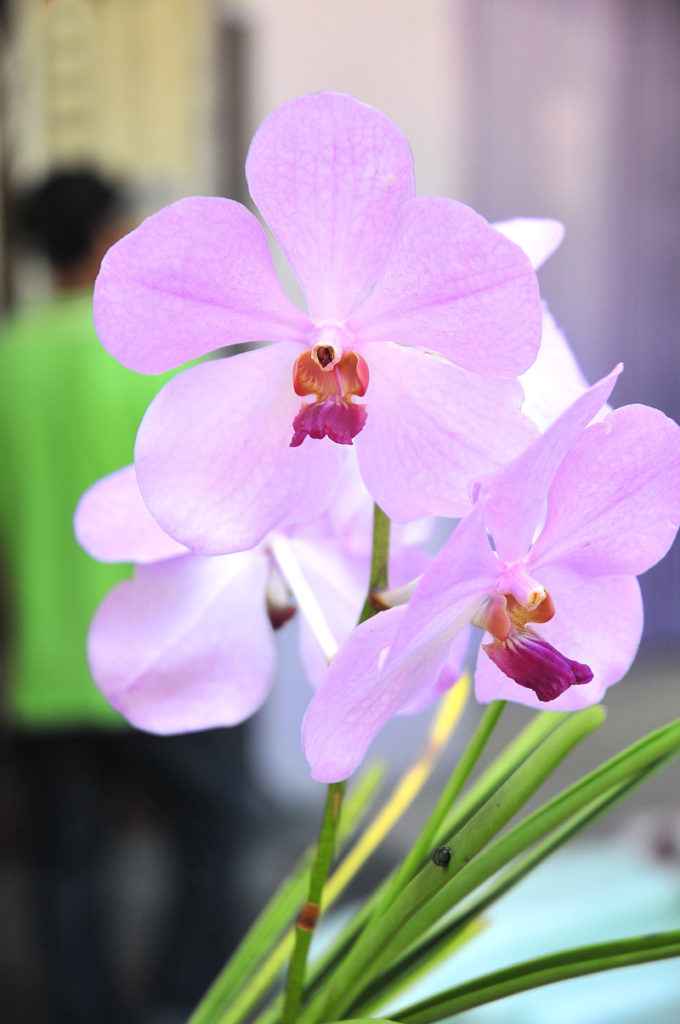
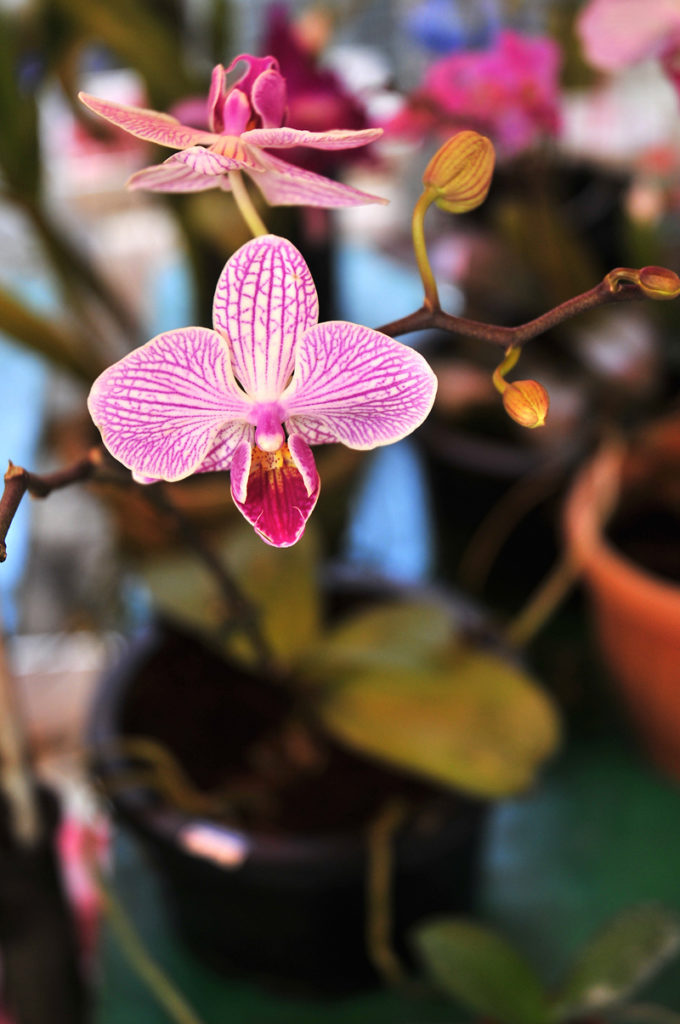
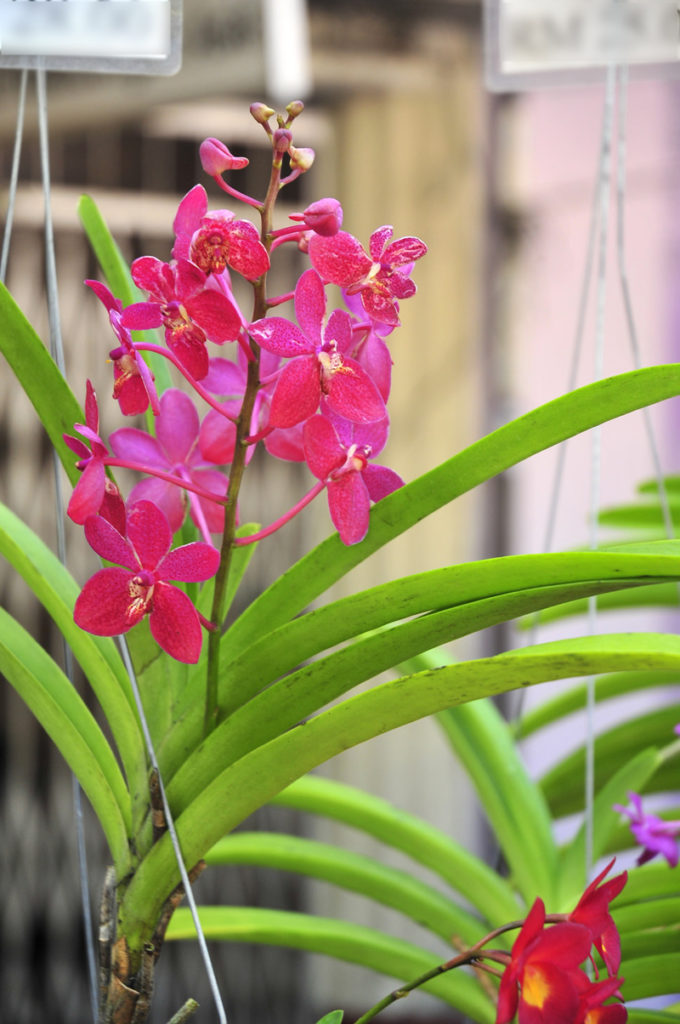
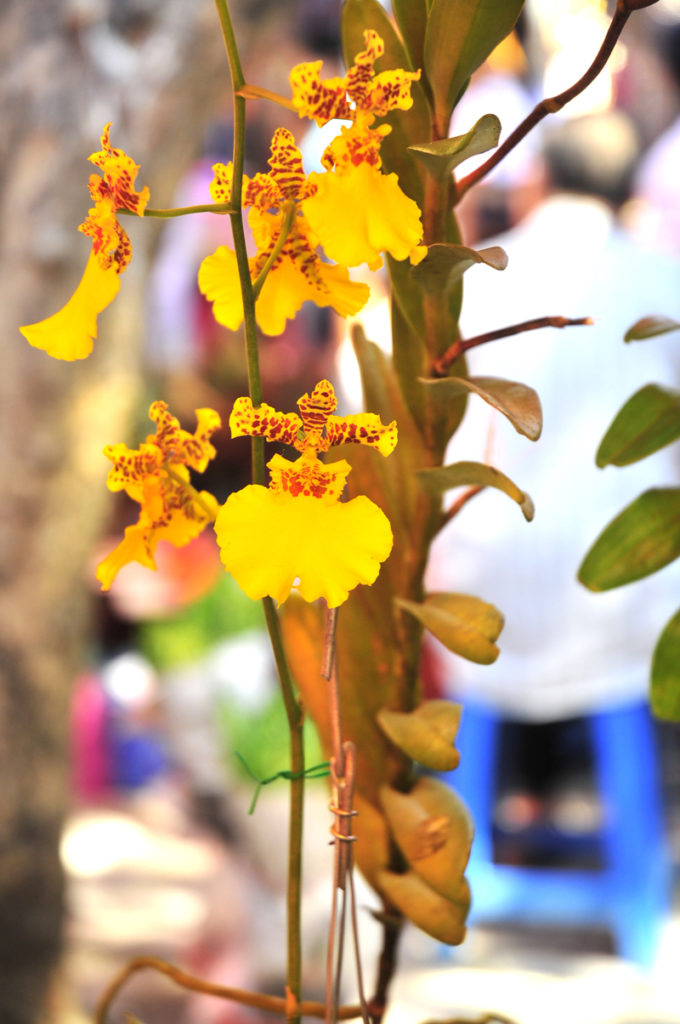
Fig. 26 : Some common orchids in Malaysia.
b. RAFFLESIA
Introduction
Rafflesia is popular as the plant with biggest flower in the world. It has no leaves, stem or roots, thus Rafflesia is a holoparasite, depending totally on its host plant. Germination of Rafflesia seed is unknown but the tissues threads of Rafflesia spread for about 1.5 years in the host plant, before the bud bulges out from its covering cupule [59]. All the while the plant grows sucking water and nutrients from the host plant which is normally a liana of Tetrastigma species from the Vitaceae family. When the bud that looks like a cabbage head blooms (that took about 170 days) [60]. The size of the flower could be extraordinarily large depending on the species. R. kerrii observed at Lojing in south Kelantan has a diametre of more than a metre. Fig. 28 shows Rafflesia kerrii from Lojing highlands. It has 5-6 petals or perigones supported by bracts attached to host plant. Its dome shaped diaphragm has an opening (window). Inside the space there is a column supporting the reproductive organs anther (male) and ovary (female).
Nais 2001 [60], also shows that the flower does not bloom for long. The blooming process takes about 24-48h. After about 4-8 days the flower withers and becomes a black mass of rotting plant tissue. However, it is during the 4-8 days that the flower attracted flesh flies (Lucilia and Sarcophaga) by emitting a putrid rotting flesh smell. The flies will come to the central disk presumably to feed and by doing so carry off pollen on their hairy legs and body. When these flies visit other blooming Rafflesia, cross pollination could happen to give rise to fertilised gamets that later develops on a Tetrastigma, taking about 46 months to begin the cycle.
Diversity
Rafflesia belongs to the family Rafflesiaceae. It is a cosmopolitan parasitic plant. There are 55 species in 8 genera in this family, found in the old world. In South East Asia there are only four genera: Rafflesia, Mitrastermon, Sapria and Rhizanthes. There is an obvious difference between the two: Rhizanthes has 14-18 flower lobes as against five in Rafflesia. Koorders, 1918 [61] (in Kamaruddin 2007) [59] described a total of 12 species of Rafflesia from Sumatra, Java, Borneo and the Malay Peninsula and the Phillippines. Nais, 2001 [60], however key-out 18 species for Rafflesia (Table11).
According to Kamaruddin 2007, [58] there are four species from Borneo (R. keithii, R. arnoldii,R. pricei and R. tengku-adlinii) fully documented and further three species: R. ciliata, R witkampii and R. borneensis, are probably extinct never having been documented since 1907.
Table 11: List of known Rafflesia species in South East Asia and Malaysia (asterisked*). [60]
| No. | Species | Distribution |
| 1. | Rafflesia arnoldii var. arnoldii* R. Brown | Borneo (probably Sarawak); Sumatra |
| 2. | Rafflesia arnoldii var. atjehensis (Koorders) Meijer | Aceh, Sumatra |
| 3. | Rafflesia borneensis Koorders | Borneo (NE Kalimantan) |
| 4. | Rafllesia cantleyi* Solms-Laubach | Peninsular Malaysia |
| 5. | Rafflesia ciliata Koorders | Borneo (NE Kalimantan) |
| 6. | Rafflesia gadutensis Meijer | West Sumatra |
| 7. | Rafflesia hasseltii* Suringar | Sumatra, Peninsular Malaysia, (possible Sarawak) |
| 8. | Rafflesia keithii* Meijer | North Borneo (Sabah) |
| 9. | Rafflesia kerrii Meijer | Thailand, Peninsular Malaysia |
| 10. | Rafflesia manillana Teschemacher | Philippines |
| 11. | Rafflesia micropylora Meijer | North Sumatra |
| 12. | Rafflesia patma Blume | Java, South Sumatra |
| 13. | Rafflesia pricei* Meijer | Borneo (Sabah, Sarawak, Brunei, Kalimantan) |
| 14. | Rafflesia rochussenii Teijsm. & Binn. | Java; Sumatra |
| 15. | Rafflesia schadenbergiana Goeppert | Philippines |
| 16. | Rafflesia tengku-adlinii* Mat Salleh & Latiff | Borneo (Sabah, NE Kalimantan) |
| 17. | Rafflesia tuan-mudae*Beccari | Borneo (Sarawak) |
| 18. | Rafflesia witkampii Koorders | Borneo (NE Kalimantan) |
| 19. | Rafflesia zollingeriana Koorders | Java |
Conservation
Through time, Rafflesia is being sought after by traditional healers for medical purposes. Called bunga pakma locally, this plant is being prescribed to assist in postpartum treatment. It is believed that by drinking decoction made by boiling the dried bud head with water and water drank afer childbirth, the liquid will restore health and strength.
Currenly Rafflesia is also sought after by tourists, it is an eco-tourism icon. People will go their way to see Rafflesia. Sometimes poor management may lead to the destruction of the plant. Another threat to the survival of this plant is by land developers that open up forest land for several purposes. When forests are clear cut, Tetrastigma will be destroyed and without its host plant, Rafflesia too will be annihilated. Unlike other wild life like elephants and orangutan,Rafflesia cannot be translocated, or domesticated or propagated through artificial means. As shown by Nais 2001 [60], there is an extremely high bud abortion and seed production is uncommon. These add on to the risk for survival of this vulnerable plant group.
Therefore, in order to protect Rafflesia one has to turn to legal tools and education. In the state of Sabah, the state government had taken the initiative to create a Rafflesia Information Centre based at km 58 on the Kota Kinabalu-Tambunan Road. This centre serves the purpose of educating the general public on the uniqueness of the plant and at the same time instilling a feeling of love and care for Rafflesia. In Fig. 27 is seen the species Rafflesia kerrii from Lojing Highlands, Kelantan.
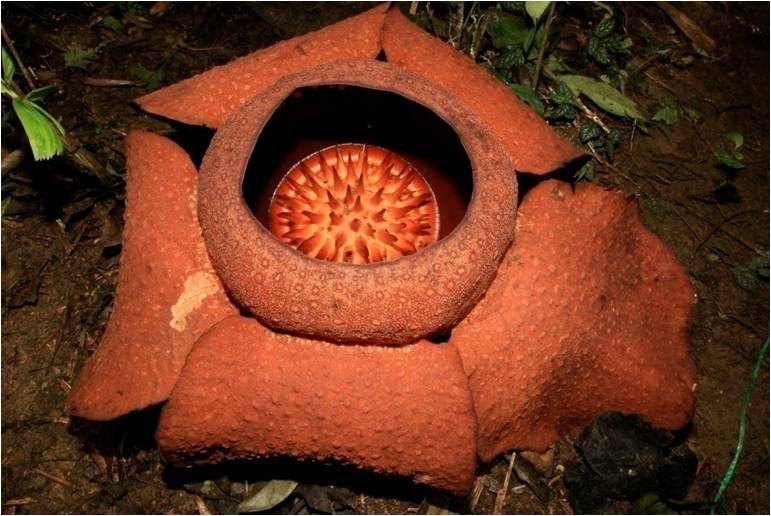
c. NEPENTHES
Introduction
Another unique plant of the tropical forest is pitcher plants or Nepenthes. They are carnivorous, attracting small organisms into their pot/jug-shaped pitchers, to be consumed/digested as source of nutrients that are otherwise limiting in their environment. The pitcher is a special modification of the apical tip of the leaf. Normally they grow in poor soil such as that found in the kerangas or heath forest. In addition they could also be found in peat swamp forest and secondary vegetation. A small clump of Nepenthes ampullaria had also been observed near a mangrove swamp, in the heart of Kota Kinabalu. Nepenthes can also be found in highlands. In mount Kinabalu they could be found at elevation of 1500 to 3350 metres above sea level. The poor soil support plenty of Nepenthes, found climbing shrub and trees. They are however, not found in the fertile valleys. Ghazali & Lamri, 1996 [62] described insectivorous plant Nepenthes from 1500-3350 metres thriving on poor soil and noted some 81 species of Nepenthes world wide, with 36 species in Borneo and ten in the Kinabalu Park.
Corner 1996 [63], gives an excellent description of the pitcher as “the leaf stalk becomes narrow blade, the true blade is the pot with its lid; and the length of of midrib between the two becomes a sensitive stalk that twines as a tendril round objects of support. The young pitcher while closed by its lid, secretes a thin slimy, digestive juice into its cavity, when the lids open, inquisitive insects enter and descent but, unable to surmount the peristome or corrugated rim round the mouth of the pitcher, they cannot escape and eventually slither down the smooth sides and drown in the liquid. They are digested; the water becomes a stinking soup from which the base of the pitcher absorbs nourishment for the growth of the plant. Thus on poor open soil where their brown slip-like seeds germinate, pitcher plants can thrive through this insectivorous habit, even the first tiny leaf above the coltyledon has a minute, if imperfect pitcher”.
The pitcher is schematically shown in Fig. 28. Within the pitcher the inner cell layers secrete water and enzyme. At the neck of the pitcher, below the lid (operculum) there is also secretion that attracts small invertebrates such as insects. When insects come to this part, they will slip and fall into and drown in the water in the pitcher. Enzymes in the water will decompose the insects into organic soup full of nutrients. These nutrients will be absorbed by the cells at the base of the pitcher and sent to other parts of the plant that need them for growth.
Due to this ability and adaptation, Nepenthes can grow in poor soil. Stem of Nepenthes is slender and climbs other plants. Pitchers that grow near the ground level are normally different from those that grow at the upper portion of the plant. Being supported by the ground, the pitchers tend to be bigger and sack-like, with wider mouth. Those on the upper leaves, hanging freely tend to be slenderer.
Tiny flowers of Nepenthes have four petals and they are produced in large number, in inflorescence. They are insects pollinated. When two or more Nepenthes species grow in close proximity and flower at the same time, some cross fertilizations may occur, producing fertile seeds. When this happens, we find natural hybrids of Nepenthes occurring. In Maliau Basin, Sabah for example, the Nepenthes stenophylla x Nepenthes tentaculata hybrid is common. In such hybrids intermediate characters are found especially in the pitchers.
Traditionally, in Malaysia the roundish shaped pitchers of Nepenthes ampullaria has been used by the Malay communities to steam rice in. Apparently, rice steamed in Nepenthes pitchers has a unique taste. Nepenthes too provide water source for animals (and people) in the forest of Mount Kinabalu. Nepenthes rajah could contain about 4 litres of water [63]. According to Wee 1992 [64], Nepenthes ampullaria a small size Nepenthes, had been used in traditional medicine. It contains flavonoidal glycosides, anthraquinone glycosides and phenols. Its roots are boiled and made into poultice to treat stomach ache and dysentery. A decoction of the stem is drunk for fever. In Kinabalu Park, Sabah, Nepenthes are being enjoyed in tourism. The big sized Nepenthes rajah received much attention besides the many other species with peculiar shapes and sizes.
Diversity
Nepenthes belong to the family Nepenthaceae. There are about 81 species in the world, but new species are being found. Most species are found in South East Asia (Borneo, Sumatra, Peninsular Malaysia, Java, southern Philippines) and some in Madagascar, Seychelles, India, Sri Lanka, New Caledonia, Australia and southern China; and secondary centres of diversity include New Guinea, the Philippines and Sulawesi [65].
Nepenthes are of Bornean affinity and there are about 20 species in Sabah; 24 in Sarawak; 20 in West Sumatra and 17 species in North Sumatra [65]. Table 12 lists the Sabah species, indicating those found in Mount Kinabalu and those endemic to the mountain. This table combines the list provided by Clarke 2001 [65] and Corner 1996 [63] and produces a list of 26 species.
Conservation
Nepenthes are not easy to domesticate. Recently, some effort had been made and some species had been successfully tissue-cultured and able to be grown in home gardens. Shown in Fig. 29 are two species found in the market. The one with larger pitcher is Nepenthes rafflesiana and one with smaller picher is Nepenthes gracilis. Their shape and size attract people’s attention and thus are tempting for people to take. Some kind of protection had to be given to this group of plant. By gazetting areas where these plants are found as protected areas, is one way of in-situ conservation for them.
At the same time more studies could be done to provide for more information. This information could be useful to educate people on the importance of this conservation. With more information this plant could also be packaged as tourism product, like Rafflesia.
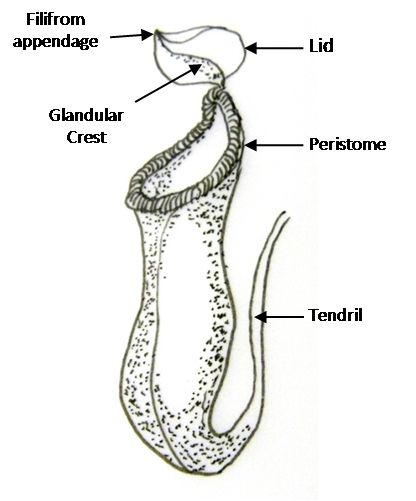
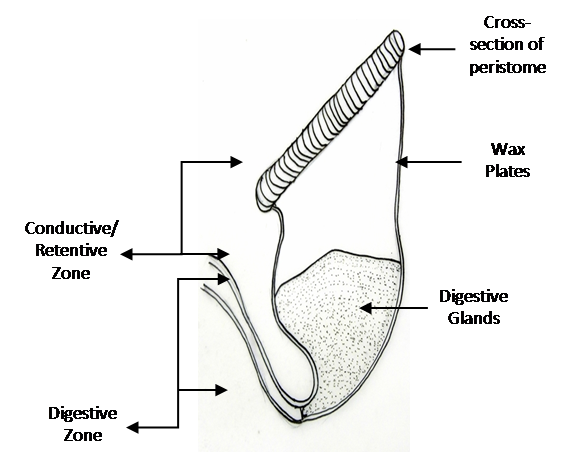
Fig. 28 : Schematic drawing of Nepenthes pitcher.
Table 12: List of Nepenthes found in Sabah, Malaysia.
| Species | Species | ||
| 1. | Nepenthes alata* (Cr) | 1. | Nepenthes macrophylla (Cl) |
| 2. | Nepenthes albomarginata (Cl) | 2. | Nepenthes macrovulgaris (Cl) |
| 3. | Nepenthes ampullaria (Cl) | 3. | Nepenthes macfarlanei* (Cr) |
| 4. | Nepenthes bicalcarata (Cl) | 4. | Nepenthes maxima* (Cr) |
| 5. | Nepenthes boshinia* (Cr) | 5. | Nepenthes mirabilis (Cl) |
| 6. | Nepenthes burbidgeae**(Cl, Cr) | 6. | Nepenthes pilosa* (Cl, Cr) |
| 7. | Nepenthes edwardsiana* (Cl, Cr) | 7. | Nepenthes rafflesiana (Cl) |
| 8. | Nepenthes ephippiata*(Cr) | 8. | Nepenthes rajah** (Cl, Cr) |
| 9. | Nepenthes fusca* (Cl, Cr) | 9. | Nepenthes reinwardtiana (Cl) |
| 10. | Nepenthes gracilis* (Cl, Cr) | 10. | Nepenthes stenophylla* (Cl, Cr) |
| 11. | Nepenthes hirsuta*(Cl, Cr) | 11. | Nepenthes tentaculata* (Cl, Cr) |
| 12. | Nepenthes kinabaluensis** (Cr) | 12. | Nepenthes veitchii (Cl) |
| 13. | Nepenthes lowii*(Cl, Cr) | 13. | Nepenthes villosa** (Cl, Cr) |
Cl : Clarke 2001 [65] Cr : Corner 1996 [63] *found on Mount Kinabalu **endemic to Mount Kinabalu
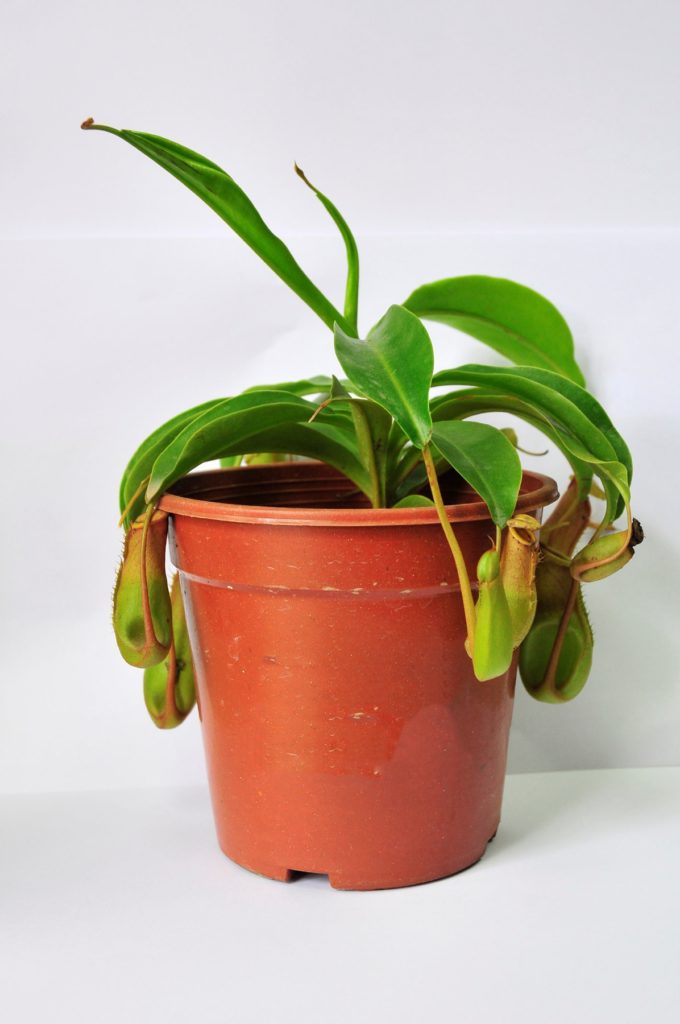
d. FIGS
Introduction
Fig is also known as the magic tree of the tropical rainforest. This group of plant is normally found in lowland forest, although there are some on mountains. In Mount Kinabalu, most species do not ascend above 1,400-1,500m but some reach 1800m and Ficus deltoidea var. kinabaluensis can be found on rock-slab at 3,250m, highest altitudinal record for the genus, though it seems too high for reproduction, because neither fig insects nor seeds appear to develop at this elevation (Corner 1996) [55].
Most fruiting plants that provide food for the wildlives in the tropical rainforest bear fruits seasonally. Thus, there are times when there are not many fruits available. Figs however will fruit all year round. As such animals which depend on fruits could fall back on to figs during the lean seasons, and that is why the fig is called the magic tree. In some forests up to 70% of its animals’ diet depend on figs, and the number of fruit-eaters determines the number of predators of fruit-eaters [66].
One unique thing about fig is that some species are stranglers. Birds or rodents that feed on figs will disperse fig seeds on tall trees. The seed germinates and the roots will grow downwards and sideways to encircle the host plant. According to Cranbrook & Edwards 1994 [57] as the fig grows bigger the roots join and divide, extending progressively down the host trunk until they reach the ground. Other roots will drop straight to the soil, and once it has access to soil nutrient, the ramifying fig crown grows out through that of the support plant and shading it. This will eventually cause death to the host, and it is normal to find old fig tree standing with a hollow inner part.
In Malaysia some fig species could grow so huge that some people believe that the tree is sacred and are being guarded by some spirits. In some religion like Hindu, deity are place under such majestic trees to be worshipped (Fig. 9).
Another unique character of fig is that some species produce fruits at the main stem. Such phenomenon is called cauliflory and is typically found in a tropical forest. The fruits are developed after pollination and here lies another uniqueness of fig, in its life cycle. The flowers of a fig are found within a structure called synconium. It has a unique shape the petals are arranged in such a manner that allow only certain insects to pollinate. Pollinators of figs are Hymenoptera. [67] The shape of the pollinator had adapated so much so to the shape of the fig flower that it is thought that one fig can be pollinated by only one particular pollinator species. A study by Mahendran 2004 [68] however, showed the occurrence of two species of wasp in fruit of the fig species, Ficus racemosa.
Diversity
Figs belong to a family of plant called Moraceae. There is altogether, some 8000 species world wide. There are about 135 species of figs in Borneo, and 78 species in Kinabalu Park, with 14 endemic species and five endemic varieties of other fig species, making Kinabalu perhaps the richest area for fig diversity in the world. [63] Members of figs all belong to one genus, Ficus. Distribution is mainly tropical with most on lowland and some could be found on highlands.
There are basically three types of figs:
a. Strangler figs: seeds will germinate in the fork of branches of supporting plant and aerial roots (Fig. 30) and stem will overgrow, overwhelm and eventually smother and kill support plant.
b. Rock splitting figs: Seed will grow on rocky outcrops, even concrete walls. Roots will squeeze into crevices and cracks, and splitting apart rocks and walls.
c. Free-standing figs: Seeds geminating on open land will grow lika a normal free standing tree.
Conservation
Since the pollination process of the fig is very peculiar and specific to pollinators, any threat to the specific pollinators may cause extinction to the fig species. Development of fig and fig wasp (Blastophaga: Cranbrook & Edwards, 1994) [57] is so close that it is considered as co-evolution. Opening of forested area is again the main threats to conservation of figs. Education is needed for people to understand importance of fig as keystone species. Without this group of plants many wildlives will not be able to survive in the tropical rainforest.
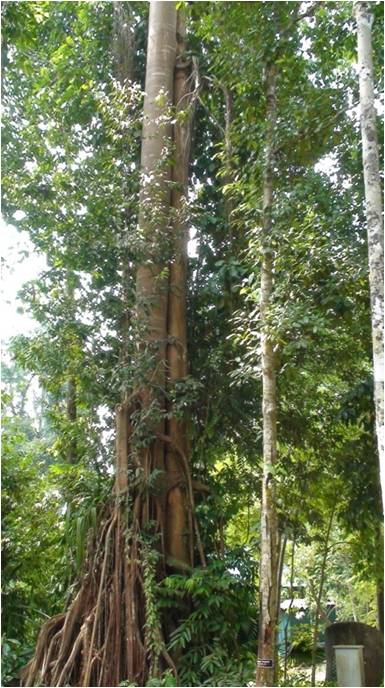
6. VALUES OF PLANT
Plants as a component of biodiversity are valuable in many ways. They have utilitarian value, being directly useful as foods, medicines, as construction materials. They have intrinsic value, doing services such as photosynthesising and replenishing oxygen on planet earth for living organisms to breathe; their root systems maintaining ground water level that fill up wells, rivers and streams. Aesthetically plant parts like flowers are pleasant to the eyes and used to decorate homes, offices and hotels. Plants also have a place in cultural rituals and belief. For the Malays of Malaysia, the sireh (Piper betel– Fig. 31) leaves are a symbol of introduction that must be brought to an engagement or wedding ceremony. Plants have optional value too. In the current situation several species of plants are considered as endangered/vulnerable. These plants are becoming more valuable as they get scarcer. In this section the values of plants in Malaysia will be discussed under the following headings: utilitarian values, intrinsic values, aesthetical values, moral values and optional values.
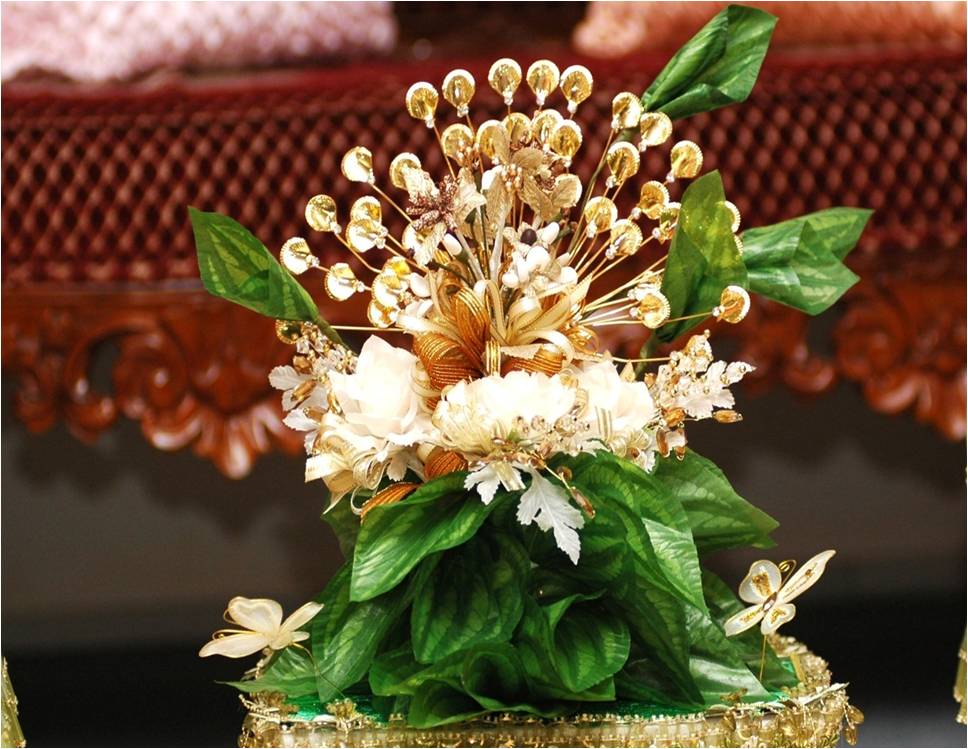
a. Utilitarian values
All over the world people use plants extensively as foods, medicines and building materials. However, the types of plants used may differ. In Malaysia the staple food is basically rice, whereas in Europe people eat bread (from wheat) and potatoes (in Malaysia potato is commonly considered as vegetable). Vegetables, fruits and herbs also differ. Commonly used herbs in Malaysia are spring onion, Chinese celery, coriander leaves (cilantro), turmeric (and leaves), galangal, ginger and lemon grass, whereas in Europe a cook would use sage, rosemary, mint, dill, parseley, basil and bay leaves, among others.
Since olden days, Malaysian has used plants in curing minor ailments and diseases. When compared to the other parts of the world, most plants used in Malaysia for traditional medication are different. This could be clearly seen when one refers to publication such as Foster & Johnson 2008 [69] that refers to medicinal plants of many parts of the world and Gao Xuemin et al., 2006 [70] who focused on Traditional Chinese Medicines. Nevertheless, within these books one could find few plants used in common by Malaysian, such as Centella asiatica and Zingiber officinale (gingers).
Besides providing food and medicines plants also provide timber for building houses and other forms of shelter, boat, ships and railway slipper for human transportation.
b. Intrinsic values
Intrinsic values of plants are many. Firstly by producing oxygen as a by-product of photosynthesis, plants replenish oxygen needed by all organisms in the world. Secondly trees absorbed carbon dioxide and water through photosynthesis produce carbohydrates used to build plant parts, leaves, stem, branches, flowers and fruits. The vastness of a forest with dense coverage of foliage, the trunks and roots systems (Fig. 32) are all made up of organic matter, mainly carbon. While these trees are still standing they are a carbon store or a carbon sink. This is important especially now when the amount of carbon dioxide emitted has grown higher tremendously by the burning of fossil fuel to produce energy to move vehicles, machinery and energy to light up, warm and cool buildings. By planting more trees or maintaining existing forests, more carbon will be taken up and stored by plants.
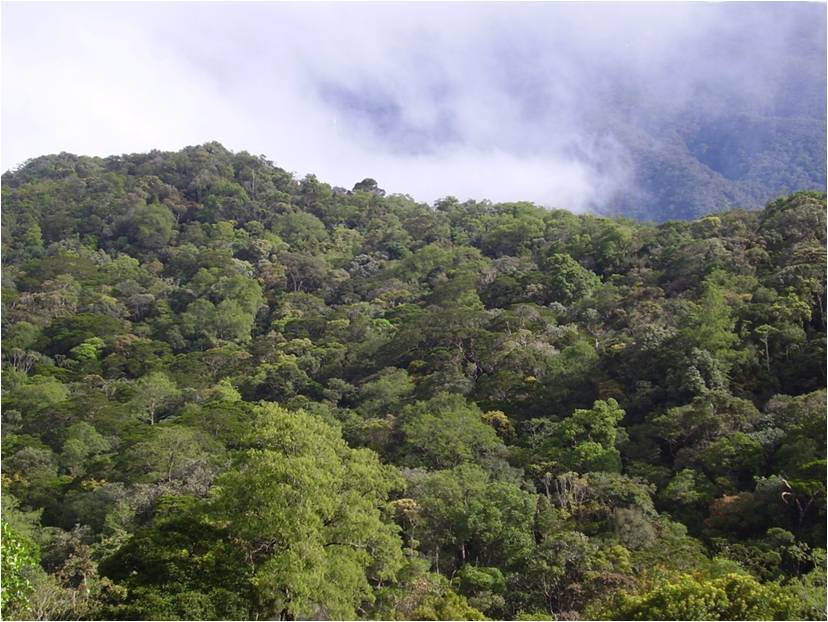
Trees absorb water through their root system. As the many fine root hairs absorb the water and water from plants are lost by the leaves through transpiration more water will be pulled up into the plants. This pulling effect of water by the extensive root system of forest trees will cause the ground water level to rise. And if the ground water level is above the floor of a stream/river system, water will flow into the stream/river bed. Since Malaysia lies in the tropics and does not have other sources of water (such as snow), these rivers become important source to supply water for people here. Plants are actually helping with providing of water for people in Malaysia and many parts of tropical world.
Soil in the tropics obtained nutrient to enrich itself by several sources. Rainfall that falls slowly through the canopy leaches out micronutrient such as Magnesium, Potassium, Zinc, Nitrate, from leaves and other plant parts. Nutrient especially nitrates could also be synthesized by microbes that could be found living in or around the root hairs of the legume plant group. The microbe Rhizobium that lives in or around the roots off a legume plant (example ground nuts) assists in producing nitrate useful to growth of the plant.
c. Aesthetical values
It is said that green is good for the eyes. Children living in a green environment tend to be psychologically more stable than those living indoors and not exposed to greenery. People in Malaysia and all over the world appreciate colourful and sweet smelling flowers of plants. There are now house plants to provide for some greenery within the house. Since people love looking at greenery and delightful with pleasantly coloured flowers and perhaps fruits, many plants have been domesticated to fulfill the need to bring plants to homes. This develops into the horticultural industry which has supply many home, offices with domesticated plants. Certain ornamental plants have also been used to line roads and passageways. The cut flower industry has supplied florists with numerous species of flowers, some long lasting like the orchids. Special events such as Valentine’s day, mother’s day, weddings, graduations (convocations), some religious functions, remembrance day, festivals and other events see the need for flowers, that sometime exceed the supply.
Plants have and will indeed provide for the aesthetical value much needed for stressful souls of the modern man.
According to WRI & CEE 1997, [71] each species is unique and has a right to exist, and worthy of respect regardless of its worth to human beings and this view was recognized in the World Charter for Nature adopted by the UN in 1982. For some believers, certain plants have sacred values. Hindus for example offer Hibiscus to Goddess Kali and Datura to Siva. [71] Around Hindu temples the neem (Azadirachta indica) trees, seen in Fig. 33 are commonly planted. And to the Hindu the leaves of neem are hung at their door to ward off evils. Leaves of neem are also very useful in curing small pox and other skin diseases.
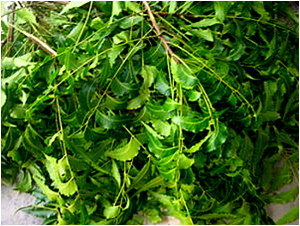
For the Chinese the golden tangerine or mandarin signify prosperity and are offered to guest during Chinese New Year, meaning wishing the guest a happy and prosperous new year. Their guests will also be offered kuaci (seeds of certain plant species) and red dates during the festival. Chinese also made offerings of pomelo, pineapples, apples and oranges to their dead ancestors.
The ethnics of Sabah and Sarawak, had always considered paddy (Oryza sativa) as a sacred plant. There is a legend attach to this belief and is described later.
e. Optional values
Perhaps the least thought of plant group in Malaysia are the ones having optional values. The more scarce the plant gets the higher is the value. One example is the Rafflesia, which is now a tourism icon in Malaysia. People would pay money and travel to remote areas in Malaysia to see this biggest and unique flower. Being without leaf thus, not able to photosynthesise to make its own food, this group of plant parasitizes a climber plant called Tetrastigma, belonging to the Vitaceae, the grape family. Tetrastigma climb other bigger trees to get sunshine to photosynthesise to make its own food. They are called lianas or climbers. When larger trees are cut down for timber, Tetrastigma will be dragged down as the tree falls. Destruction of Tetrastigma will have impact on survival of Rafflesia. In addition to having tradition medicinal value, Rafflesia is being harvested at times indiscriminately by local people to be sold in local marketplace.
7. USES OF PLANTS
Plants have many uses– as foods, medicines, provide building materials and so forth. Of all these, food is the most pressing need, and obviously, directly or indirectly, plants are the main sources of our food. Through photosynthesis, plants utilize energy from the sun to convert carbon dioxide (CO2) and water into sugar, as such, the producers of the food chain. Plants are the base of most food chain, whether eaten by human directly or indirectly (when eating meat and meat products). In addition, let us not forget that oxygen, given-off as a by-product of photosynthesis, is the Earth’s continuous source of oxygen essential to the survival of human, as well as animals.
To get a general feeling of the importance of plants to people, Table 13 is given. In the table the major families of plants are listed. For each family, its economic importance is given. The main use would be as food, medicines and construction materials.
Table 13: Economically important Angiosperm families.
| Scientific family name | Common family name | Economic importance |
| Aceraceae | Maple | Lumber, maple sugar |
| Anacardiaceae | Mango | Edibles (mango, cashew), lumber |
| Apiaceae | Carrot | Edibles (carrot, celery) |
| Arecaceae | Palm | Edibles (coconut), cooking oil, fibre oils and waxes, furniture (rattan) |
| Asteraceae | Sunflower | Edibles (lettuce), oils (sunflower oil), ornamentals (daisy) |
| Brassicaceae | Mustard | Edibles (cabbage, cauliflower, broccoli) |
| Cactaceae | Cactus | Ornamentals, psychoactive plants |
| Cannabaceae | Hemp | Psychoactive (marijuana), fiber plants |
| Chenopodiaceae | Goosefoot | Edibles (spinach), beet sugar |
| Clusiaceae | Bitangor | Lumber, edibles (mangosteen) |
| Cucurbitaceae | Gourd | Edibles (melons, squashes, cucumber) |
| Euphorbiaceae | Spurge | Rubber , medicinals (castor oil), edibles (cassava), ornamentals (poinsettia) |
| Fabaceae | Bean | Lumber, edibles (bean, peas), oil, dyes, forage, ornamentals |
| Fagaceae | Beech | Lumber (oak), edibles (chestnut), dyes (tannins), ornamentals |
| Iridaceae | Iris | Ornamentals |
| Juglandaceae | Walnut | Lumber, edibles (walnut, pecans) |
| Lamiaceae | Mint | Aromatic herbs (sage, basil) |
| Lauraceae | Laurel | Aromatic oils (bay leaves), lumber |
| Liliaceae | Lily | Ornamentals, edibles (onion), poisonous |
| Magnoliaceae | Magnolia | Ornamentals, lumber |
| Malvaceae | Mallow | Fiber (cotton), seed oil, edibles (okra), ornamentals (hibiscus) |
| Moraceae | Figs | Edibles (jackfruit, breadfruit, cempedak) |
| Musaceae | Banana | Edibles (banana), fibers |
| Myrtaceae | Myrtle | Timber, medicinals (eucalyptus), spices (cloves) |
| Oleaceae | Olive | Lumber, edible oils and fruits (olive) |
| Orchidaceae | Orchid | Ornamentals, spice (vanilla) |
| Papaveraceae | Poppy | Medicinal and psychoactive (opium poppy) |
| Piperaceae | Pepper | Black pepper, houseplants |
| Poaceae | Grass | Cereals (rice, wheat, corn, barley), forage, ornamentals, handicrafts |
| Ranunculaceae | Buttercrup | Ornamentals, medicinal, poisonous |
| Rosaceae | Rose | Fruits (apple, cherry, plum) ornamental (roses) |
| Rubiaceae | Coffee | Beverage (coffee), medicinal (quinine) |
| Rutaceae | Citrus | Edibles (orange, lemon, lime) |
| Salicaceae | Willow | Ornamentals, furniture (wicker), medicine (aspirin) |
| Sapindaceae | Rambutan | Edibles (rambutan), lumber |
| Solanaceae | Nightshade | Edible (tomato, potato), psychoactive (poisonous (tobacco, mandrake) |
| Theaceae | Tea | Beverage (tea) |
| Vitaceae | Grape | Edibles (grapes), wine |
| Zingiberaceae | Ginger | Spice (ginger, turmeric), medicinal, ornamental, essential oils |
Some plants are well known to be useful to people because of the chemicals they contain. These chemicals are normally the secondary metabolites of the plants. Secondary metabolites are chemicals produced by plants as bye-products of some physiological process such as metabolism. Zooming into the chemical components of plants that made them useful, Table 14 is given.
Table 14: Naturally occurring chemicals in plants and their common use by humans.[72]
| Chemical compound | Examples | Use by Humans |
| Terpenes | Essential oil Taxol | Herbs and spices / flavors Perfumes / incense Chemotherapy |
| Phenolics | THC (tetrahydrocannabinol) Urushiol | Hallucinogen / glaucoma treatment Allergen |
| Glycosides | Cassava – cyanogenic glycosides Yam – saponin Digitoxin | Starchy staple Starchy staple / source of steroids Heart medication |
| Alkaloids | Caffeine Ephedrine Quinine Morphine Cocaine Mescaline | Stimulant Stimulant / decongestant Treatment for malaria Pain relief, psychoactive Anesthetic / psychoactive Hallucinogen |
A. FOOD PLANTS FOR PEOPLE
In the world there are 250,000–300,000 [30] species of vascular plants (plants having vascular bundles). Of these less than 3000 are being eaten as food by people of the world. In Malaysia people eat plants either as staple food, vegetables, fruits, or to provide flavour and aroma. Some plants provide nutritious juices.
Staple food plants
Basically this group of food plants is rich in carbohydrates and polysaccharides. Examples are paddy (Oryza sativa), sago (Metroxylon sagu), tapioca (Manihot esculenta) and maize (Zea mays). Generally rice is consumed by most Malaysian, regardless of ethnicity, culture and belief. Sago is favoured by certain ethnics. One such ethnic is the Melinau of Sarawak and the Brunei Malay of Sabah. Tapioca is consumed to a lesser extent by the Bajau Palaut of Sabah. Fig. 34 shows the commonly used plants as staple food.
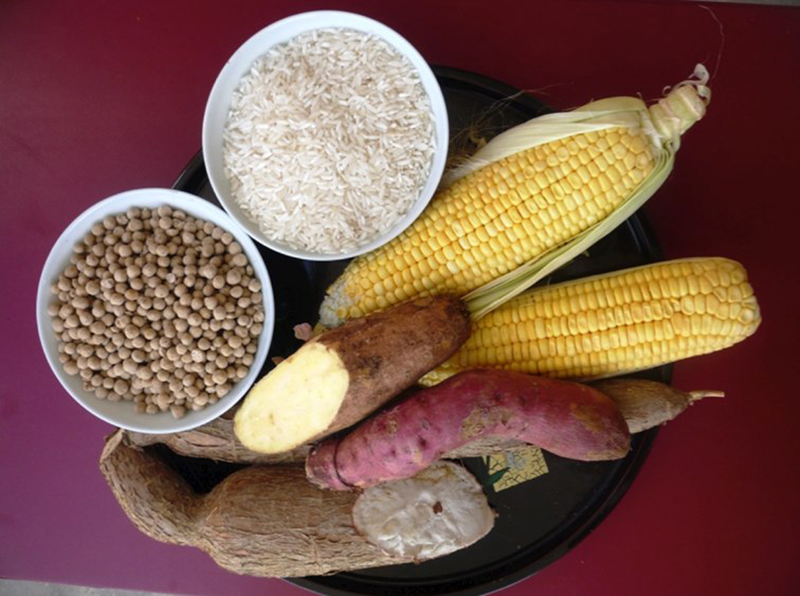
Vegetables
This group of plants complements the staple food plants. They contain vitamins and specific macro- and micronutrients necessary to provide immunity to the human body. There are more than 50 kinds of vegetables commonly consumed by Malaysians. Most of these vegetables could be grown in the warmer lowland farms, but some (mainly originating from temperate region) are grown in the highlands. The two main highland vegetable growing areas are the Cameron Highlands in Peninsular Malaysia and Kundasang, at the foot of Mt Kinabalu, in Sabah (Fig. 35). As could be seen from the two photographs below, vegetables such as cabbage, carrots, asparagus and potatoes are grown in the highlands (Fig. 36). On the other hand most other kinds such as beans, leafy vegetables (kailan, Chinese cabbage, spinach etc.), chillies, brinjals, ladies finger and others are commonly grown in the lowlands (Fig. 37). To get details of vegetables commonly found in Malaysia.For table listing of vegetables consumed by Malaysian with local English and Malaysian name, Latin names and photos, please refer to hyperlink.
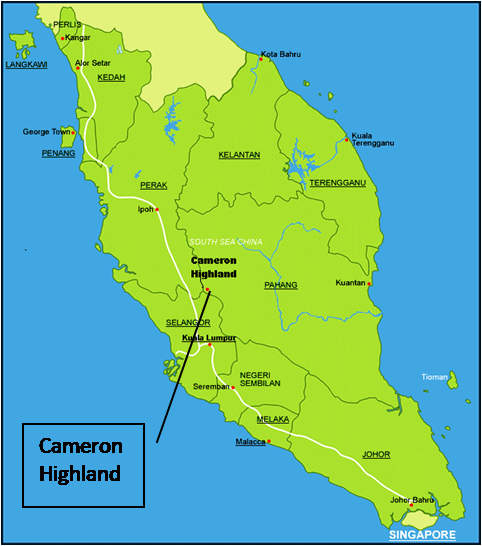
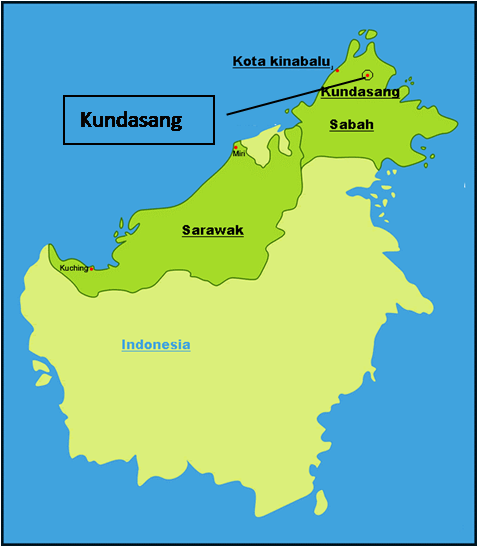
Fig. 35 : These are the two highland vegetable growing areas in Malaysia: the Cameron Highland, in Pahang (Peninsular Malaysia) and Kundasang, Sabah (Borneo)
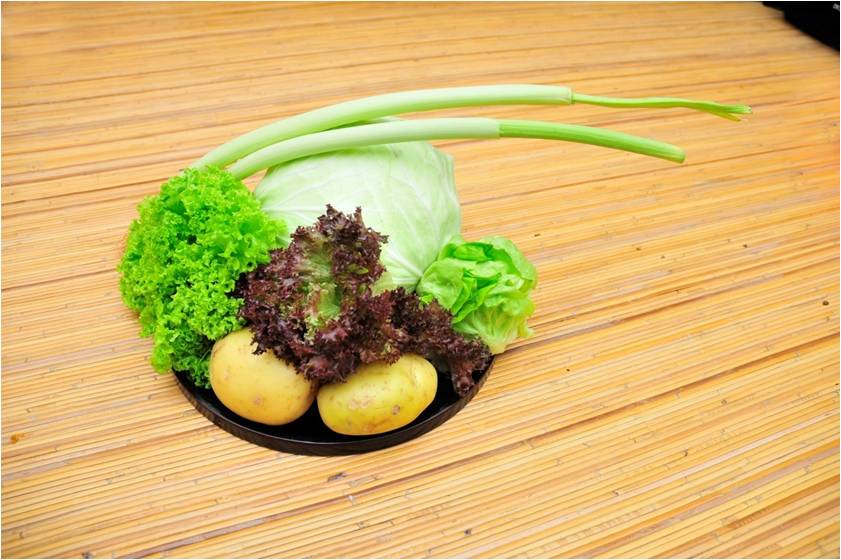
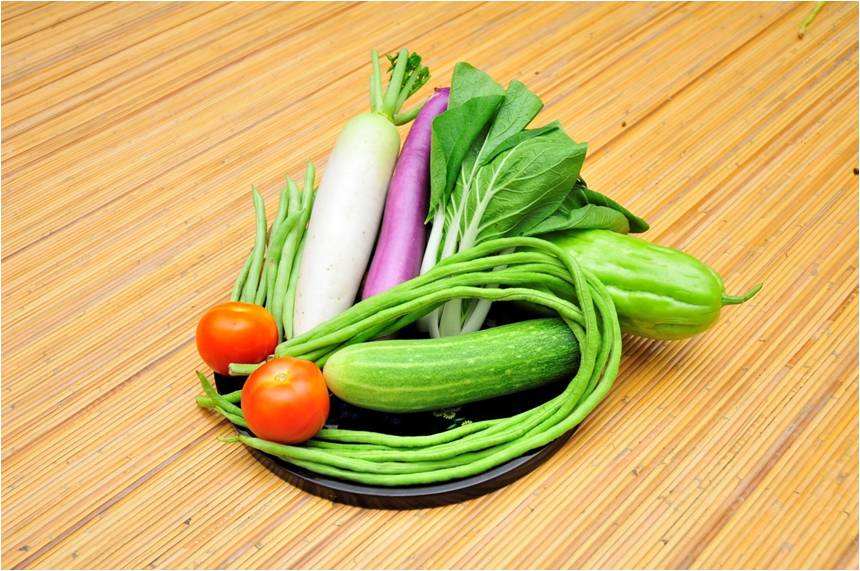
Spices and herbs
Malaysia is a multicultural nation. The major ethnics are the Malay, Chinese, Indian mainly living in the nine states and two federal territories in Peninsular Malaysia. In Sabah and Sarawak, two Malaysian states in the island of Borneo, and the federal territory of Labuan there are more than 50 ethnic groups. As such, the cuisines are extremely varied. The uses of spices and herbs in food are also variable. Indian dishes tend to have very spicy taste; using peppercorns, coriander, cinnamon, aniseeds, turmeric, fenugreeks and other spices freely. The Chinese uses lots of gingers and sesame oils. The Malay uses both spices and herbs of the Indian and Chinese with additions: such as galangal, lemon grass, seed of nutmeg, kaffir leaves, tamarind and coconut milk. Lesser spices are used in native cuisines of Sabah and Sarawak, though people in these two states have their own special herbs used in cooking. Spices and herbs give peculiar taste, colour and flavour to dishes. Fig. 38 shows some spices used in Malaysia by the Indians and Fig. 39 shows common herbs used in Malay cooking. To get the full list of spices and herbs used in cooking in Malaysia with Malay/English common names and photographs, please refer to hyperlinks.
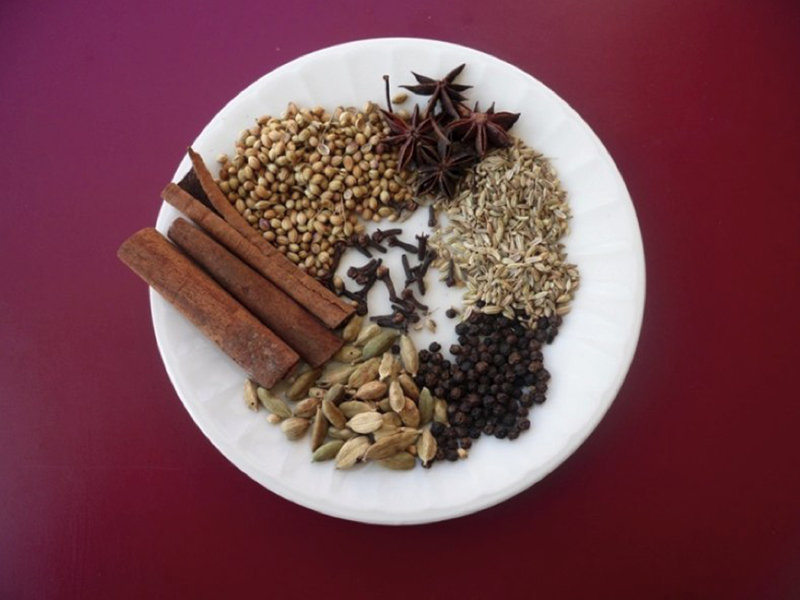
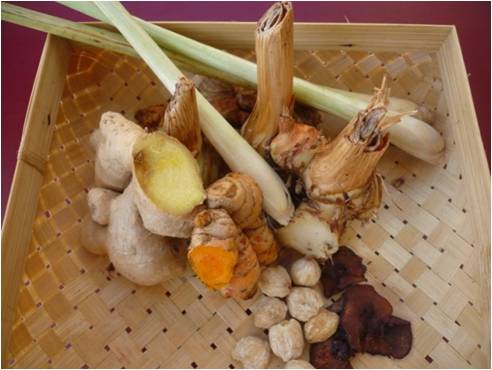
Fruits
The tropical fruits of Malaysia are now widely distributed all over the world. Papaya (Carica papaya) and the many varieties of banana (Musa sapientum) are commonly known. Rambutan (Nephelium lappaceum) and langsat (Lansium domesticum) are lesser known. Mangosteen (Garcinia mangostana) is known as the queen of fruits with its delicate white flesh enclosed by dark violet skin. On the other hand durian (Durio zibethinus), is called the king of fruits. The creamy flesh of durian has very strong smell which is adored by Malaysians but may be offensive to non-Malaysians. The brownish delicate ciku (Manilkara zapota) has sweet taste not easy to describe and needing a personal experience. Mango (Mangifera indica) is another common fruit in Malaysia that has many varieties. Water melon grows well in some sandy soil of Malaysia. There are two variety of water melon– the red and the yellow water melon. In the same groups are the honeydew melon and rock melon. Some species of citrus (lime and oranges) originate in Malaysia. Most have sour and bitter flavour thus not consumed as fruits. Those considered as pleasant fruits are the sweet or honey tangerines/mandarins (Citrus reticulata) and juicy sweet pomelo (Citrus grandis). The star shaped Averrhoa carambola or appropriately called star fruit is also another juicy fruit.
Another fruit, belonging to the Artocarpus group is the Jack fruit (Artocarpus heterophyllus), with yellow or golden meaty flesh it has unique taste which require a personal eating experience. Together with Jack fruit is the cempedak (Artocarpus champeden/Artocarpus integer) which look similar but have softer texture and generally sweeter taste, and a far stronger smell. The durian Belanda literally translated as Dutch durian (Annona muricata) has white flesh, fairly juicy and also best made into a drink. Some local fruits can be seen in Fig. 40. Besides the Dutch durian, many other fruits could also provide juice. Examples are orange, apple, tangerine/mandarin (Citrus reticulata), lime, kalamansi, melon, honeydew melons, star fruits and mangoes. To obtain a list of common fruits found in Malaysia with common Malay/English names and Latin names and photographs, please refer to hyperlink.
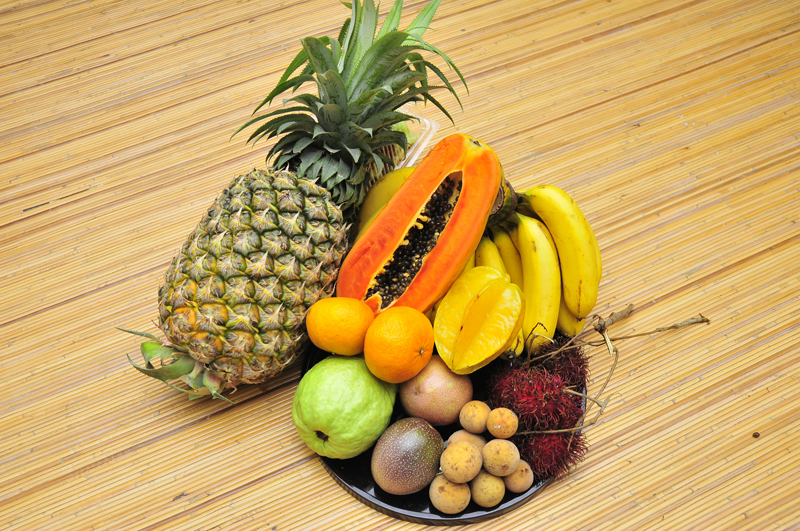
In the rural areas, normally near forest patches, people still go to the forest for some resources. One of the resources that can be obtained from these forests are the rare fruits. An example of a rare fruit that could be obtained from Malaysian forest is the kelubi a sour fruit from the rattan family (Fig. 41).
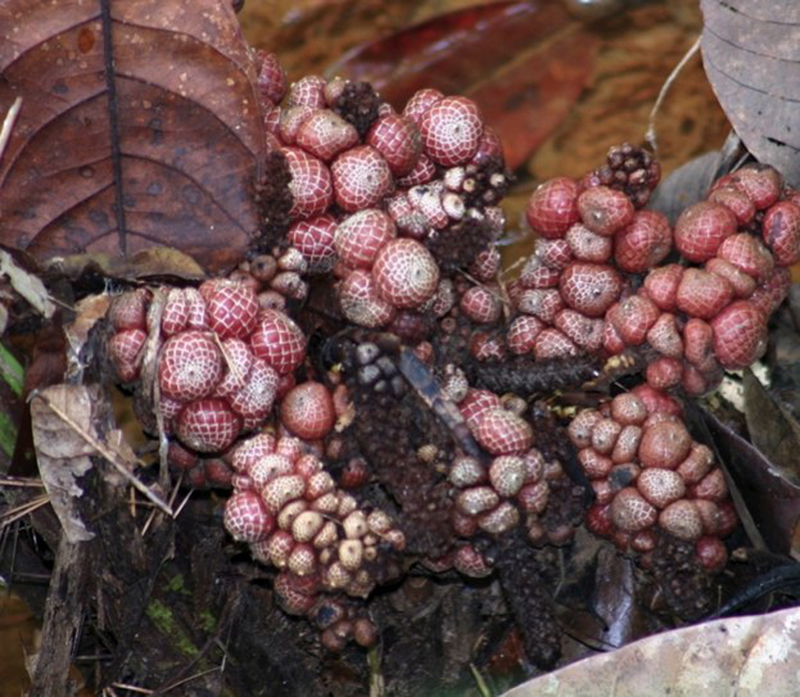
Aromatics
During ancient time people in Malaysia has been using naturally occurring plant to make their food sweet smelling. For this the most commonly used plant is the pandan (Pandanus amaryllifolius). Besides for food, this species of plants is also used during celebration like wedding. Leaves of this plant is sliced very finely, then thoroughly mixed with a small amount of oil to prevent drying up. Sweet smelling perfume and also sweet smelling flower are then mixed into it. Pinches of this fresh potpourri will be given to guests and the smell lingers for days. In any Malay wedding this smell is characteristics. As this species of plants is also observed able to repel cockroaches, mothers would knot several pieces of pandan leaves and put them in the wardrobe or food cupboard in the pantry.
More recent, the vanilla (Vanilla planifolia) plant is now receiving much attention. Farmers were encouraged to grow and produce this very well known and extensively used plant flavouring and aromatic.
Some spices are also used as flavouring and aromatics in food making. The use of kayu manis (Cinnamomum verum) in making cakes and biscuits are common even in Europe. Another preferred aromatic for food is the cengkeh (clove– Syzygium aromaticum).Clove is extensively grown in Indonesia not only for cooking but also to provide for the cigarette industry such as a type of cigarette with a special name in Indonesia, rokok keretek, the sound “tek..tek..” comes form the sound of the cengkeh burning when one is smoking.
Food Colouring
A wayside tree called kesumba (Bixa orellana) has seeds from that has been used since olden days to dye cloth and colored food/drink, red. The seeds will be pounded and juice extracted. More recent this species is being replaced by rosselle. This plant has produced colouring for syrup commercially.
In the northern states of Peninsular Malaysia like Kedah, Terengganu and Kelantan they serve nasi kerabu– rice mixed with vegetable and herbs. Similarly the state of Kelantan has its own version of nasi kerabu with different coloured rice. They serve nasi kerabu putih (white), nasi kerabu kuning or yellow kerabu which of course is coloured by the turmeric and they have nasi kerabu hitam (blackish/purplish). This blackish purplish colour is obtained when the talang flowers (Fig. 42) are being crushed and thewater strained and cooked with the rice. As for the green colour of local cakes, traditionally pandanextract is used. In Fig. 43, the green cakes are made with extract from pandan leaves, while the red cake uses colouring chemically produced.
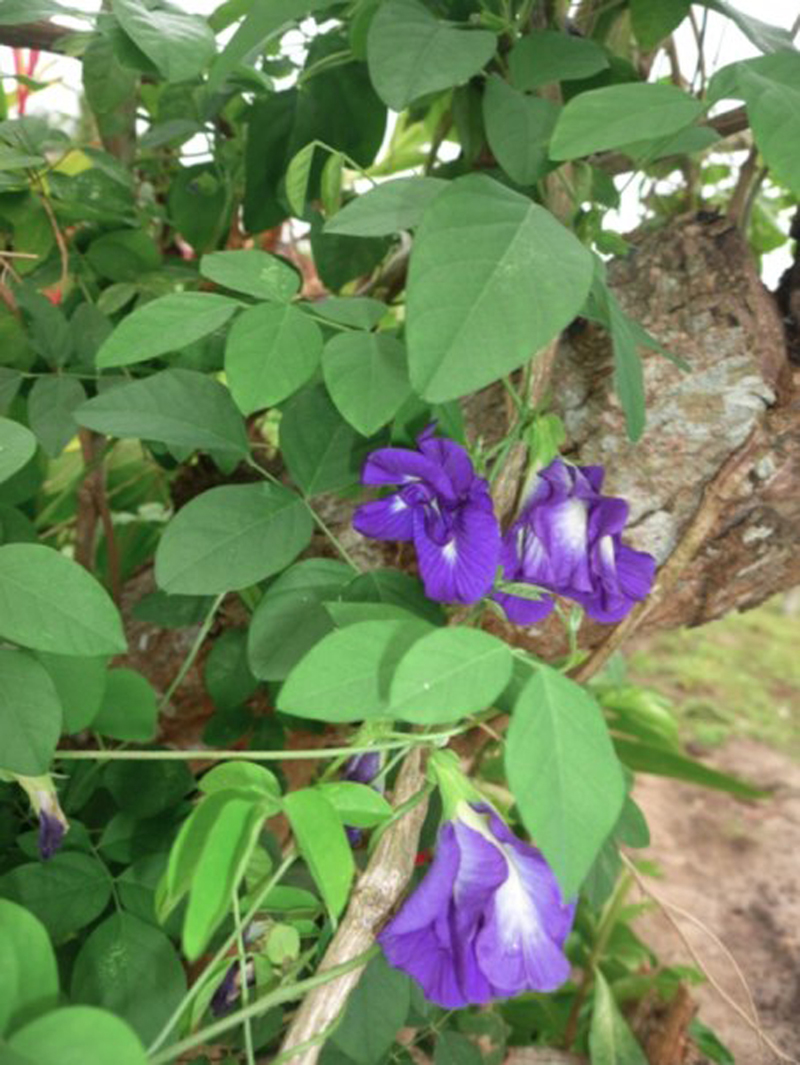
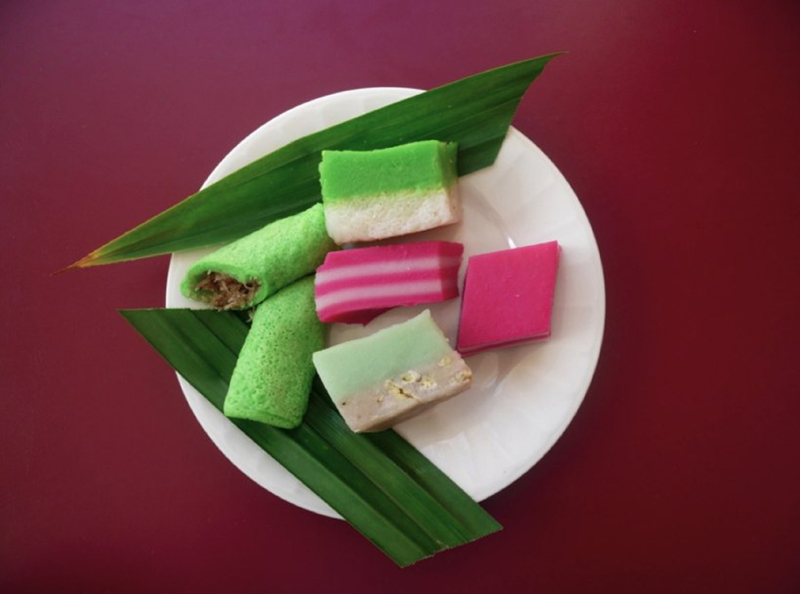
PLANTS IN HEALTHCARE AND NUTRACEUTICAL
World Health Organization (WHO) estimates about 80% people in developing countries depend mainly on traditional medicines (primarily plants) for their primary health care [73]. In Malaysia early publication listed 1,300 special medicinal plants [74].
Surveys carried out in the various forests in Malaysia show that many plants especially understory plants having biologically important chemicals. As an example a survey in Wang Kelian, [75] Kedah found that from 90 species of plants from 68 genera and 42 families screened for alkaloids, steroids/triterpines, saponins and biological activities, 4 species contained alkaloids (Heterostemma piperifolium and Smilax spp.). In addition 22 were positive for steroids or triterpines and 84 contained saponin (four with strong action– Piper umbiellatum, Aidia densiflora, Canthium glabrum and Pavetta graciliflora) and 12 toxic to brine shrimp.
From another survey in the forest reserve in Wang Mu [76], Kedah, 45 species from 38 genera and 20 families of plants were screened. The results showed that nine contained alkaloids, especially Heterostemma piperifolium (Asclepidiaceae) and Thottea tomentosa (Aristolochiaceae), 26 were positive for saponins/triterpenes), 35 contained saponin with Peliosanthes violacea (Liliaceae), Greenea corymbosa and Pavetta graciliflora (Rubiaceae) strongly positive and 42 toxic to brine shrimps.
In the southern state of Johor, in the Endau Rompin forest reserve, Ong 2007 [77] reported 41 species of medicinal plants from two native respondents of Selai.
From the state of Sabah from Lower Segama, Elora et al. 2006 [78] working with 20 local Orang Tidong respondents listed 51 species from 34 families as being used in medicines by the local Tidong community. For the Orang Sungai of Kinabatangan an earlier study on people living at the upper reaches of Kinabatangan River, Barnabas 1999, [79] produced a list of 202 species of plants used in healthcare. A more recent research by Julius et al. 2003 [80] showed a list of 178 species used by the Orang Sungai inhabiting the lower parts of Kinabatangan.
On the west coast of Sabah, Mariana Madun 2005 [81] surveyed medicinal plants used by the local Bisayah and Brunei Malays communities of the Membakut area (two villages: Kg Kuala Binsulok and Kg Likas Binsulok). Interviewing 150 respondents, still practising traditional medicine, 47 species from 33 families were found to be useful to the local people in healthcare.
To give a broad indication of the kinds of herbaceous plants used in Malaysia as herbal remedies, Maryati Mohamed & Mashitah Yusoff 1999 [82] listed 25 commonly used species. This is presented in Table 14. The data are extracted from several sources as listed under the table.
Table 15: List of 25 commonly used plants used in herbal remedies in Malaysia. [81][83][84][85][86]
| Common name Malay/English Scientific name/Family | Traditional use | Preparation | Scientific findings | |
| 1. | Tongkat Ali Eurycoma longifolia Jack Simaroubaceae | Aphrodisiac Headaches Wounds Syphilic sore | Entire plant boiled and water drank as tonic Finely ground plant material applied to affected area to treat headaches, wounds and sores | Quassinoides such as euricomanol, anti plasmodic |
| 2. | Kunyit/ turmeric Curcuma domestica Veleton Zingiberaceae | Upset stomach in children | Rhizomes boiled with onion and garlic, drink | Essential oils, anti-bacterial |
| 3. | Pegaga Centella asiatica Urban Umbelliferae | Dizziness Rheumatism Tonic preparation Typhoid | Boiled leaves and green beans consumed Leaves and onions boiled and drink Whole plant boiled with roots, drink Leaves finely pound and applied to forehead | Madasiatic and brahmic acid source, tabled form administered orally over 12 weeks to retarded children; show significant change – maybe due to selenium |
| 4. | Hempedu bumi Andrographis paniculata Nees Acanthanceae | Hypertension Tonic Tonsillitis Flu Chest pains Diabetes | Entire plant boiled and water drank | Furanofiterpene, high in vitamin A, shown to reduce blood sugar in mice, shown to increase white blood cells |
| 5. | Lidah buaya Aloe vera (L.) Birm. Liliaceae | Burns Wounds | Juice from leaves applied directly | Aloenin, aloesin, aloenol, aloe-emodin-anthranol, albumin, shown to relieve radioactive burns rapidly |
| 6. | Halia/ginger Zingiber officinale Rosc. Zingiberaceae | Stomach ache Flatulence | Water from boiled rhizome drank | Essential oils, sesquiterpenes one of which shown to lower cholesterol in the blood and liver |
| 7. | Setawar Costus speciosus Smith Zingiberaceae | Lower energy Rashes, sweaty skin | Rhizomes used in making tonic Stem pound and applied as paste to rashes and sweaty skin | Seeds and rhizomes have high level of saponin, high impact on muscle contraction |
| 8. | Gelenggang besar Cassia alata Linn. Leguminosae | Skin diseases Constipation | Leaves applied directly Leaves eaten | Emodin, aloe emodin, rhein, chrysophanol, isochrysopanol, physicon-1-glucoside, cassiaxanthone, weak tumor promoting action |
| 9. | Ubi kayu Manihot esculenta Crantz Euphorbiaceae | Headache, cold, fever Gastric, constipation | Older leaves pound and applied to head Shoots boiled and drank | Alkaloids and hydrocyanic acids
|
| 10. | Lengkuas Alpinia galanga Swartz Zingiberaceae | Lotion | Leaves boiled and used as lotion | Essential oils, exhibiting anti-cancer properties, several flavonoids |
| 11. | Kantan/torch ginger Etlingera elatior Zingiberacecae | Ear aches Wounds | Fruits decoction used to treat ear aches Leaves decoction used in cleaning wounds | Essential oils, found limited use as flavours and fragrances |
| 12. | Jerangau Acorus calamus Lin. Araceae | Rheumatism, fever, lumbago | Shoots boiled and used in compress, lotion or for bathing | Essential oils, muscles relaxant |
| 13. | Tahi babi Vernonia cinera (L.) Less Compositae | Cancer | Entire plant pound and taken as a drink | Amyrin-acetate, amyrin-bezoate, lupeol, siteosterol, stigmasterol, spinalsterol
|
| 14. | Patawali Tinospora crispa Miers Menispermaceae | Stomach aches, gonorrhea, deworming, blood purifier, disinfectant | Stem boiled and strained and drank (1 glass/day); as disinfectant – pound stem with sulfur and apply paste to infected areas | Osquinoline alkaloids, extracts shown to be anti-malarial |
| 15. | Misai kucing Orthosiphon grandiflorus Boldingh Labiatae | Bladder stones | Entire plant boiled and drank | Flavones, isoinensetin, lowers blood sugar |
| 16. | Mengkudu Morinda citrifolia Linn. Rubiaceae | Blood purifier, diabeters, fever, stomach aches, shampoo | Ripe fruits help purify blood and control diabetes;dry leaves used as poultice for chest and stomach to treat fever; and stomach ache; flesh from fruits used as shampoo | Anthraquinone, morindane, rubiadine, glucoses |
| 17. | Lada pahit Brucea javanica (L.) Merr. Simaroubaceae | Skin diseases Malaria, diarrhoea Abortifacent | Leaves pound and applied as paste Fruits eaten Any parts eaten | Quassinoids, anti-malarial and anti-tumor |
| 18. | Kacip Fatimah Labisia pumila (Blume) Fern. –Vill. Myrsinaceae | Pre- and post-natal | Leaves boiled and drank; expedites labor and healing of birth canal | Alkaloids, heightened estrogen level |
| 19. | Cekur Kaempferia galanga Linn. Zingiberaceae | Post natal tonic Swellings | Rhizome boiled and drank Leaves crushed and as poultice | Essential oils, borneol, camphor, cineol |
| 20. | Daun sembung Blumea balsamifera DC. Compositae | Cough, flatulence Induce perspiration Headaches, joint pains | Leaves boiled and drank Soak plant and water drank Leaves pound and applied as paste | Essential oils, sesquiterpenes, extracts reported to lower hypertension |
| 21. | Senduduk Melastoma malabathricum L. Melastomataceae | Diarrhea Leucorrhea Prevent scarring from small pox | Leaves and shoots eaten Leaves boiled and drank Leaves and roots pound and applied to affected areas | Aliphatic alcohols, saponin, triterpenoids, tannins |
| 22. | Kecubung Datura metel Linn. Solanaceae | Tooth aches, rheumatism, constipation, asthma | Smoke from seeds burning directed at aching tooth; leaves and flowers pound with shallots and ginger and applied to rheumatic parts; leaves dipped in coconut oil and then warmed over fire until wilted then applied to lower stomach; thinly sliced leaves when dried under the sun and smoked as cigarette relief asthma | Has among other: hyosycine and atropine which slow down locomotor activity induced by morphine |
| 23. | Serai wangi Cymbopogon citratus (DC) Stapf. Gramineae | Headache Rheumatism Mosquito repellent Shampoo, perfume Urinary, stomach problems | Leaves pound and applied to forehead Leaves pound and applied to joints Extracts applied to skin Extract from roots is fragrant Leaves and roots boiled and water consumed | Essential oils such as citral |
| 24. | Inai pacak Impatiens balsamifera Linn. Balsaminaceae | Hypertensions | Seeds, flowers, stems or roots uses as decoction | Naphthoquinone, sterols, glucoses |
| 25. | Pala/Nutmeg Myristica fragrans Linn. Myristicaceae | Hypertensions | Shoots eaten | 7 types of phenylpropanoids, isolated from seeds |
PLANTS AS CONSTRUCTION MATERIALS
During olden days Malaysian built houses using natural materials. For the lesser able people they use easier to process plant materials such as bamboos, coconut trunks and nibong trunks. For the more able people the hardwood of Malaysia dipterocarp has provided them with beautiful and long lasting homes. The walls and flooring were mainly from hardwood. Roofings were mainly from nypa, rumbia/sago or coconut leaves that have been thatched (Fig. 44). Then these are gradually changed to zinc that lasted longer.
Malaysian tropical hardwoord mainly from the family Dipterocarpaceae has been one of the major exports of Malaysia. With the use of chain saw and other machinery, the logging activity had rapidly gone up and many more acres of forest lands were open. Major importers of Malaysian hardwood are Japan and Europe. With the ITTO 2000 objective, and the implementation of the certification process, Malaysia had reduced logging activities and export less logs.
Timbers are not only for construction of buildings for houses, offices and other public amenities such as schools and hospitals but also for ships. Some timbers are so strong and are suitable for railway slippers.
Listed below in Table 16 are plants used as structural materials. This table is compilation from several sources.
Table 16: List of timber trees that provide material for construction of buildings, in Malaysia.
| Species name (Family) | Common name (Malay/English) |
| Oncosperma tigillaria (Palmae) | Nibong |
| Shorea curtisii (Dipterocarpaceae) | Seraya |
| Shorea pauciflora (Dipterocarpaceae) | Nemusu |
| Shorea leprosula (Dipterocarpaceae) | Meranti tembaga |
| Shorea macroptera (Dipterocarpaceae) | Meranti, melantai |
| Shorea gratissima (Dipterocarpaceae) | Meranti laut |
| Dipterocarpus spp. (Dipterocarpaceae) | Keruing |
| Vatica spp. (Dipterocarpaceae) | Resak |
| Anisoptera curtisii (Dipterocarpaceae) | Mersaw |
| Hopea spp. (Dipterocarpaceae) | Giam/Merawan |
| Koompassia malaccensis (Leguminosae) | Kempas |
| Intsia palembanica (Leguminosae) | Merbau |
| Dialium spp. (Leguminosae) | Keranji |
| Ochanostachys amentacea (Olacaceae) | Petaling |
| Hevea brasiliensis (Euphorbiaceae) | Getah |
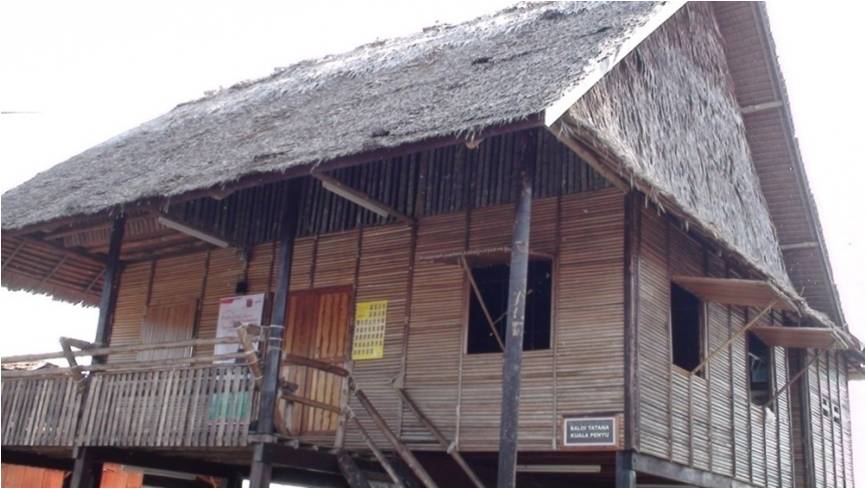
8. PLANTS AND MAJOR INDUSTRIES IN MALAYSIA
a. Oil Palm
Malaysia is known worldwide as a great exporter of palm oil. According to the Malaysian Palm Oil Council (MPOC), Malaysia accounts for 41% of the world palm oil production and 47% of world’s exports, making the country the biggest producer and exporter of palm oil and palm oil products.
Elaeis guineensis or more popularly known as oil palm originated from West Africa. It was first introduced in Malaysia in 1870 by the British as ornamental plants. Discovering the potential of oil palm fruits as source of oils and fats, it has been commercialised in 1917 in Tennamaran Estate in Selangor. Active cultivation of oil palm began in 1960s under the government’s agricultural diversion from rubber production and tin mining. To date, around 4 million hectares are cultivated for oil palm generating about 14 million tones of palm oil. The oil palm plantations in Malaysia are largely based on the estate management system and small holder scheme. The example of vastness in an oil palm plantation can be seen in Sabah, Malaysia (Fig. 45).
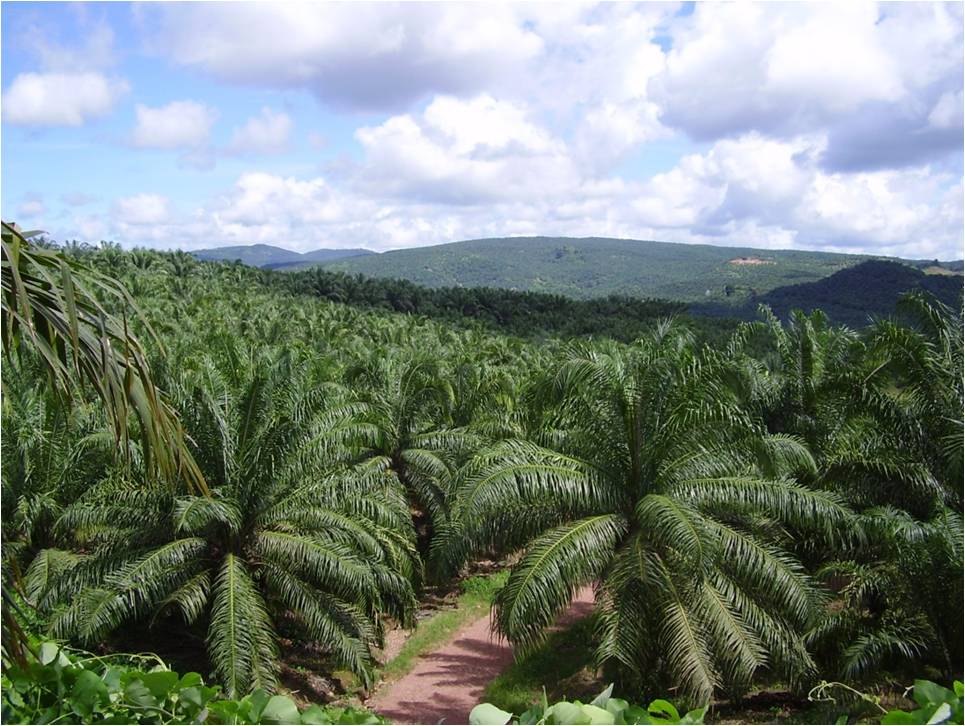
b. Pulp and Paper
Pulp and paper are some of the most popular products derived from trees and is now a stable industry in Malaysia. In the earlier times, the pulp and paper industry is blamed as one of the reasons of rampant forest destructions not only in Malaysia but in many other countries as well. In recent years, however, this challenge has been over come by designating plantations for pulp and paper manufacturing. For example, Sabah Forest Industries, the largest integrated pulp and paper mill in Malaysia holds a concession of nearly 300,000 hectares of forest land by the State Government of Sabah from January 1, 1996 to December 31, 2094, and produces annually 144,000 metric tonnnes and 120,000 metric tonnes of paper and pulp, respectively. The most common species for pulp and paper industries are Acacia mangium, Gmelina arborea (yemane), Falcataria moluccana (batai) and Eucalyptus species.
c. Timber Industry
Timber is still one of the major sources of revenue for Malaysia, with export earnings amounting to at least 18.5 billion Malaysia Ringgit from January to October 2008 alone [86]. More than half (52%) of timber and timber products are from Peninsular Malaysia while Sabah and Sarawak contributed 13% and 35%, respectively.
Family Dipterocarpaceae dominates the timber industry ranging from heavy hardwoods (i.e. Balau, Giam, Resak, Cengal) to medium hardwood (i.e. Keruing, Kapur, Merawan) to light hardwood such as Melantai, Meranti,and Gerutu. Other popular families that are also good sources of timber are Leguminosae (Kekatong, Merbau, Kungkur), Lauraceae (Medang), Meliaceae (Merpauh), and Anacardiaceae (Rengas, Macang), among others.
In addition to exporting timber, Malaysia also is exporting wooden furniture, generating a sizeable income of 5.6 billion Malaysian Ringgit from January–October 2008 [87]. Malaysian wooden furniture are sought after by at least 30 countries including the United States of America, Japan, Australia, Canada, the United Kingdom, United Arab Emeriate, Singapore and Germany.
d. Food and Beverage
The rich tropical and abundant agricultural resources combined with diverse cultures in Malaysia have resulted to a wide-range food and beverage industry in the country. Cocoa products (i.e. chocolates, drink and cooking powder), spices, tea, and coffee are among the most famous plant produce and are vital to the economic growth of Malaysia. Fruits like pineapple and guava are mass-produced and are available to consumers in the form of canned-juices. Tropical fruits such as pink guava, passion fruit, rambutan, and soursop are also canned and processed intro juices, concentrates, puree, and jam. Other tropical fruits like jackfruit, starfruit and papaya are canned in syrup or brine, pickled in vinegar or dehydrated. Cans and bottles containing plant products such as those seen in Fig. 46 are derived from Malaysian fruits.

Fig. 46 : There are so many different food and beverage products that come from plants
e. Perfumery
Perfumery is one popular industry that cuts across countries and culture now. Since earliest times the fragrances of certain plants have been valued as a source of perfumes; these unique scents are from the essential oils produced by plants. History says, Egyptians are the first skilled perfumers, producing fragrant oils that were used by both men and women to anoint their hands and bodies. Fragrances were also used as incense to fumigate homes and temples in the belief that these aromas could ward off evil and illnesses. In fact, the literal meaning of perfume comes from the Latin per meaning “through” and fumus meaning “smoke”, probably referring to the early use perfumes as incense.
Today, most perfumes are a mixture of hundreds of scents that are carefully blended, using formulae that are highly guarded secrets. Many of these scents are now synthetic (artificially produced) that resemble the natural essences from plants, but many costly perfumes (signature scents) still rely on the natural essential oils extracted directly from plants. Table 17 lists some plants important in perfumery industry.
Table 17: Commonly used plant materials for essential oil extraction in the perfumery industry
| Plant organ | Source |
| Flowers | Roses, carnations, orange blossoms, ylang-ylang, violets, lavender |
| Leaves and stems | Mints, rosemary, geranium, citronella, lemon grass |
| Seeds and fruits | Oranges, lemons, nutmeg |
| Roots | Sassafras |
| Rhizomes | Ginger |
| Bark | Cinnamon, cassia |
| Wood | Cedar, sandalwood, pine |
| Gum | Balsam, myrrh |
In the perfumery industry, aromatics are generally supplied by flowers such as melur (jasmine), roses, kenanga, cempaka. Besides that, essential oils from ginger and the serai wangi are also important. The most famous is of course the sandal wood resin from a plant called Aquilaria malaccensis, a Thymelaceae. Fig. 47, shows two flowers that are commonly used in Malaysia as aromatics.
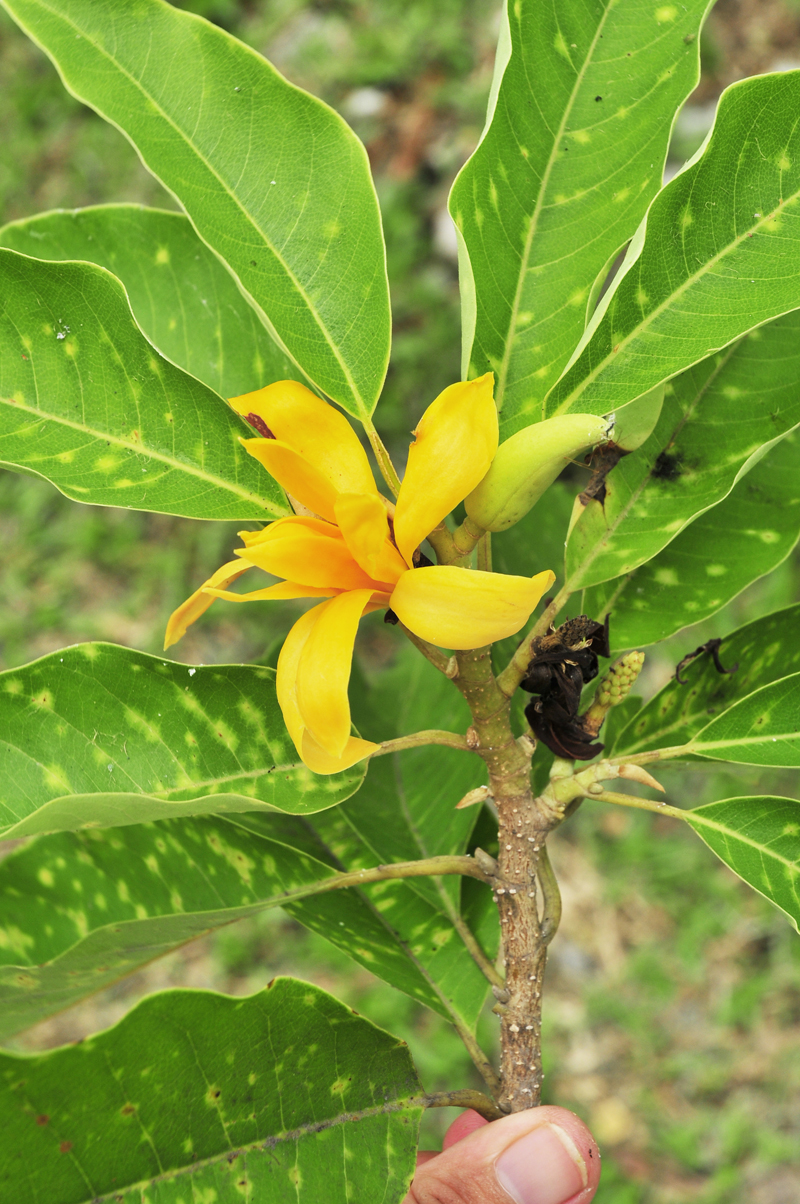
f. Horticulture
Plants have aesthetic values to people. The green colour of their leaves psychologically leaves a calming effect on people and good for the eyesight. The colour of flowers in bright yellow, red, blue, purple all hues and combination within these primary colours are pleasing and bring joy. The various shapes of flowers create curiosity to observers. And the generally pleasant smell adds on aesthetic value of plant to people. Economically, this value had created a huge horticulture industry. Selected plants were grown in mass and sold to households, offices and hotels. Plants are used as interior decorations as well as in landscaping (Fig. 48). Even in big cities, green lungs are maintained. In fact the cut flower industry has flourish that at times (especially during festivals, marriages, convocations, meetings, valentine/mothers day etc) the demand exceeds supply. In cut flower industry, some species like the roses, chrysanthemum, lilies, carnations, orchids are very popular. As for landscaping plants, palm is one of the favourite.
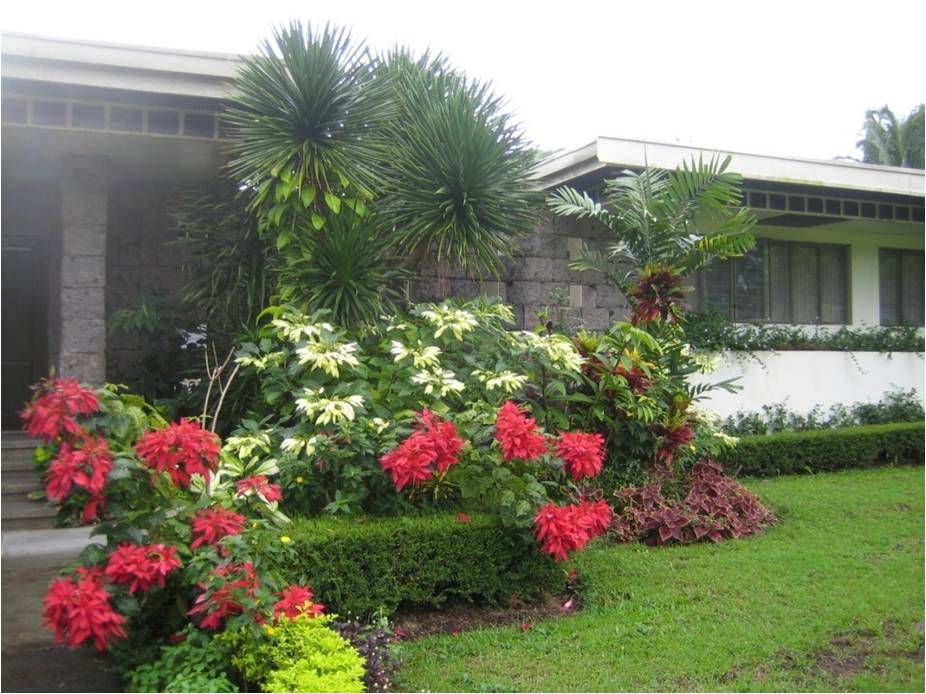
g. Tourism industry
Plants in the tourism industry may be something of the future. However, the Rafflesia has already becomes a tourism icon and a successful product. Some studies have looked into promoting Nepenthes as another tourism attraction [88]. As the herbal industry is increasing in popularity, herbs could also be useful to attract tourists. Different herbs are being used in different parts of the world. It would be very educational if the herbal industry could include giving experience to people on the diversity of herbs and their uses in the Malaysian cultures. As tourism industry grows, it would be inevitable that the rich plant biodiversity of Malaysia will be a prime mover of this industry.
9. PLANT’S CONTRIBUTION TO CARBON BALANCE AND IT’S ROLE IN GLOBAL CLIMATE CHANGE
Through the process of photosynthesis, plants are removing carbon dioxide (CO2), one of the major greenhouses gases from the atmosphere. With this inherent capability, plants play a major role in balancing the world’s climate.
About 18,000 years ago or the last ice age, the global atmospheric concentration of CO2 was bout 190 ppm (parts per million). Since then, it has risen reaching about 250 ppm in 1700s and 375 ppm today; and it continues to rise. The increasing concentration of CO2 has been primarily due to the burning of fossil fuels and the destruction of forests. As parts of the world’s carbon deposits are extracted from the ground and burned, together with large-scale destruction of forests, vast amounts of CO2 are released to the atmosphere.
Rising global CO2 levels have a number of consequences, the chief of which is a net rise in global temperature. The presence of high concentration of CO2 in the atmosphere, mixed with other greenhouse gases such as nitrous oxides (N2O), methane (CH4) are causing more radiation from the sun to be trapped on the Earth’s surface, hence enhanced greenhouse effect or global warming. In IPCC’s report (2001), a rise of 0.5°C in global mean surface temperature have occurred over the last century. Altered average temperatures have been accompanied by extreme weather changes. These include earlier and later frosts in temperate regions, while heavier rainfall in some areas and droughts in other parts of the globe. With drought, comes the possibility of fires, and these have been widespread particularly in the Asia and the Pacific regions. Rising sea level accompanied by melting ice-shelves in the Arctic and Antarctic are also consequences of global warming. World sea levels have risen by more than 10 cm in the last century and their continued rise will result in losses of low-lying (coastal) lands and island communities.
At present, photosynthesis of plants is limited by CO2 levels and growth rates in some plants are responding positively to increasing concentration of CO2 in the atmosphere to as much as 30-60%. However, this may only be temporary as growth and development of plants are also regulated by other factors (i.e. nutrients, rainfall, etc.). Moreover, different plants respond differently to various environmental variables and have varying optimum growth. In other words, plants’ absorption of atmospheric CO2 has maximum saturation point; hence continued release of CO2 will result to higher build-up of these greenhouse gases in the atmosphere.
| Current Issues “Expanding human populations and increasing intensity of human activity now threaten the earth’s plant populations, which are critical to the ecological integrity of the biosphere. The global-scale threats include global warming, numerous forms of pollution, and widespread land clearing. Reducing or reversing these environmental challenges will require applying measures such as recycling of wastes, returning organic matter to soils, and using plants to reclaim damaged land. As we attempt to build a sustainable future, we should bear in mind that while plants can live without humans, we cannot live for long without plants.” Kingsley R. Stern, 2000 [89]. |
10. PLANTS IN CULTURE
The Malays in Malaysia are predominantly Muslims. While abiding to the Muslim way of life, some Hindu influence is seen in the Malay culture. One example is the use of turmeric. It is commonly used in cooking and is influenced by the curry dishes of Indian origin, at the same time turmeric is used widely by earlier generations prescribed to ladies after giving birth. Turmeric, gingers, temu lawak and other gingers, including galangal are widely used in making jamu for consumption after giving birth. There are different kinds of jamu and some are even consume by males and females for vitality and good health. The consumption of jamu is on the increase. Malay woman and presumably Indian ladies too are encouraged to eat young turmeric as a salad. Immediately after birth old turmeric tuber will be crushed with stone mortar and pestle and the pulp that stick to the stone mortar will be scrapped. This will be mixed with water and a small piece of rock salt and drunk. The belief is that it will help to shrink the uterus fast.
Malays also use sireh (betel leaf) in engagement and wedding ceremony. It has an ice breaking function and will be the first gift offered by the visiting party (normally the male side). One of the ingredients in the sireh ceremony is the pinang or areca-nut (Areca catechu). This nut is being sliced in thinly and put into the sireh leaves. Some chalk (calcium carbonate) and gambir are also added. The leave is then neatly wrapped into small package. This package of betel (sireh) leaf is offered to the elderly member of the visiting party who will chew it and produce a reddish pulp in their mouth. Areca catechu is known to contain arecolin, arecaidin, arecaine, cholin, gallic acid tannic acid [64].
Rice will be stained with turmeric juice and be offered as confetti during wedding ceremony. Another use of rice is in skin care. Some rice is soaked in water overnight and rinse every morning. During rinsing, the sedimenting rice powder is kept back. This will have to be repeated for several days until all the rice and become powdery sediment. Jasmine flowers will then be added and the sediment dried in the sun after it has been formed into ball shape using the sireh leaves. Dried balls of this bedak sejuk (cold powder) can be kept together with some jasmine flowers in a close tight box/bottle and be used usually during night time. To use two or three balls will be put on a small dish and some water added and mixed to make into a paste that are patted on to the face and body. This powder is said to make one skin soft and silky.
During the festive season, coconut leaves are being weaved into box like cases and filled with uncooked rice. It is called ketupat. Then they are boiled in hot water for two to three hours, until the rice become quite packed. This rice cakes are eaten with various kinds of dishes including the famous rendang daging (dry meat curry) or rendang ayam (dry chicken curry), and ground nut sauce (Fig. 49). In the northern states of Peninsular Malaysia such as Kedah and Kelantan, where lots of rice is grown, sometimes glutinous rice is used instead of ordinary rice.
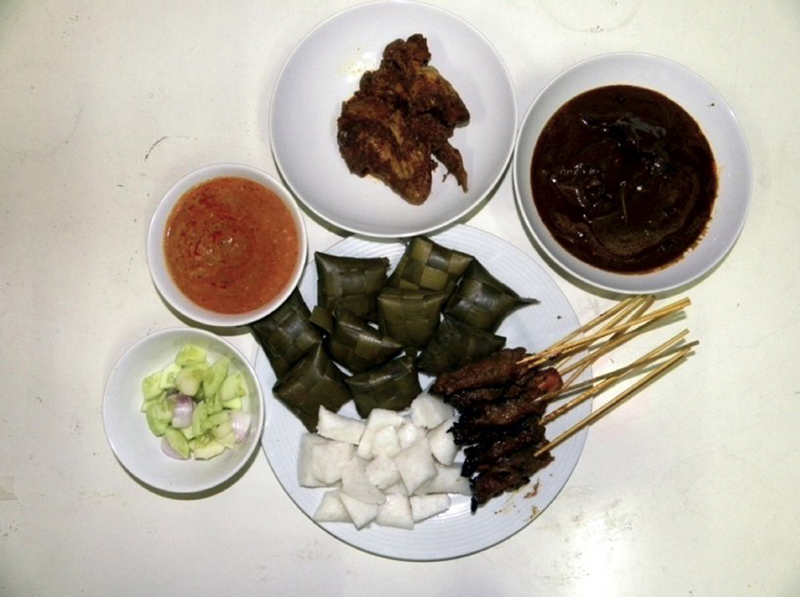
Another major component of the Malaysian community is the Chinese. For the Chinese the obvious plant much favoured is the mandarin oranges. During happy festival like the Chinese New Year, families and visitor are given Chinese mandarin as a sign for wishing prosperity and melon seeds of different varieties were also served (Fig. 50). There is the belief that the golden colour of the mandarin oranges or tangerines (Fig. 51) signifies prosperity. Chinese family members will make offerings of pomelo, oranges and some other fruits to their dead ancestor. In homes, decoration normally seen during Chinese New Year would be a fruiting tree of small kalamansi plant. The yellowing small kalamansi fruits again signify prosperity. Another festival that involves plant is the event when the kitchen god is visiting Chinese homes. To ensure that the kitchen god will not give negative report, the sticky mooncake is offered. This cake is made from glutinous rice and sugar. It is believed that when the kitchen god eats this cake, their teeth will get stuck and they will not be able to report all bad deed of the households.
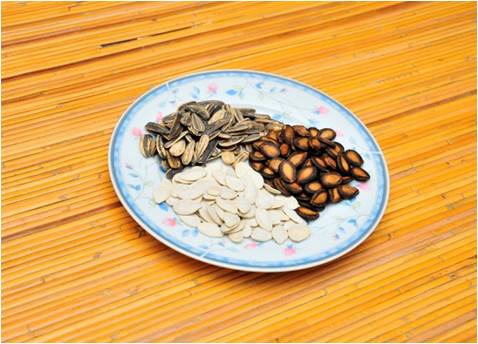
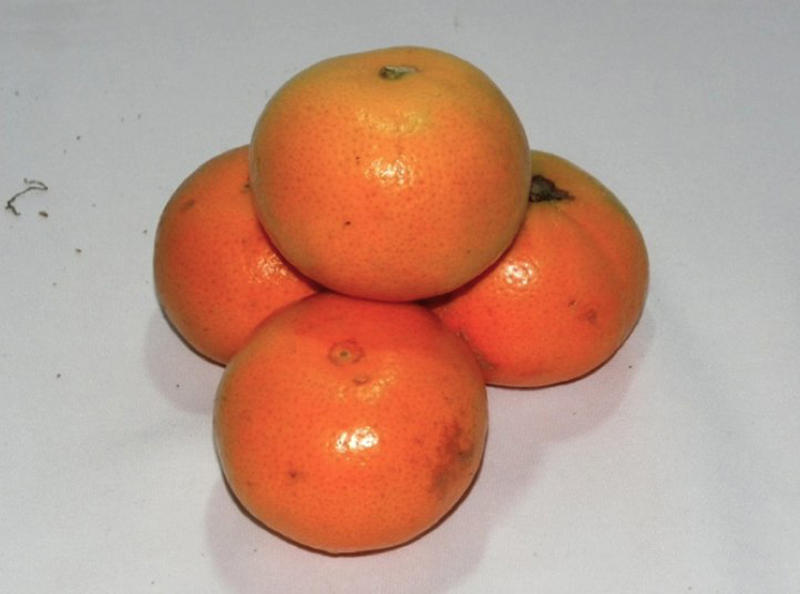
In the Hindu culture practiced by the Indian in Malaysia, coconut (Cocos nucifera) plays important roles. During the Thaipusam festival (festival of the light), coconut will be smashed at the door of Hindu temple. Coconut leaves are also important as they will be weaved into beautiful hangings used to decorate homes and temples during festivals and during marriages. Coconut has many uses, the young coconut provide refreshing juice for drinking, the old ones are used in festivals and cooking (Fig. 52). Tumeric (Cucurma domestica) as mentioned above also is very important to the Indians. Another plant commonly found around Hindu temples is neem tree (Azadirachta indica).
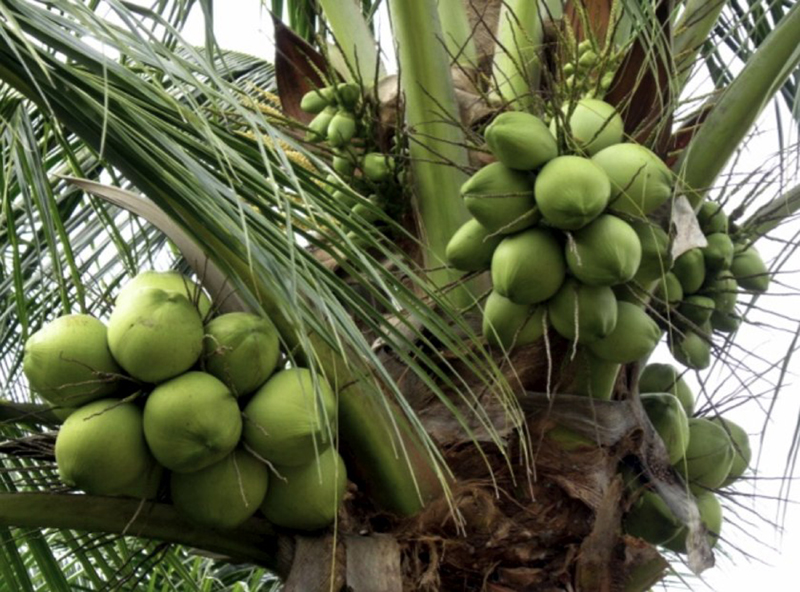
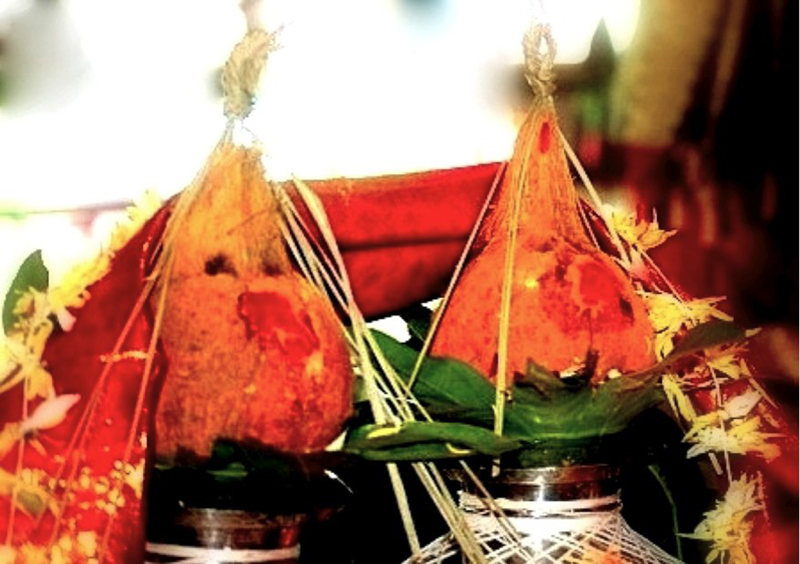
Fig. 52: Young coconut for its juice, old coconut for cooking and festival; some of the uses for coconut by the Indians in Malaysia.
In Sabah, the Orang Tidong who occupies the eastern coast of Sabah uses coconut leaves to weave into structures that are associated with culture [90]. As an example, young coconut leaves are pleated into a box shaped structure call bombayuku undu-undu. This is put under the swollen breast of a woman who had just given birth. Then she will spit on the bombayuku undu-undu which is then hung in the kitchen.
Kadazandusun forms the biggest ethnic group in Sabah. To them padi is the most important plant (Fig. 53). There is a myth as described from a publication by the Sabah Museum (1993) [91] about the origin of rice. The narration is found below. Besides rice, they have the ginger tuhau, which they pickled and consumed with rice. As for the Murut, another ethnic of Sabah, their traditional dress is also made from bark of tree.
The common creation of story of the Dusun/Kadazan people tells that rice originated from the blood of the daughter of the principal deities (Kinohoringan and Umunsumundu in Lotud genesis), Muntaba, who was sacrificed to provide food for the people. For this reason, to the Dusun/Kadazan people, rice is not simply a grain of cereal but it is believed to have a soul and that the rice is protected by the rice spirits. They are not allowed to abuse rice in any way outside the normal procedure of processing it. If the rice soul and spirit should become offended or angry because of inappropriate or unintentional human behaviour they may desert the rice. And this may cause the rice plants to whither and die. Therefore, rice is always treated with outmost respect.
The Lotud legend continues that the daughter of Kinohoringan ands Umunsumundu, who was scarified for food for the people, came back to life again in a jar of rice wine made by Umunsumundu. This legend is still recited in sacred chants by priestesses/female ritual specialists during the ritual; ceremonies involving rice.
The Lotud people also believe that Kinohoringan and Umunsumundu provided protective spirit to look after their rice fields. To solicit the spirit’s protection, a ritual ceremony called Matang is held
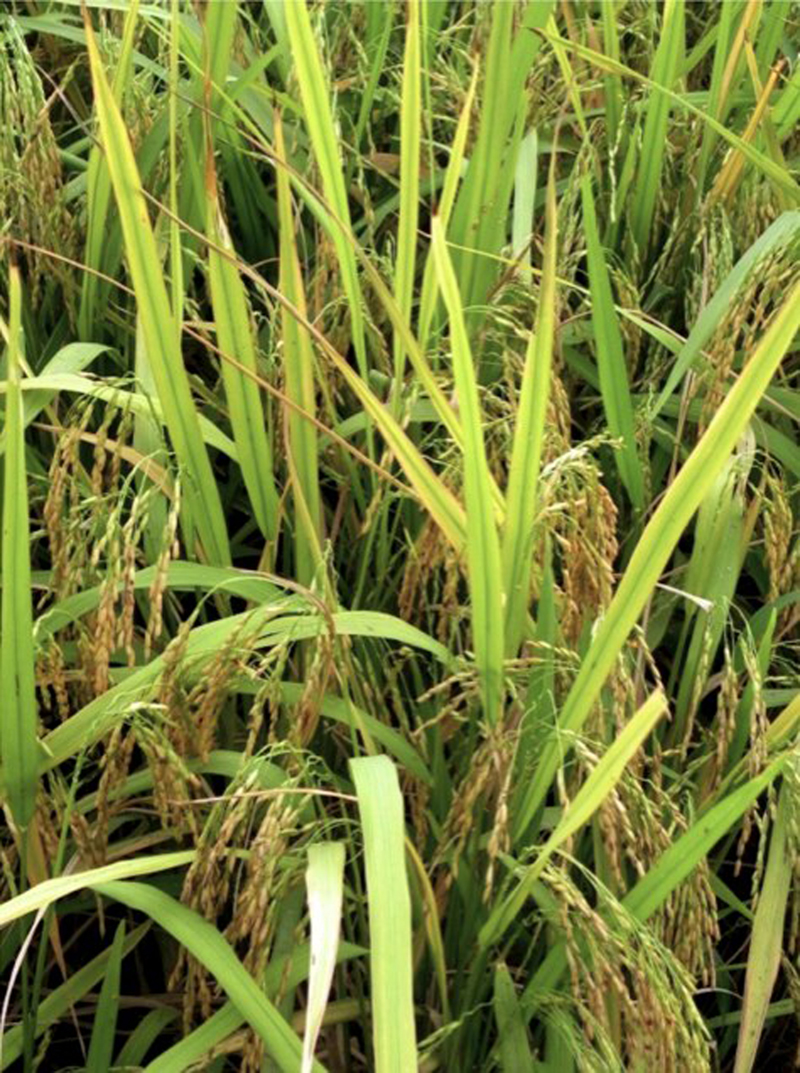
11. FLOWERS AND THEIR MEANINGS
Through traditions, some flowers became symbolic of our particular emotions and feelings. This sometimes is even reflected in the common name of the flower like the ‘forget-me-not’, which conveys the sentiment ‘remember me’. This symbolism can be traced back centuries ago and reached its peak during the Victorian era (early 19th century), when almost every flower had a special meaning. Today, this tradition is still being practiced and Table 18 below describes the symbol of the world’s most popular flowers.
Table 18: List of flowers and their meanings.
| Flower | Symbols | Flower | Symbols |
| Amaryllis | Pride | Blue violet | Faithfulness |
| Apple blossom | Preference | Zinnia | Thought of absent friends |
| Bluebell | Constancy | Red roses | Passionate love |
| Buttercup | Ingratitude | Four-leaf clover | Luck |
| Yellow chrysanthemum | Slighted love | Orange blossoms | Wedding |
| Daffodil | Regard | Olive branch | Peace |
| Daisy | Innocence | Yellow tulip | Hopeless love |
| Elm | Dignity | Red | Passion |
| Holly | Foresight | Blue | Security |
| Ivy | Fidelity | Yellow | Cheer |
| Lavender | Distrust | White | Sympathy |
| Lichen | Dejection | Orange | Friendship |
| Lilly | Return of happiness | Tall sunflower | Haughtiness |
| Magnolia | Love of nature | Dwarf sunflower | Adoration |
| Marigold | Grief | Palm | Victory |
Floral Emblem
It has been a tradition that almost all countries in the world have their own national flowers; some have cultural or religious roots that go back centuries ago. Malaysia’s national flower is the Chinese Hibiscus or Bunga Raya (Hibiscus rosa-sinensis). Like Malaysia, most countries have only one national flower but there are also countries that have more than one. For example, Indonesia have three national flowers, Jasminum sambac (Melati or jasmine), Phalaenopsis amabilis (moth orchid), and Rafflesia arnoldii. Some other countries share the same national flowers like rose for countries such as the United States, Iran, Iraq, Maldives, Slovakia, Luxembourg, and United Kingdom, among others.
12. PLANT BREEDING, GENETIC ENGINEERING AND WILD RELATIVES
Plant breeding is a technology combining the art and science of changing the genetics of the plant for the benefit of humankind. Food security is the chief driving factor for the development of plant breeding. For example, rice being a staple food for billions of people, has undergone various manipulation to ensure high yield at any given environmental conditions. Varieties of planting materials have been “engineered” to suit areas with different areas like that of with very little rain, flood plains, high lands, among others. Moreover, plant breeding also involve manipulations so as the plant becomes more resistant to pests, bacteria, fungi, and viruses.
Plant breeding has been practiced for thousands of years when human civilization started to flourish. To date, it is being practiced worldwide by individuals such as farmers or by professional breeders from government institutions, universities and other research centres. Transforming plants with new or altered variety may yield plants that are useful (i.e. larger fruits and vegetables, seedless, etc.), attractive (as in ornamental plants), highly resistant to pest and diseases and tolerant to certain weather conditions (i.e. flood-prone areas). In addition to rice, fruits, vegetables, oil palm and ornamental plants are also popularly bred in Malaysia.
One type of plant breeding technique is plant biotechnology or genetic engineering and it overcomes challenges concerning conventional breeding. Conventional breeding is simply passing on of traits of both parents to an offspring, and normally takes a long time. Another setback of conventional plant breeding is that this technique does not permit the mixing of incompatible genes, and cross-breeding of unrelated genes yields infertile offspring (cannot reproduce). But modern technology makes it possible to break through the species barrier and shuffle information between completely unrelated species in a controlled manner. The then conventional breeding is now called “precision breeding”. Examples of genetically modified food from plants are presented in Table 19.
Table 19: Examples of genetically modified food available in the market today.
| Crops | Modified traits |
| Canola | Oil modification, male sterility |
| Corn | Resistant to glyphosate or glufosinate herbicides Insect resistance– using Bt proteins some previously used as pesticides in organic crop production Vitamin-enriched |
| Cotton | Pest-resistant, insect resistance |
| Maize | Herbicide resistance, fertility restoration, insect resistance |
| Melo | Delayed ripening |
| Papaya | Resistant to ring-spot virus |
| Potato | Viral resistance, insect resistance |
| Rice | Herbicide resistance |
| Soybeans | Resistant to glyphosate or glufosinate herbicides, gene taken from bacteria and inserted into soybean |
| Squash | Viral resistance |
| Tobacco | Herbicide resistance |
| Tomato | Delayed ripening, insect resistance |
Current issues
Plant biotechnology is also commonly referred to as agricultural biotechnology and/or genetically modified organisms (GMOs). Because of modifications on the plant’s natural traits, many are skeptical about consuming GMOs citing safety and ethics as major concerns. Examples of safety issues concerning consumption of GMOs are: (i) potential health impacts, including allergens, transfer of antibiotic resistance markers, unknown effects; (ii) potential environmental impacts like unintended transfer of transgenes through cross pollination which has (unknown) impact on other organisms; and (iii) lost of biodiversity. In terms of ethics, major concerns are: (i) violation of natural organism’s intrinsic values; (ii) tampering with nature by mixing genes among species; and (iii) objections to consuming animal genes in plants and vice versa.
To address these concerns, in 1994, the World Trade Organizations (WTO) Agreement on the Application of Sanitary and Phytosanitary Measures (SPS Agreement) was formulated stipulating that countries retain their right to ensure that the foods, animals and plant products they import are safe. Moreover, the agreements states that countries should not use unnecessarily stringent measures as disguised barriers to trade. The agreement also states that countries should use internationally agreed standards such as the Codex Alimentarius Commission for Food Safety, The World Organisation for Animal Health (OIE), and the International Plant Protection Convention (IPPC).
The Convention on Biological Diversity whose primary concerns are conservation and sustainable use of ecosystems has also addressed the environmental effects of GMOs. In 2000, the Cartagena Protocol on Biosafety was adopted. This protocol set out an Advance Inform Agreement (AIA) procedure for the intentional introduction of species that may have adverse environmental effects. In the case of genetically modified plants, it particularly regulates trans-boundary movement. Such movement requires an advance notification by the reporting party and notice receipt by the importing party. The Protocol also details specific requirements for handling, labeling, packaging and transportation of genetically modified plants.
Due to increasing demand for food derived from plants, modern crops of today are results of intensive plant breeding and many have characteristics different from their wild ancestors. The process of plant breeding has resulted in increased yield and removal of undesirable characteristics, but with this is the risk of increased disease susceptibility of clonal populations and loss of biodiversity [92]. Nevertheless, plant breeding has been very successful in generating high-yielding crops that meets the demand of the increasing world populations. Some characteristics achieved through plant breeding are high yielding and resistance to diseases and pests. However, some other characters also include the changing of size, colour and shape. Below are illustrations of the changes mentioned. In Fig. 54 the size of corn varies one being big the other small. Another variation due to genetic engineering is shown by melon that has two colours– red and yellow (Fig. 55).
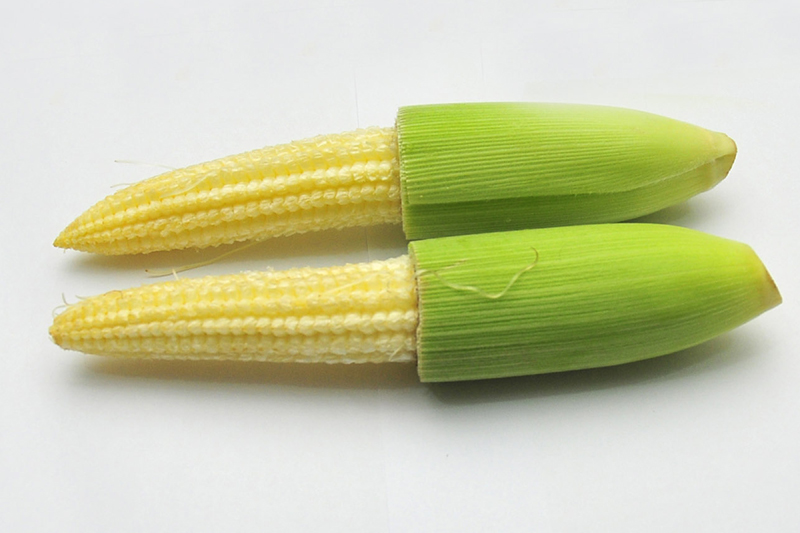
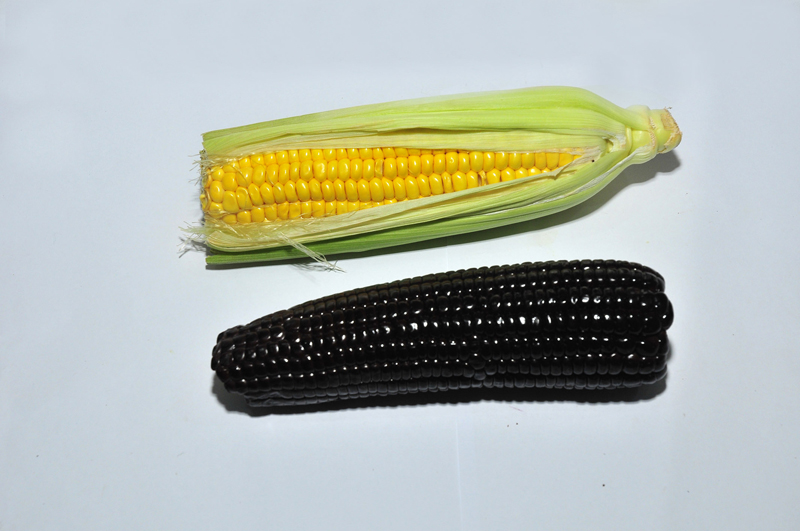
Fig. 54 : The characteristic acquired by the corn Zea mays on the left (a) is the small size corn(8-10cm). The same species on the right (b) has big size corn (18-20cm). On the right however, the big corn could be found in two colours – yellow and black. These are all products of genetic engineering.
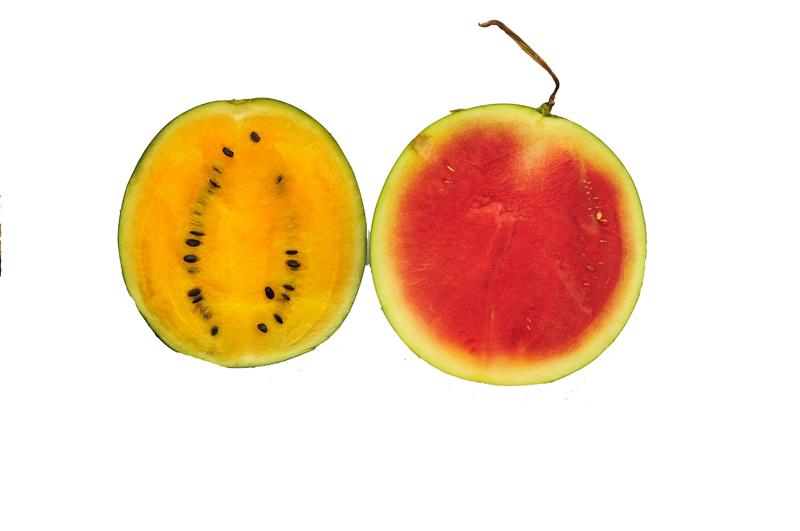
As for wild relatives, they are important for plant breeding. In most genetic engineering procedures wild relatives are needed to provide for the genes that could be manipulated with the domesticated species to produce varieties that meet the needs of people.
Invasive species
Mikania micrantha
Mikania micrantha is not a native of Malaysia. However, it has migrated from the north and has been causing problems in oil palm plantation [93]. Some effort to control this pest has been initiated in the 1980s. This plant is herbaceous and can be easily found along roadside. It grows very fast and climbs any supporting plants and materials (Fig. 56). It can be found twining around lamp post and electric poles. It grows rapidly to cover crops, normally a legume, smothering them and thus retarding their growth. It climbs growing trees and suffocates them off the sunlight.
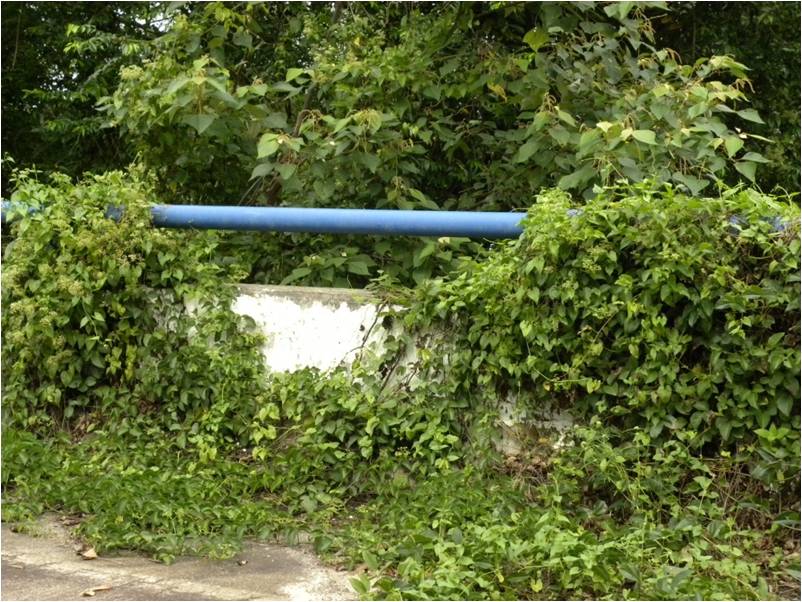
Mimosa pudica
It is always a joy to touch this prickly creeper and sees the leaves folding together gracefully. In Malay this plant is called semalu (malu means shy in Malay). But this plant is not shy. It has been a pest because of its ability to grow very fast. It is a nuisance when you walk bare footed on what you thought is a soft patch of grass and finding you are treading on the prickly creeping stems of Mimosa.
Mimosa is also not an origin of Malaysia. Native to tropical America [93] this prickly herbaceous with beautiful dandelion–like pinkish flower it grows profusely within grassy areas. The pink flower head look pretty on slender flower stalk. Despite its humble status as a pest this species contains a peculiar chemical compound called mimosine besides the more familiar tannin. Wee 1992 [64] describes the uses of this plant. A child is bathed in a decoction of the plant or small branch placed under his pillow whenever there is difficulty in sleeping. This is practiced in Malaysia and Indonesia, perhaps originating from observation of the “sleeping” movement of plant. Besides that pounded leaves are applied to swellings. Leaves are soaked in coconut oil and placed on wounds and ulcers in Philippine. Fig. 57 shows a Mimosa being touch (a), causing the leaves to close up (b).
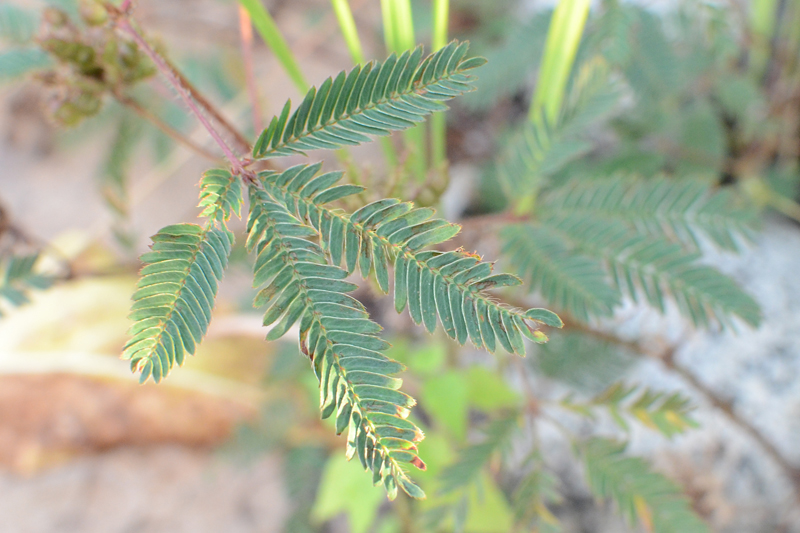
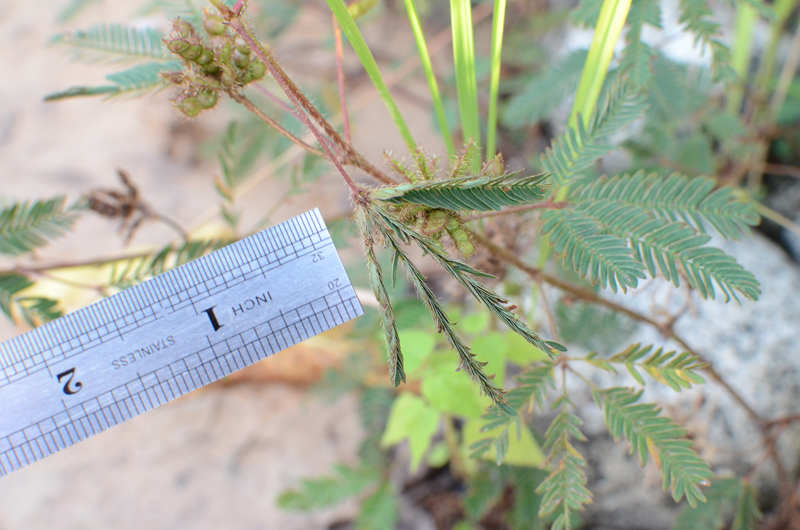
Fig. 57 : Please note how a Mimosa pudica responds to touch.
Acacia mangium
Acacia mangium (Fig. 58) is a fast growing tree species that was imported to Sabah for its softwood to accommodate for the paper and pulp industry. It was also planted along hill slope to mitigate erosion. Recently people are becoming aware that this fast growing species is becoming a pest as it displaces other plants. It is noted also that the dried leaves would not decomposed fast and form a dried layer of litter prone to catching fire. This species is also known for its behavior to suck water drying up soil and making other plants not able to live.
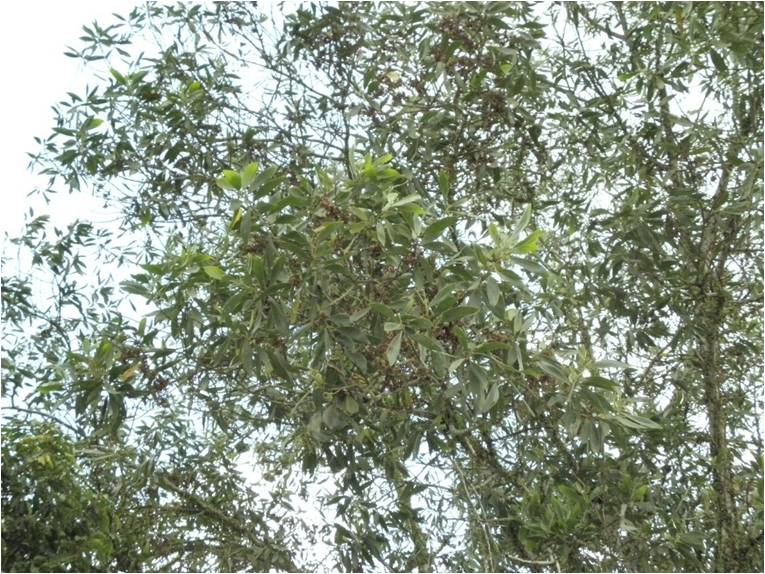
13. PLANTS AND CONSERVATION IN MALAYSIA
Policy statement of Malaysia’s National Policy on Biological Diversity reads: “To conserve Malaysia’s biological diversity and to ensure that its components are utilized in sustainable manner for the continued progress and socio-economic development of the nation”
Malaysia’s location in the humid tropics provides a favorite climate to support rich and diverse life forms. Within the terrestrial ecosystems, forests are the major repository of biological diversity. Over 90% of terrestrial biological species in Malaysia occur in its natural forests. To protect and conserve the diversity of this biological richness, a number of measures have been formulated, which include in-situ conservation, ex-situ conservation.
In-situ conservation aims to maintain plants (including animals) in its original habitat, taking into consideration as many representative natural ecological habitats as possible to sustain breeding populations of flora (and fauna). The network of protected areas on land, as stipulated in the National Policy on Biodiversity (1998) [93] include State Parks, Wildlife Sanctuaries, natural forest within Permanent Forest Estates, and Virgin Jungle Reserves.
Another conservation strategy is the ex-situ conservation, which maintains species outside their natural habitats in facilities such as arboreta, botanical gardens, seed genebanks, in-vitro genebanks, and field genebanks. Ex-situ makes it easier for scientists to access, study, distribute and use plant genetic resources. Examples of ex-situ conservation in Malaysia are in Table 20.
Table 20: Examples of plants in ex-situ conservation in Malaysia.
| Facilities | Plant species being conserved |
| Arboreta | Medicinal plants, fruit trees, timber species, ornamentals |
| Seed gene banks | Rice, vegetables |
| Field gene banks | Rubber, oil palm, cocoa, fruit trees, coconut, orchid, sweet potato |
| In-vitro gene banks | Cassava, timber species |
Besides in-situ and ex-situ conservation, plants can also be given legal protection. As an example is ramin (Gonystylus bancanus). This species can only be found in peatswamp forests. As peatswamp is rapidly degrading and slowly decreasing in size, this species is given a legal protection by being included in the CITES Appendix III trade control (Indonesia, Malaysia and Singapore) since August 2001 [95].
Another important aspect in conservation is research. One such example is the effort carried out for rattan. Research on rattan genetic resources conservation was intensive covering aspects such as diversity (including genetic variation) and identifying commercially important species [96].
Table 21: Malaysia’s international cooperation and linkages.
| Treaties/Convention | Purpose | Year Malaysia Ratified |
| Langkawi Declaration on the Environment and Development | Government of Commonwealth countries to further strengthened negotiations leading to the United Nations Conference on Environment and Development (UNCED) in June 1992 in Rio de Janeiro, Brazil | 1989 |
| Convention on Biological Diversity (CBD) | CBD entered into force on 29 December 1993 with three main objectives: to conserve biological diversity, the use of biological diversity in a sustainable fashion, and to share the benefits of biological diversity fairly and equitably | 1994 |
| International Union for Conservation of Nature | Founded in 1948, IUCN is the oldest and largest global environmental network which main purpose is to influence, encourage and assist societies throughout the world to conserve the integrity and diversity of nature and to ensure that any use of natural resources is equitable and ecologically sustainable | |
| Convention on International Trade in Endangered Species of Wild Fauna and Flora (CITES) | Agrees to the obligations with regards to control of trade of flora and fauna between countries | 1978 |
| Convention on Wetlands of International Importance Especially as Waterfowl Habitat (Ramsar Convention) | Provides framework for national action and international cooperation for the conservation and wise use of wetlands and their resources. | 1994 |
| International Board of Plant Genetic Resources Regional Committee for Southeast Asia (now IPGRI) | Through IPGRI/RECSEA, Malaysia has participated in a highly successful cooperative programme in plant genetic resources with Indonesia, Papua New Guinea, the Philippines, and Thailand. | |
| FAO Commission on Genetic Resources for Food and Agriculture | A permanent forum for the negotiation on international instruments and codes of conduct, and co-ordinating policy related to the conservation and sustainable use of genetic resources of relevance food and agriculture | 1993 |
In Malaysia, much effort have been made in documenting as much as plant diversity as possible, and of of these is its active involvement in the Flora Malesiana project. Flora Malesiana, spearheaded by the Nationaal Herbarium Nederland, aims to document all the flowering plants and ferns from the Malesian region (i.e. Indonesia, Malaysia, the Philippines, Papua New Guinea, Singapore, and Brunei Darussalam). In fact, beginning in 1989, scientists (botanists) and postgraduate students convene every three years in so-called Flora Malesiana symposiums to discuss diversity, biogeography, evolution and conservation of plants from the Malesian region.
Plants of the future
Non-Timber Forest Products
Non-timber forest products (NTFPs) are biological materials other than timber, which are extracted from the forests for human use. NTFPs form the backbone of subsistence and local commercial economy in many places around the world. They provide a vital contribution in augmenting the income of local people (i.e. indigenous communities) who are mostly forest-dependent.
In addition to the medicinal plants that are discussed separately in this article, other popular NTFPs are tannins, rattans, bamboos, and damar (resins). Tannins are dark coloured-extract obtained by boiling chips of the bark or wood and are used for dyeing purposes, leather tanning, and preserving fishing nets. Examples of plants with good tannin properties are Acacia catechu, Phyllanthus embelica (laka, malaka), and Terminalia catappa (ketapang).
Rattan is another popular NTFP. It is a climbing palm commonly found in the tropical forest of Malaysia. Rattans are sources of canes (used for furniture and matting) and are also used for tying in houses, bridges and even boats whenever nail are unavailable or unsuitable to use. The most common rattans are Calamus and Daemonorops.
Bamboo is another plant that is widely-used for basketry and handicrafts. Bamboos are woody grasses (Gramineae) and are very common in Malaysia. The common genera of bamboos in Malaysia are Bambusa, Dendrocalamus, Phyllostachys, Schizostachyum, Dinochloa, and Gigantochloa.
Bamboo and rattan are used in making handicrafts as shown in Fig. 59.
Damar is harvested from Dipterocarpaceae, principally from species of Shorea, Neo-Balanocarpus, and Hopea, and non-dipterocarp like Canarium (kedongdong; Burseraceae). Damar is extracted by slashing/tapping the tree, and is not causing the tree to die; some however, are collected in fossilized/crystalised form from the ground. Resins are used in foods (i.e. clouding or glazing agent), as incense, and varnishing.
Historically, the flame from burning dammar provided lighting in Borneo long houses. Damar is also used to caulk boats usually mixed with binding material such as bark fibre.
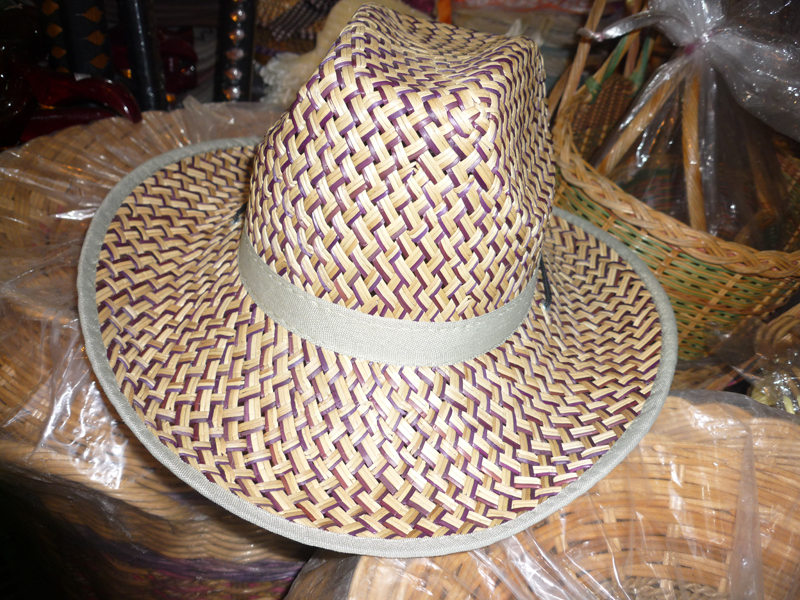
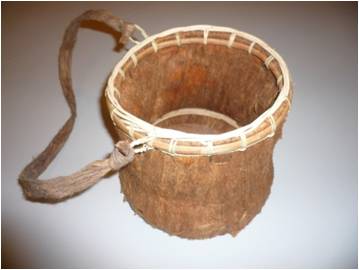
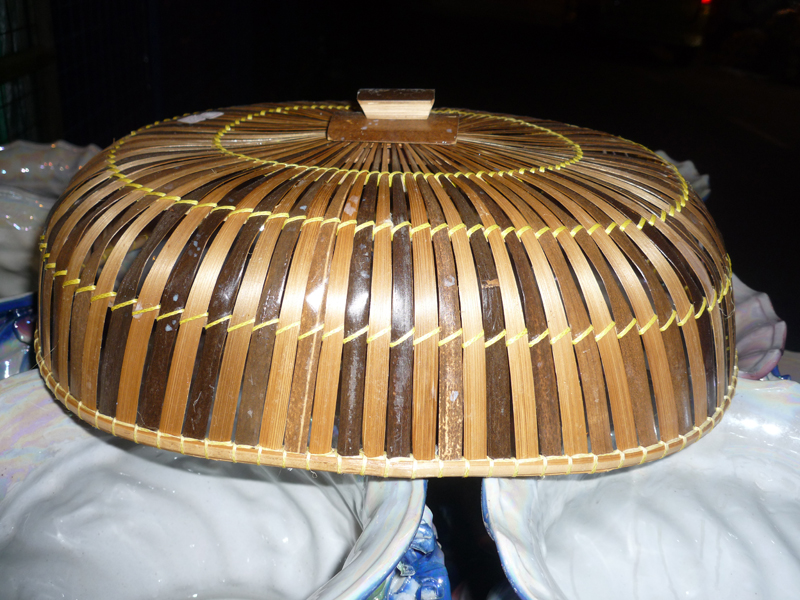
Fig. 59 : Examples of handicraft made from rattan and bamboo.
References
- Sulaiman, M.R., Somchit, M.N., Israf, D.A., Ahmad, Z. & Moin, S. 2004. Antinociceptive effect of Melastoma malabathricum ethanol extract in mice Fitoterapia 75 (7-8) : 667-672.
- Tongkul, F. 2002. Traditional systems of indigenous peoples of Sabah, Malaysia: Wisdom accumulated through generations PACOS Trust 64pp.
- Clarke, C. & Ch’ien, L. 2004. A pocket guide of pitcher plants of Sarawak Natural History Publication 81pp.
- Julius, A. 2006. Systematic study on the genus Plagiostachys Ridl. (Alpioniodeae: Zingiberaceae) of Borneo. MSc. Thesis Universiti Malaysia Sabah 202pp. (Unpublished).
- Frankel, O.H., Brown, A.H.D. & Burdon, J.J. 1995. The Conservation of Plant Biodiversity Cambridge University Press 299pp.
- Russell, T. & Cutler, C. 2004. The World Encyclopedia of Trees Lorenz, UK.
- Kardong, K.V. 2005. An introduction to biological evolution. Boston: McGraw-Hill, 322p.
- Anton, A. & Alexander, J. 1998. Limnology of Maliau Basin In : Maryati Mohamed, Waidi Sinun, Ann Anton, Dalimin, M.N. & Abdul Hamid Ahmad (Eds.) Maliau Basin Scientific Expedition 1996 Universiti Malaysia Sabah pp:29-36.
- Sato, H., Anton,A. & Kumano,1999. Freshwater algae of Tabin Wildlife Reserve, Sabah In : Maryati Mohamed, Andau, M., Dalimin, M.N. & Titol, P.M. (Eds.) Tabin Scientific Expedition Universiti Malaysia Sabah pp: 19-32
- Salleh, A., Nadia, M.K., Haritina, M.A. & Sarini, A.W. 2006. Diversity of algae in the Hulu Selai River and its tributaries, Endau-Rompin National Parks, Johor, Malaysia In :Mohamed, H. & Zakaria-Ismail, M. (Eds.) The forests and biodiversity of Selai, Endau-Rompin University of Malaya pp:55-70.
- Ismail, A., Talib, K., Hamid, N. & Asmida, I. 2001. Kepelbagaian alga dan tumbuhan akuatik di Tasik Meranti Wang Kelian, Kedah In: Faridah Hanum, I., Kasim Osman & Latiff, A.M. (Eds.) Kepelbagaian Biologi dan Pengurusan, Taman Negeri Perlis : Sekitaran Fizikal dan Biologi Wang Kelian. Jabatan Perhutanan Perlis pp: 195-202.
- Akin, S. & Suleiman, M. 1998. Some bryophytes of the Maliau Basin Conservation Area, Sabah In : Maryati Mohamed, Sinun, W., Anton, A., Dalimin, M.N. & Ahmad, A.H. (Eds.) Maliau Basin Scientific Expedition Universiti Malaysia Sabah pp:49-56.
- Suleiman, M., Andi Maryani, M. & Nooraini @ Sunarti, M. 2003. Preliminary list of mosses from Lower Kinabatangan In : Maryati Mohamed, Takano, A., Goossen, B. & Rajah Indran (Eds.) Lower Kinabatangan Scientific Expedition 2002 Universiti Malaysia Sabah pp:73-76.
- Damanhuri, A., Yong, K.T., Nor Hidayah, Maideen, H., Jaafar Tahrim & Solehan Saorani. 2005. Flora lumut jati di Gunung Stong In : Ismail, S.M., Taha, D., Shafie, A.S., Md. Som, J., Faridah Hanum, I. & Latiff, A.M. (Eds.) Taman Negeri Gunung Stong : Pengurusan, Persekitaran Fizikal, Biologi dan Sosio-ekonomi Jabatan Perhutanan Semenanjung Malaysia pp:261-282.
- Damanhuri, A. & Maideen, H. 2001. Mosses of Perlis State Park at Wang Kelian, Perlis, Peninsular Malaysia In : Faridah Hanum, I., Kasim Osman & Latiff, A.M. (Eds.) Kepelbagaian Biologi dan Pengurusan, Taman Negeri Perlis : Sekitaran Fizikal dan Biologi Wang Kelian Jabatan Perhutanan Perlis pp: 203-215.
- Yong, K.T., Maideen, H., Nizam, M.S. & Damanhuri, A. 2002. Mosses of Wang Mu Forest Reserve, Perlis State Park In : Latiff, A.M., Osman, K, Rahaman, Y.A. & Faridah Hanum, I. (Eds.) Biodiversity and Management of Perlis State Park : Physical, Biological and Social Environment of Wang Mu Jabatan Perhutanan Perlis pp :239-249.
- Mohamed, H. & Yong, K.T. 2006. The moss flora of south western Endau-Rompin National Park, Johor, Malaysia In :Mohamed, H. & Zakaria-Ismail, M. (Eds.) The forests and biodiversity of Selai, Endau-Rompin University of Malaya pp: 75-90.
- Akin, S. 1998. Checklist of ferns and fern allies in the Maliau Basin Conservation Area In : Maryati Mohamed, Sinun, W., Anton, A., Dalimin, M.N. & Ahmad, A.H. (Eds.) Maliau Basin Scientific Expedition Universiti Malaysia Sabah pp: 57-62.
- Suzuki, T. & Magintan, D. 1999. Notes on the pteridophytes collected from Tabin Wildlife Reserve, Lahad Datu, Sabah In : Maryati Mohamed, Andau, M., Dalimin, M.N. & Titol, P.M. (Eds.) Tabin Scientific Expedition, Universiti Malaysia Sabah pp:33-42.
- Holttum, R.E. 1996. Ferns In: Wong, K.M. & Phillipps, A (Eds.) Kinabalu : Summit of Borneo The Sabah Society & Sabah Parks, Kota Kinabalu, Sabah, Malaysia pp:151-166.
- Maideen, H., Faisal, A., Jaman, R. Damanhuri, A & Latiff, A.M. 2005. Kepelbagaian pteridofit di hutan Simpan Gunung Stong In : Ismail, S.M., Taha, D., Shafie, A.S., Md. Som, J., Faridah Hanum, I. & Latiff, A.M. (Eds.) Taman Negeri Gunung Stong : Pengurusan, Persekitaran Fizikal, Biologi dan Sosio-ekonomi Jabatan Perhutanan Semenanjung Malaysia pp: 283-291.
- Jaman, R., Maideen, H., Latiff, A.M., Damanhuri, A. & Rusea, G. 2001. A preliminary study of pteridophytes of Taman Negeri Perlis, at Wang Kelian In : Faridah Hanum, I., Kasim Osman & Latiff, A.M. (Eds.) Kepelbagaian Biologi dan Pengurusan, Taman Negeri Perlis : Sekitaran Fizikal dan Biologi Wang Kelian. Jabatan Perhutanan Perlis pp:
- Maideen, H., Jaman, R., Damanhuri, A. & Latiff, A.M. 2002. An addition to the Pteridophytes flora of Taman Negeri Perlis from Wang Mu Forest Reserve In : Latiff, A.M., Osman, K., Rahaman, Y.A. & Faridah Hanum, I. (Eds.) Biodiversity and Management of Perlis State Park : Physical, Biological and Social Environment of Wang Mu Jabatan Perhutanan Perlis pp :
- Maideen, H., Nur-Adilah, N., Damanhuri, A., Jaman, R., Miran, S. & Nazre, M. 2006. Pteridophytes of the south western Endau-Rompin National Park, Johor, Malaysia In : Mohamed, H. & Zakaria-Ismail, M. (Eds.) The forests and biodiversity of Selai, Endau-Rompin University of Malaya pp: 91-94.
- Sambamurty. 2005. A Textbook of Bryophytes, Pteridophytes, Gymnosperms and Paleobotany I.K. International, New Delhi, India 573pp.
- Frahm, J.P., Frey, W., Kurschner, H. & Menzel, M. 1996. Mosses and Liverworts of Mount Kinabalu Sabah Parks Publication No. 12 Sabah Parks Trustee, Kota Kinabalu, Sabah, 91pp.
- Suleiman, M., Damanhuri, A., Yong, K.T & Mohamad R.A.R. 2009. Mosses of Lojing Highlands Paper presented at Lojing Higland Scientific Expedition Seminar, Universiti Malaysia Kelantan, Kota Baru pp: 1 (Abstract).
- Omar, I.C. & Maryati Mohamed (Eds.) 2008. Lojing: Unveiling the treasures of South Kelantan Universiti Malaysia Kelantan 139pp.
- Wee, Y.C. 2005. Ferns of the tropics (Revised edition) Times Edition, Marshall Cavendish 191pp.
- Beaman, J.H. & Edwards, P.J. 2007. Ferns of Kinabalu : An introduction Natural History Publication 198pp.
- Latiff, A.M. 1994. Kepelbagain tumbuhan : Status Sumber Alam Malaysia Professorial Speech Universiti Kebangsaan Malaysia Publisher, Bangi, Selangor Malaysia 42pp.
- Ridley, N.H. 1922-1926 Flora of Malay Peninsula (Vols.1-5). L. Reeve & Co., Ltd., UK.
- Teoh, E.S. 2005. Orchids of Asia 3rd Edition Times Edition-Marshall Cavendish, Singapore 367pp.
- Widodo, E.S. & Maryati Mohamed 1998. The epiphytic ant-plant (Fam : Rubiaceae) of Maliau Basin In : Maryati Mohamed, Waidi Sinun, Ann Anton, Dalimin, M.N. & Abdul Hamid Ahmad (Eds.) Maliau Basin Scientific Expedition 1996 Universiti Malaysia Sabah pp:113-118.
- Khoo, K.C., Ooi, P.A.C. & Ho, C.T. 1991. Crop pest and their management in Malaysia Tropical Press Sdn. Berhad, Kuala Lumpur 242pp.
- Maryati Mohamed. 1988. Status afid (Aphididae : Homoptera) di Malaysia Prosiding Simposium Biologi Kebangsaan ke III, UKM pp: 254-268
- Maryati Mohamed. 1992. Aphids: Potential pests of Malaysia Proceedings of the International Plant Quarantine Congress ASEAN PLANTI pp : 283-289.
- Maryati Mohamed & Maheran Ishak. 1990. Aphis craccivora Koch (Homoptera : Aphididae) dan kesan infestasinya ke atas tanaman kacang panjang (Vigna sinensis) Kumpulan Kertas Kerja 17, Universiti Kebangsaan Malaysia pp: 102-110.
- Ong, C.A., Ting, W.P. & Varghese, G. 1978. Role of aphid vectors in the spread of chilli veinal mottle virus, Proc. Plant Protection Conf. pp: 53-60.
- Noraini Abd. Samad. 1985. Identity of chilly viruses in Malaysia MAPPS Newsletter 8(1):4.
- Mariate Ibrahim. 2003. Hubungan serangga dan periuk kera di Banjaran Crocker BSc. Thesis Universiti Malaysia Sabah 89pp. (Unpublished).
- Noriza@ Hazwani Mastikar. 2003. Hubungan semut dan periuk kera di Taman banjaran Crocker BSc Thesis, Universiti Malaysia Sabah 83pp. (Unpublished).
- MOSTE. 1997. Assessment of Biological Diversity in Malaysia Ministry of Science, Technology and the Environment 186pp.
- Acharya, J . 2008 Handbook of Algae Rajat Publication, New Delhi, India 289pp.
- Dahlan, T., Zulkifli, M., Suhaili R. & Noradli@Mohd. Adli, P. 2007. National Tree Planting Programme for Coastline protection under the 9th Malaysia Plan by Forestry Department of Peninsular Malaysia Proceedings of the International Seminar on Wetland and Sustainability Johor Baru, Johor, Malaysia pp: 631-376.
- Selvam, V., 2005. Impact assessment for mangrove and shelterbelt plantation, Tsunami for Tamil Naidu Forestry Project, MS Swaminathan Research Foundation, New Delhi India.
- Tanaka, S., Tokioka, T. & Osti, R. 2007. Tsunami disaster mitigation by coastal vegetation Proceedings of the International Seminar on Wetland and Sustainability, Johor Baru, Johor, Malaysia pp : 40-52.
- Hazebroek, H.P. & Abang Kashim b. Abang Morshidi. 2000. National Parks of Sarawak Natural History Publications (Borneo) 502pp.
- Maryati Mohamed, Sukarman, S. Aini Afifa, I., Zakaria H. & Rashid A.S. 2005. Avian fauna of Klias Forest Reserve, Beaufort, Sabah Proceedings of the Ninth Sabah Inter-Agency Tropical Ecosystem (SITE) Research Seminar pp:99-119.
- Bernard, H. & Zulhazman Hamzah. 2005. Distribution and abundance of proboscis monkey (Nasalis larvatus) in Klias peninsula : What had happen after a decade Proceedings of the Ninth Sabah Inter-Agency Tropical Ecosystem (SITE) Research Seminar pp: 89-98.
- FRIM-UNDP/GEF PSFP. 2004. Black water Jewel – South east Pahang Peat Swamp Project, FRIM-UNDP/GEF Peat Swamp Forest Project & The Pahang Forestry Dept. in Collaboration with Wetland International-Malaysia 58pp.
- Berhaman Ahmad & Sugau, J.B. 1999. A Checklist of the flora of the Klias-Binsulok peat Swamp Forests, Sabah, Malaysia In : Maryati, M., Mashitah, Y. & Unchi, S. 1999 Klias Binsulok Scientific Expedition Universiti Malaysia Sabah pp : 19-28.
- Brunig, E.F. 1974. Ecological studies in the kerangas forest of Sarawak and Brunei Borneo Literature Bureau, Kuching 373 pp.
- Whitmore, T.C. 1998. An introduction to Tropical Rain Forest (2nd edition) Oxford University Press 282pp.
- Lamb, A. 1996. Orchid In : Wong, K.M. & Phillipps, A (eds.) Kinabalu : Summit of Borneo The Sabah Society & Sabah Parks, Kota Kinabalu, Sabah, Malaysia pp:211-244.
- Beaman, J.H. & Beaman, R.S. 1990. Diversity and distribution patterns in the flora of Mount Kinabalu. In : Baas, P., Kalkman, K. & Geesink, R. (Eds) The plant diversity of Malesia. Kluwer Academic Publishers, The Netherlands pp:147-160
- Cranbrook, E. & Edwards, D.S. 1994. A tropical rainforest : the nature of biodiversity in Borneo at Belalong, Brunei The Royal Geographical Society & Sun Tree Publishing, Singapore 389pp.
- Wong, K.M. & Phillipps, A. (eds) 1996. Kinabalu Summit of Borneo : A revised and expanded edition Sabah Society & Sabah Parks 544pp.
- Kamaruddin Mat Salleh. 2007. Rafflesia : magnificient flower of Sabah Natural History Publication 48pp.
- Nais, J. 2001. Rafflesia of the world Sabah Parks Kota Kinabalu 243pp.
- Koorder, S.H. 1918. Botanish Overzicht Der Rafflesoaceae Van Nederlandsch-Indie, G. Kolff & Co., Batavia.
- Ghazali, I. & Lamri, A. 1996. Kinabalu Park : Research and conservation In : Wong, K.M. & Phillipps, A (Eds.) Kinabalu : Summit of Borneo The sabah Society & Sabah Parks, Kota Kinabalu, Sabah, Malaysia pp:475-482.
- Corner, E.J.H. 1996. The plant life of Kinabalu – An introduction In : Wong, K.M. & Phillipps, A (eds) Kinabalu : Summit of Borneo The Sabah Society & Sabah Parks, Kota Kinabalu, Sabah, Malaysia pp:115-121.
- Wee, Y.C. 1992. Guide to medicinal plants Singapore Science Centre 160pp.
- Clarke, C. 2001. A guide to the pitcher plants of Sabah Natural History Publication 40pp.
- Bawa, K.S. 1990. Plant-pollinator interactions in tropical rain forest Annu. Rev. Ecol Syst 21:399-422.
- Price, P.W. (translated by Maryati Mohamed). 1993. Ekologi Serangga (Insect Ecology) Dewan Bahasa dan Pustaka, Kuala Lumpur pp:154-159.
- Mahendran, C.S. 2004. Pollination ecology of figs at Lower Kinabatangan, Sabah BSc. Thesis, Universiti Malaysia Sabah (Unpublished).
- Foster, S. & Johnson, R.L. 2006. Desk reference to Nature’s medicines National Geography 415pp.
- Gao Xuemin. 2006. Modern Coloured illustrated compendium of material medica Iuzhou Publishing Groups 1033pp.
- WRI & CEE 1997. EnviroScope: A manual for College Teachers : Biodiversity Oxford University Press, Delhi, Calcutta, Madras, Mumbai, India 102pp.
- Levetin, E. & McMahon, K. 2006. Plants & Society, 4th edition. McGraw-Hill Publishers, Boston.
- Farnsworth, N.R., Akerele, O. & Bingel, A.S. 1985. Medicinal plants in therapy Bull World Health Organization 63 : 965-981.
- Burkill, I.H. 1935. A dictionary of the economic products of the Malay Peninsula Vol. 1&2 Ministry of Agriculture Malaysia, Crown Agents for the Colonies, London.
- Nik Idris, N. Y., Ujang, S., Bakri, D., Zainudin, A.I., Mat-Salleh, K. & Latiff, A.M. 2001. A preliminary phytochemical and biological screening of plants from Taman Negeri Perlis, Wang Kelian, Perlis In: , Faridah Hanum, I., Kassim O. & Latiff, A.M. (Eds.) Kepelbagaian Biologi dan Pengurusan Taman Negeri Perlis : Persekitaran Fizikal dan Biologi Wang Kelian Jabatan Perhutanan Perlis, Malaysia pp:285-292.
- Nik Idris N.Y., Ikram, M.S., Laily B.D., Ujang, S., Bakri, D., Zainudin, I., Mat-Salleh, K. & Latiff, A.M. 2002. Phytochemical and biological screening of plants from Hutan Simpan Wang Mu, Taman Negeri Perlis In : Latiff,A. M., Kassim, O., Yusoff, A.R. & Faridah Hanum, I. (Eds.) Biodiversity and management of Perlis State Parks : Physical, Biological and Social Environment of Wang Mu Jabatan Perhutanan Negeri Perlis, Malaysia pp:303-308.
- Ong, H.C. 2007. Medicinal plants of Endau Rompin National Park at Selai, Johor, Malaysia In : Mohamed, H. & Zakaria-Ismail,M. 2007 The forests and biodiversity of Selai, Endau Rompin, University of Malaya, Kuala Lumpur pp:115-120.
- Elora Poukin, Maryati Mohamed, Soffian Abu Bakar & Intan Azirah Abd,. Rahman. 2006. Traditional use of medicinal plants among the Tidong Communities in Lower Segama In : Maryati Mohamed, Bernard, H., Sofian Abu Bakar, Matsunaga, R. 2006 Lower Segama Scientific Expedition, Universiti Malaysia Sabah 151-168.
- Barnabas, G. 1999. Medicinal plants of the Sungai communities in the Upper Kinabatangan region, Sabah, Malaysia MSc . Thesis Universiti Malaysia Sabah (Unpublished).
- Julius, A., Mashitah Yusoff & Maryati Mohamed. 2003. Ethnobotani (Tumbuhan ubatan) suku kaum Orang Sungai di Hilir Kinabatangan Proceeding Lower Kinabatangan Scientific Expedition Seminar and Ethnobotany/Ethnozoology Workshop 2002 Universiti Malaysia Sabah pp: 21-25.
- Mariana Madun. 2005. Kajian penggunaan tumbuhan ubatan di kalangan penduduk suku kaum Brunei di Kg. Binsulok, Membakut, Sabah BSc. Thesis, Universiti Malaysia Sabah (Unpublished).
- Maryati Mohamed & Mashitah Yussoff. 1999. Herbal remedies in Malaysia in the 21st century Conference Proceeding : Herbal medicine into the new millennium, Southern Cross University Lismore, Australia 16-18 June 1999 pp:247-265.
- Fasihuddin A. & Hasnah R. 1993. Kimia hasilan semulajadi dan tumbuhan ubatan Dewan Bahasa dan Pustaka Kuala Lumpur.
- Julius, K.J. 1997. Of Tropical Forest Sc. 10(2):271-274.
- Latiff, A.M. 1991. Plant resources from natural products : An ethnobotanical survey . In : Medicinal products from tropical rainforest, Proceeding of Conference. Forest Research Institute Malaysia Kepong.
- Muhammad, Z. & Mustapha A.M. 1994. Traditional Malays Medicinal Plants. Fajar Bakti. Kuala Lumpur.
- MTC, 2008 : http://www.mtc.com.my
- Fu, S.T. 2006. Pitcher plants as tourism product in Ulu Padas BSc. Thesis Universiti Malaysia Sabah (Unpublished).
- Stern, K.R. 2000. Introduction Plant Biology, 8th Edition. McGraw Hill USA 589pp.
- Intan Azirah Abd. Rahman, Maryati Mohamed, Elora Poukin & Soffian Abu Bakar. 2006. The Tidong Comminities in Lower Segama In : Maryati Mohamed, Bernard, H., Sofian Abu Bakar, Matsunaga, R. 2006 Lower Segama Scientific Expedition, Universiti Malaysia Sabah pp:169-186.
- Sabah Musuem. 1993. Rice power and its magic : A brief introduction to the culture of Rice in Sabah, Dept. of Sabah Museum pp:9-10.
- Lack, A. & Evans, D. 2005. Plant Biology, 2nd Edition. Taylor & Francis Group, Oxford, UK, 351 pp.
- Ismail, S. 1995. Rumpai tropika : Impak Biologi dan Pengurusan Professorial Lecture Universiti Kebangsaan Malaysia, Bangi, Selangor, Malaysia 100pp.
- MOSTE. 1998. Malaysian National Policy on Biological Diversity Ministry of Natural Resources and Environment.
- Lim, T.W., Soehartono, T., Chen, H.K. 2004. Framing the Picture: Assessment of Ramin Trade in Indonesia, Malaysia and Singapore Traffic South East Asia, Selangor, Malaysia 128pp.
- Hong, L.T. & Rao, R. 2005. Genetic diversity, distribution and conservation of rattans in some Asian countries IPGRI-APO, Serdang, Malaysia 76pp.
- Flora Singapura. http://www.florasingapura.com/Horsfieldia_crassifolia.php
- Chai. P. K. 2000. A Check-list of Flora, Fauna, Food and Medicinal Plants, 42pp.
- World Timbers Inc. 2013. Woodworker. http://www.woodworkerssource.com/online_show_wood.php?wood=Pseudosindora%20palustris


